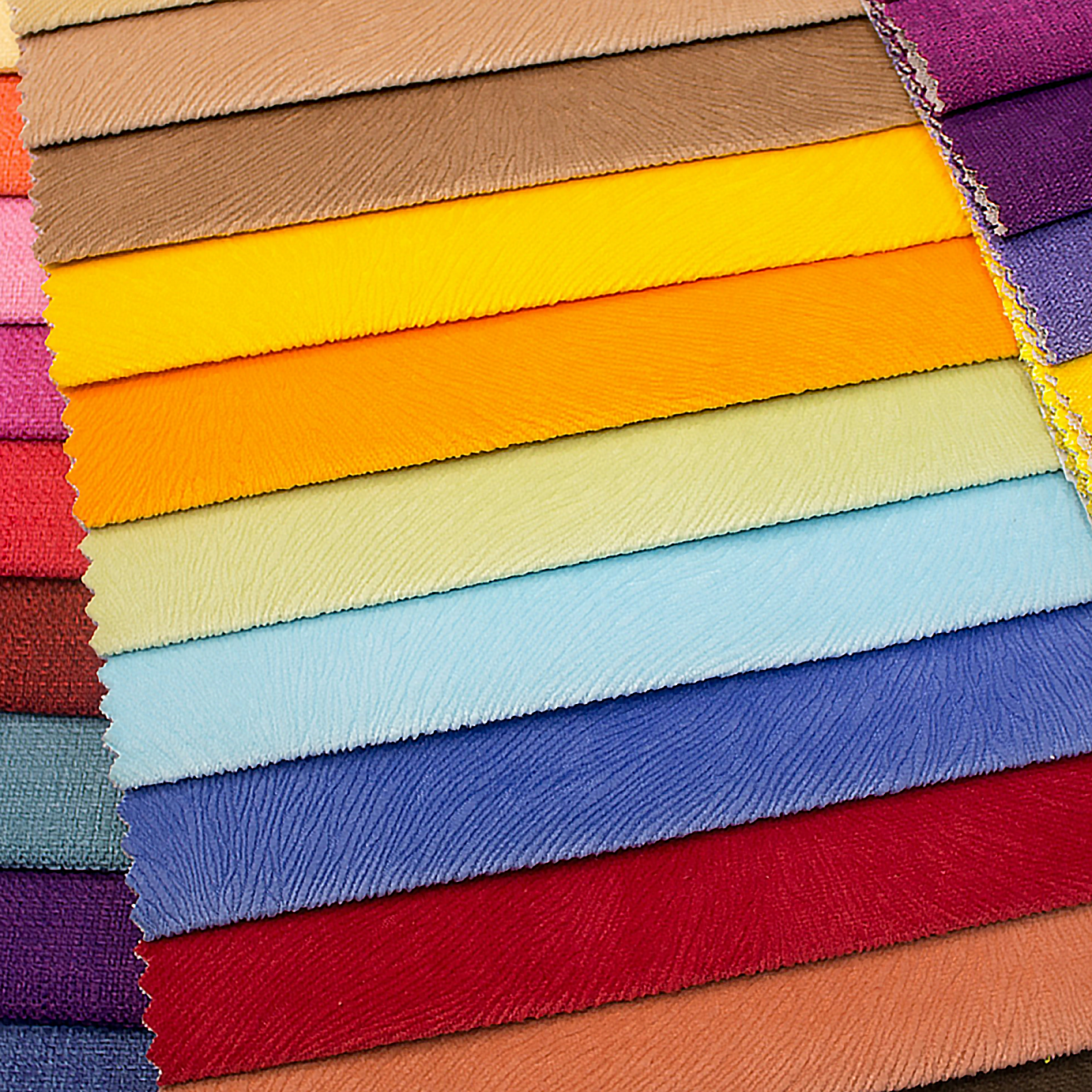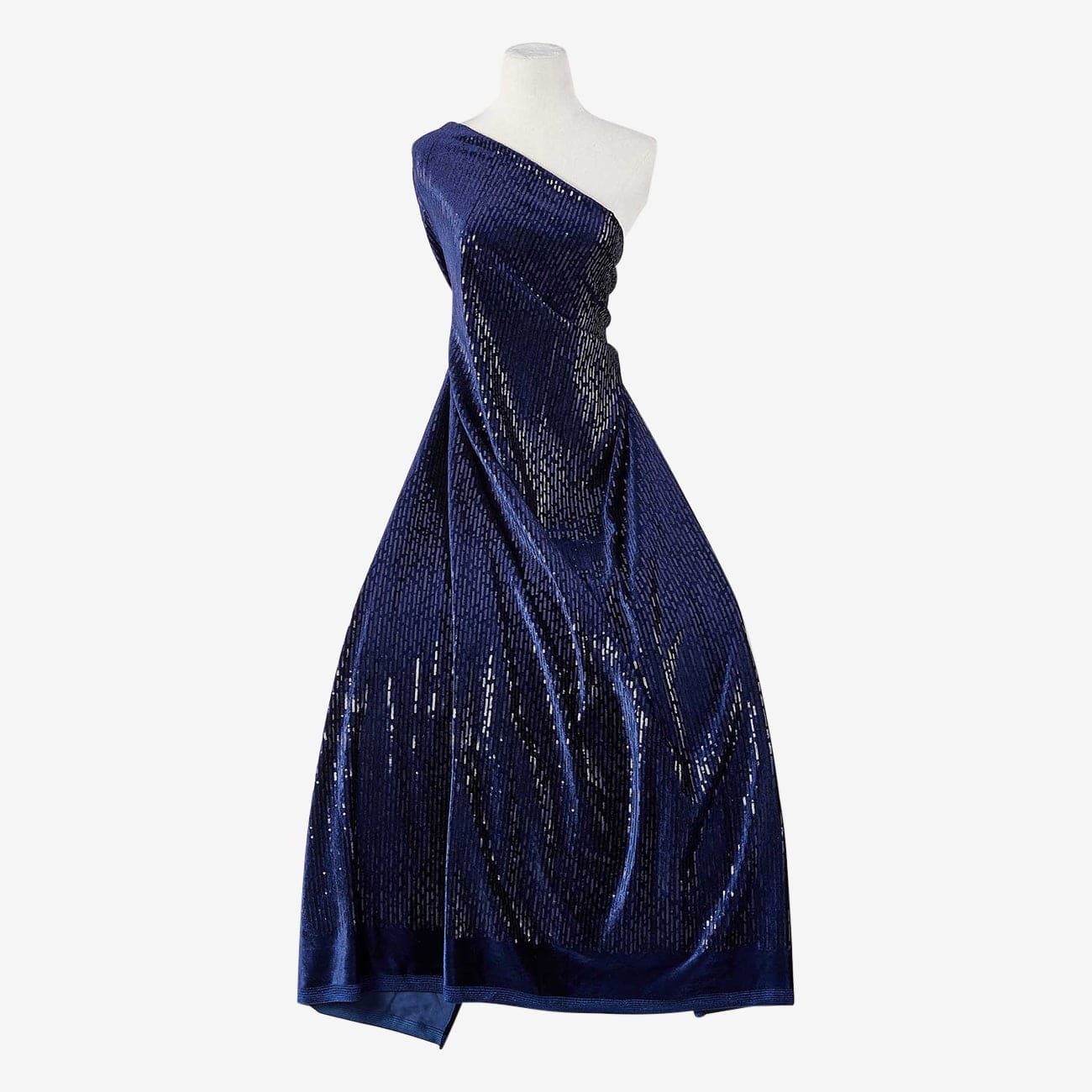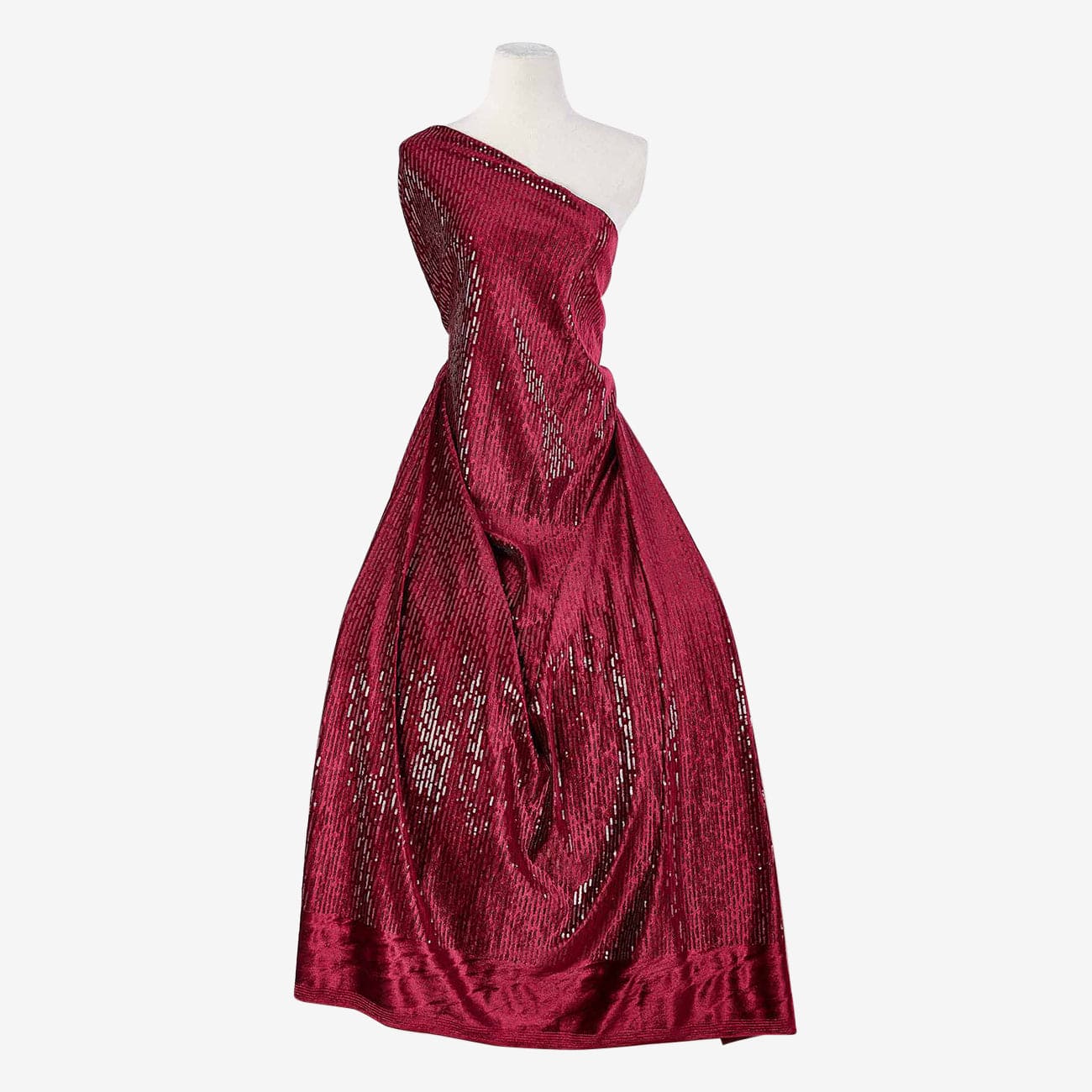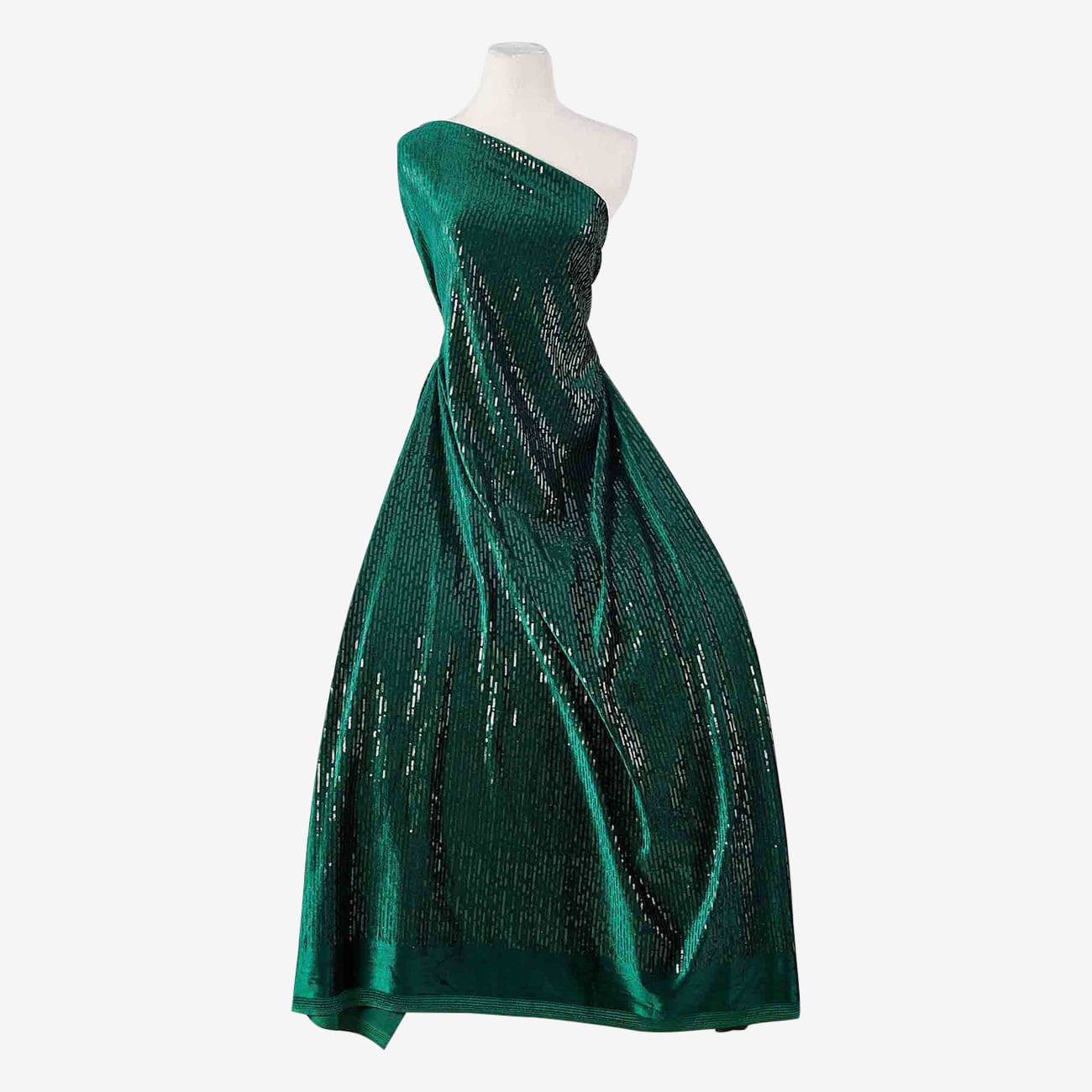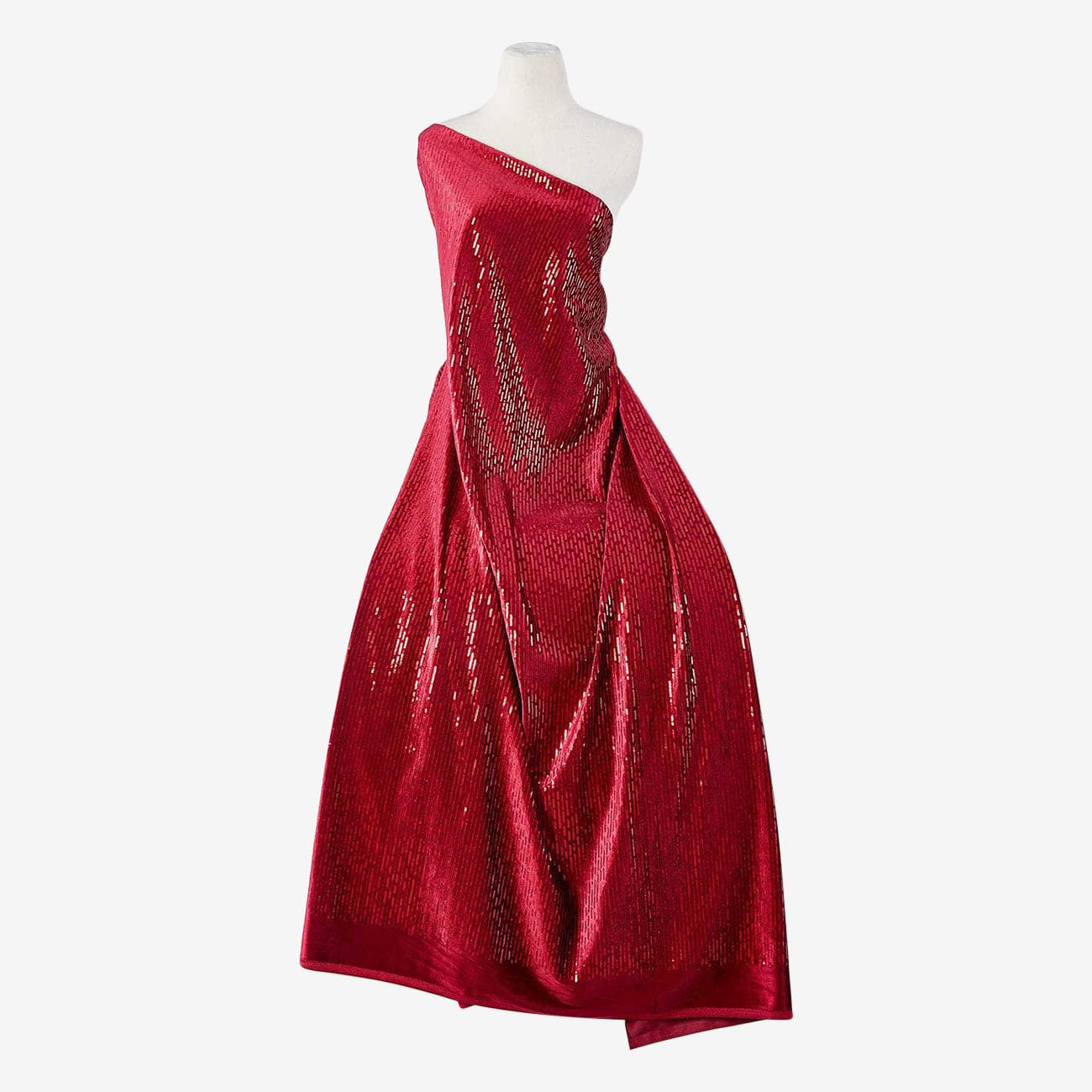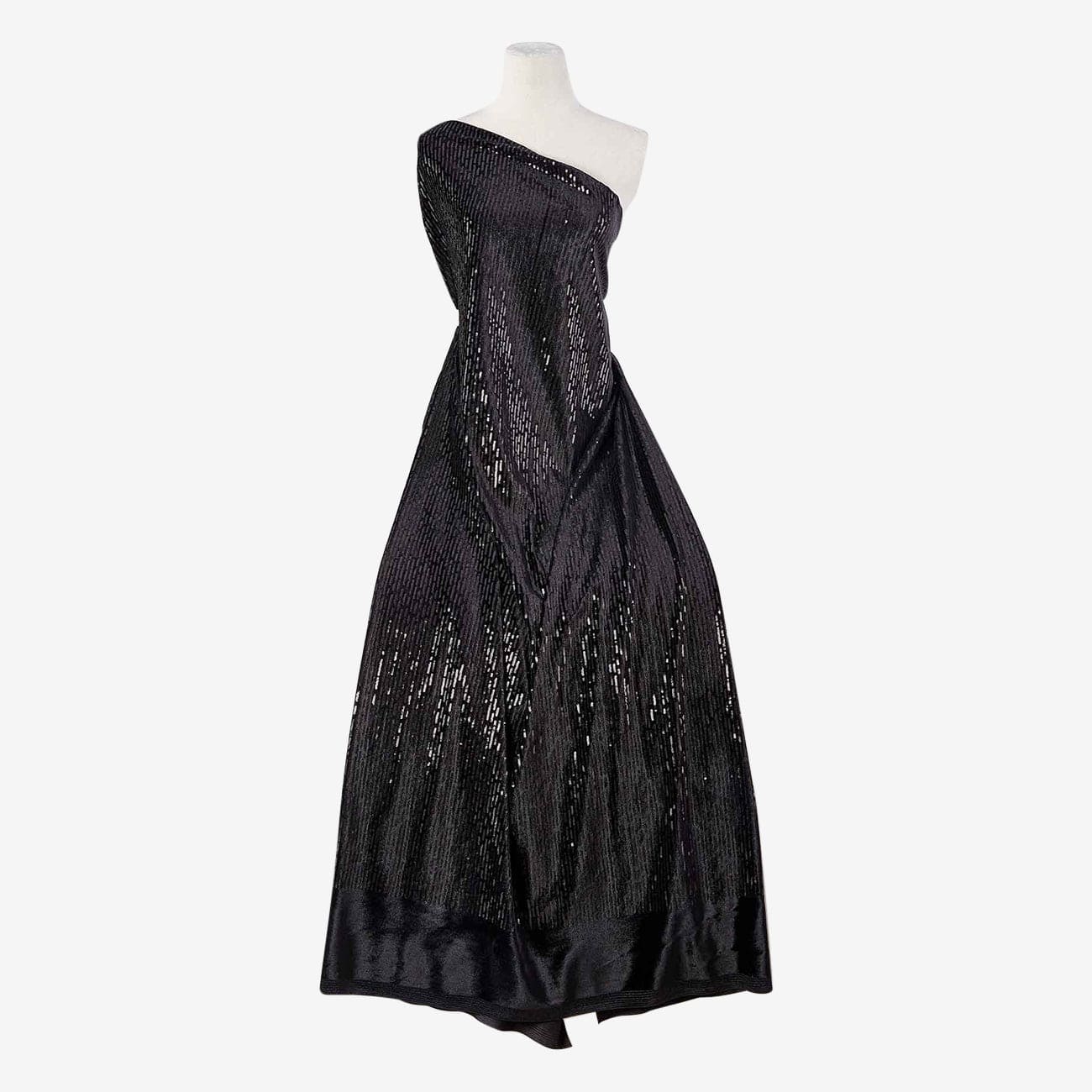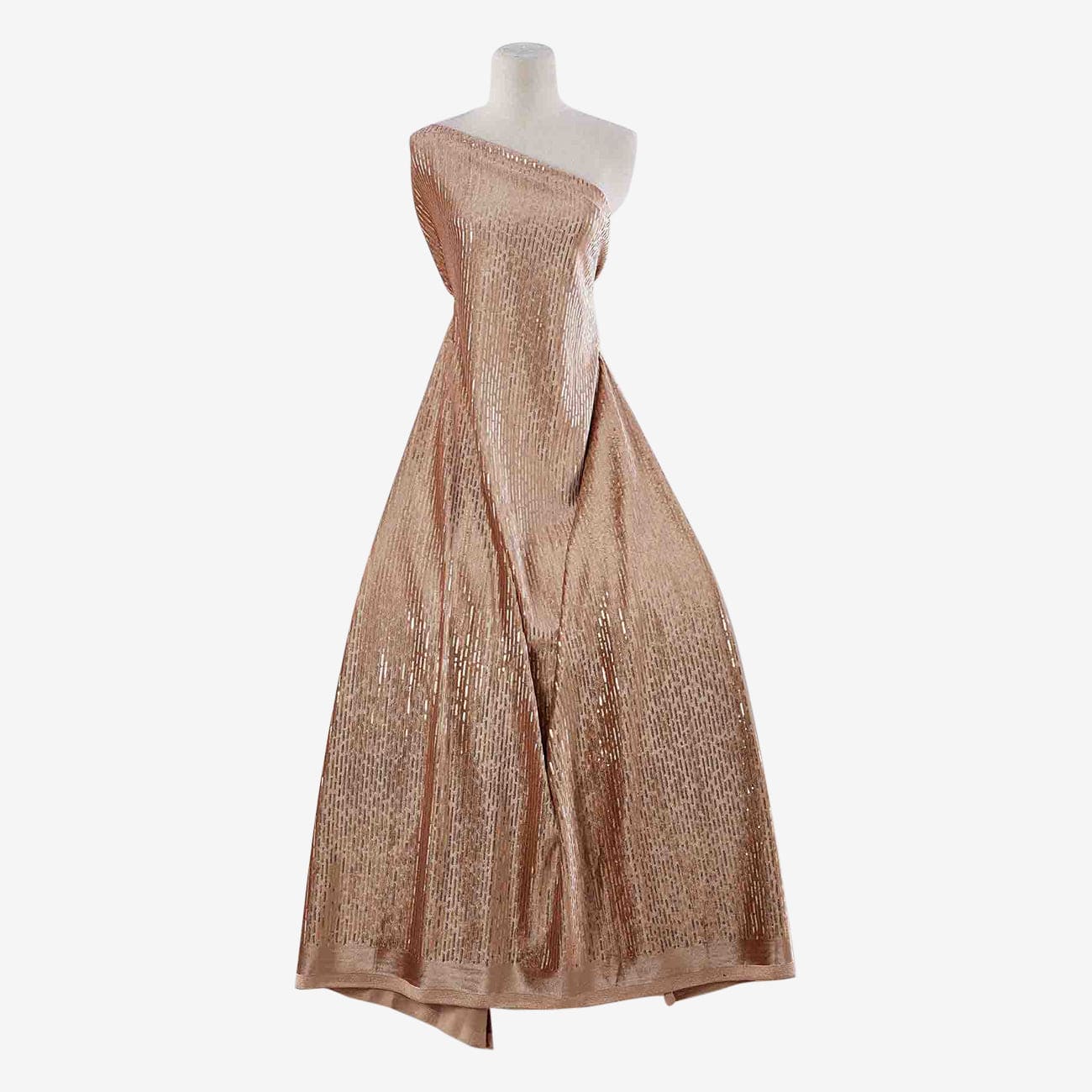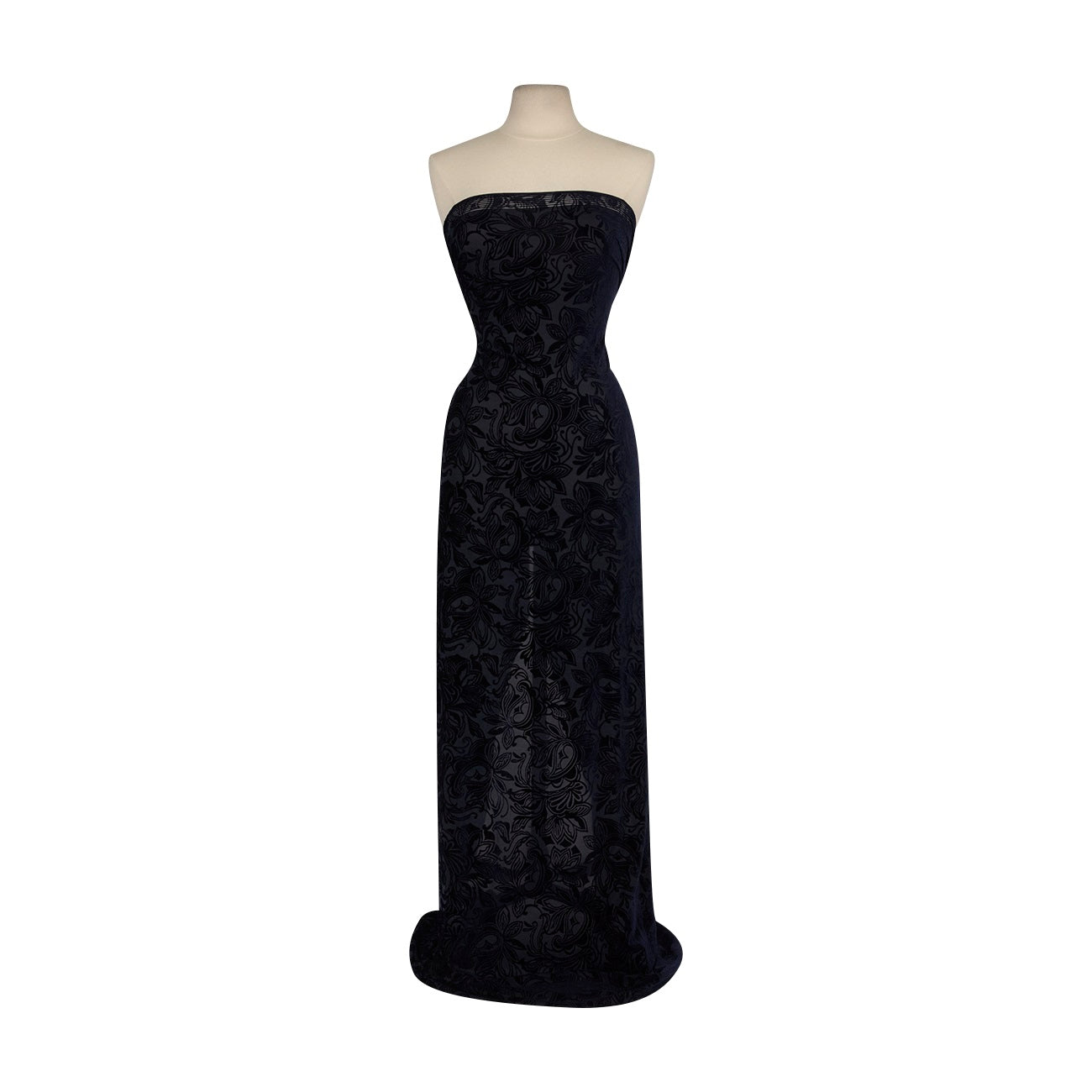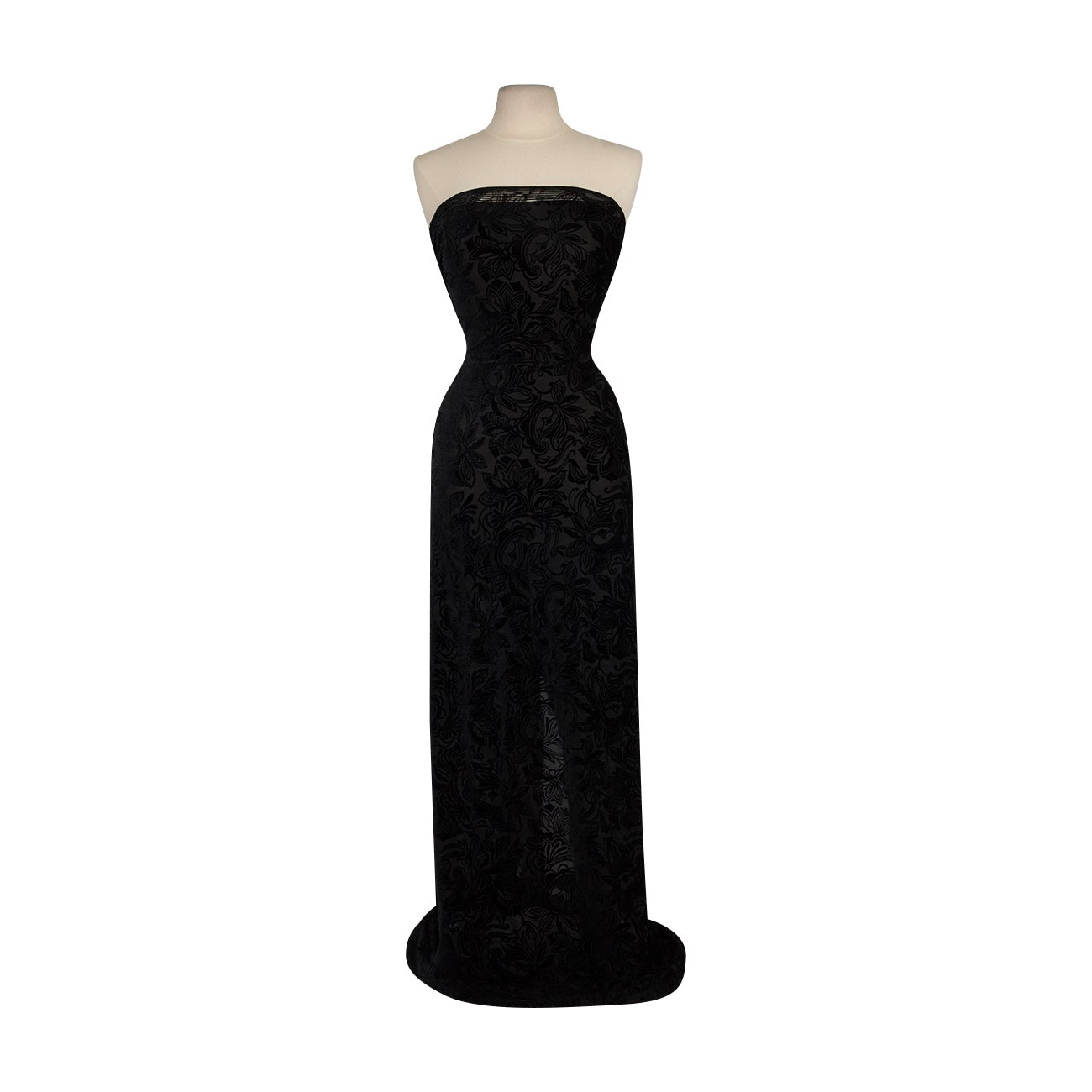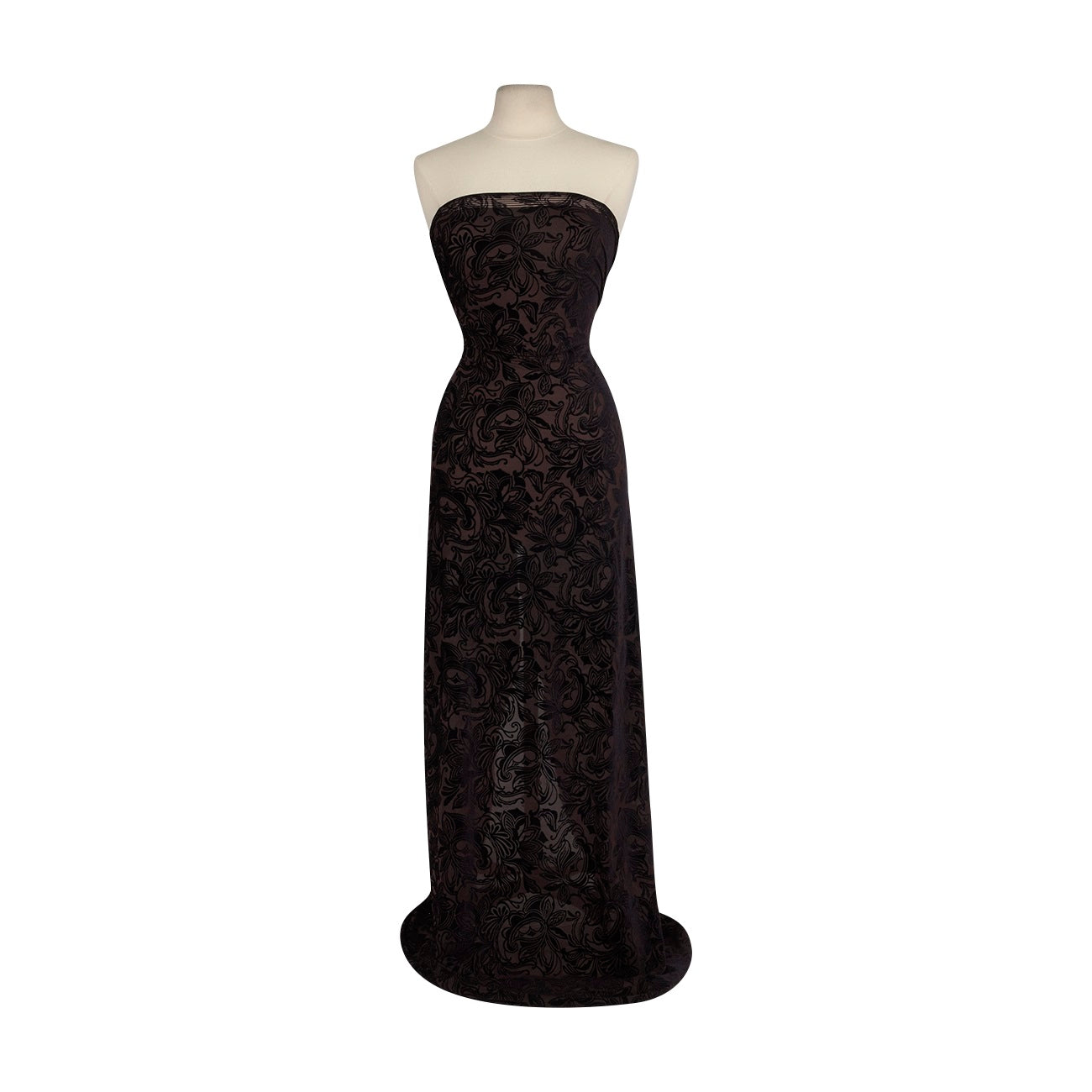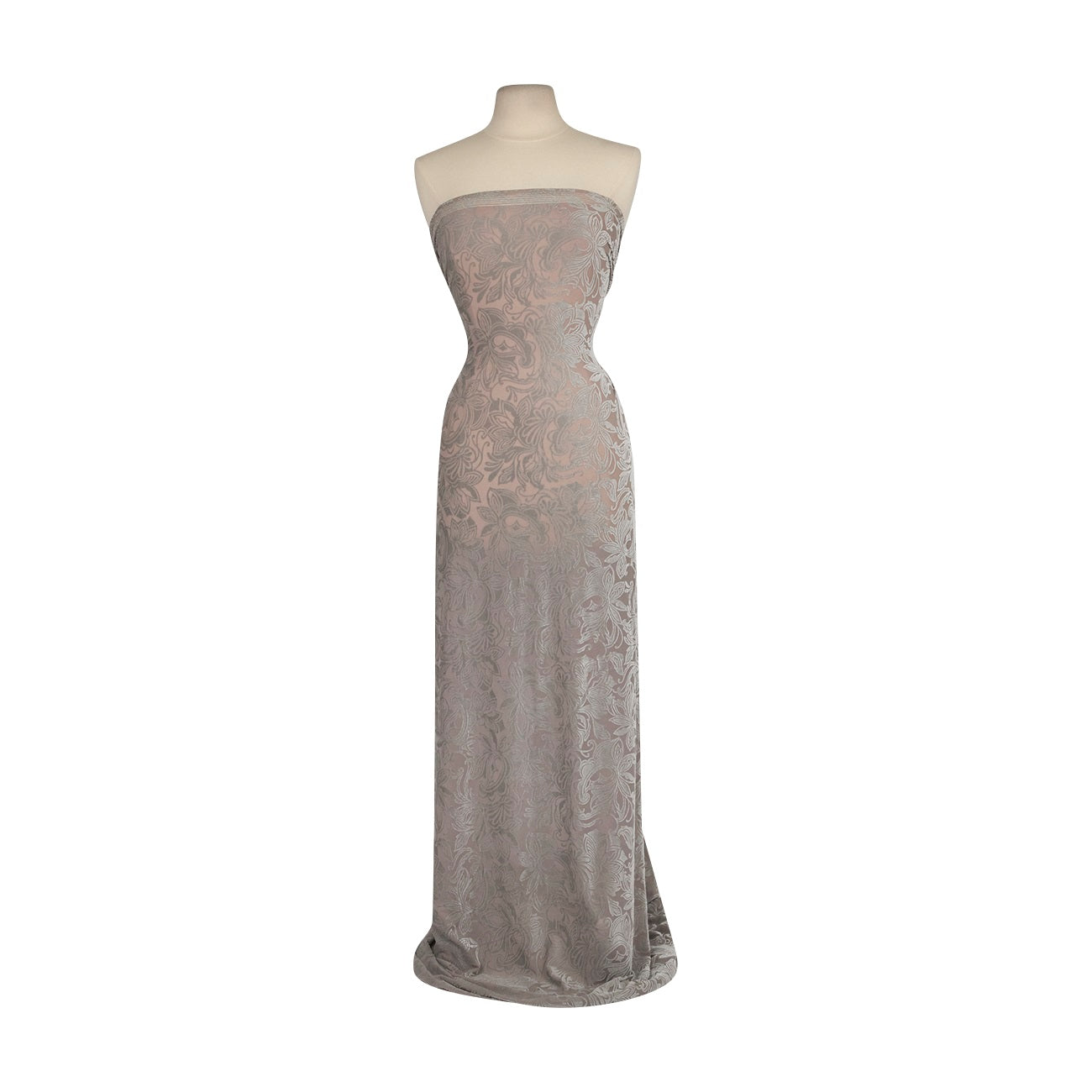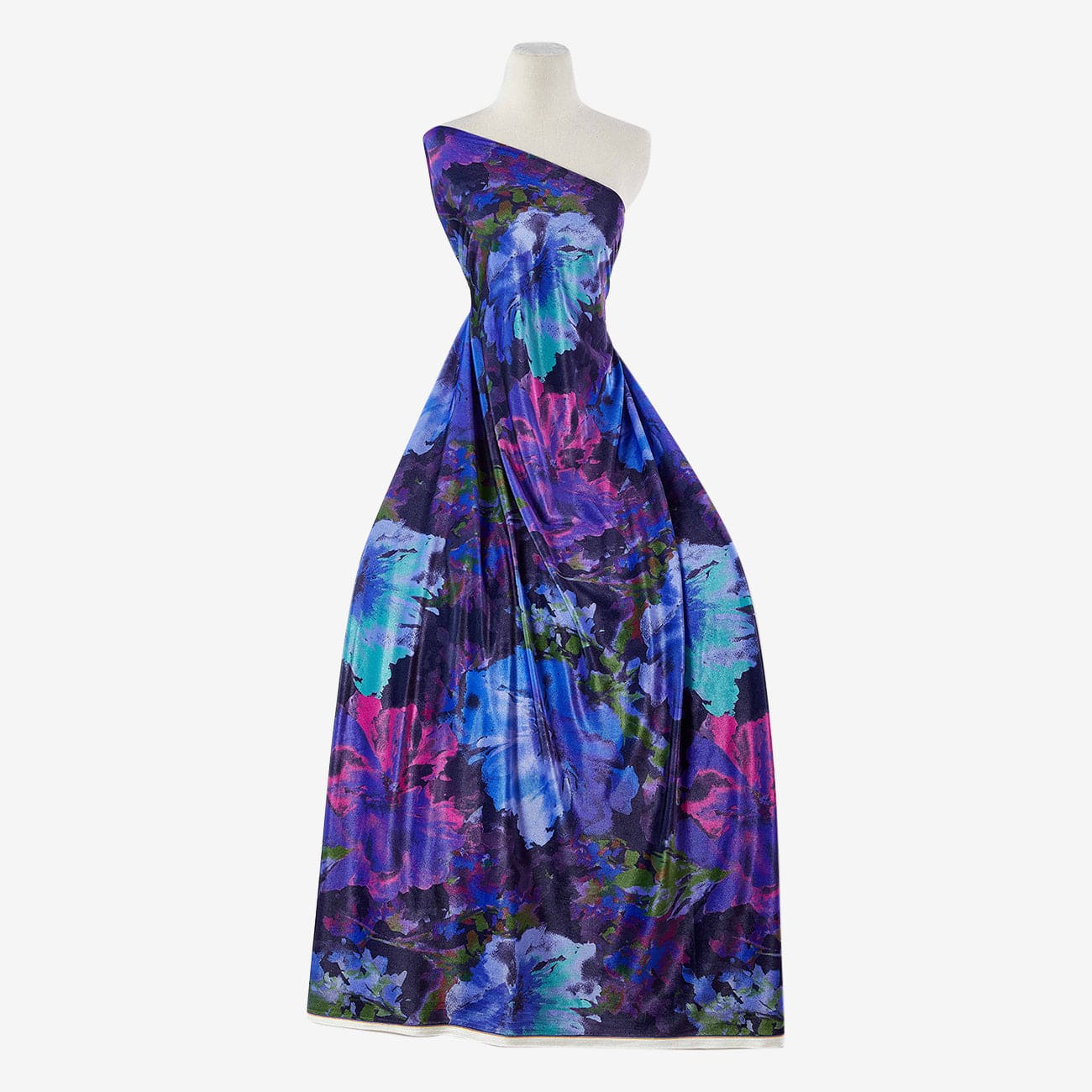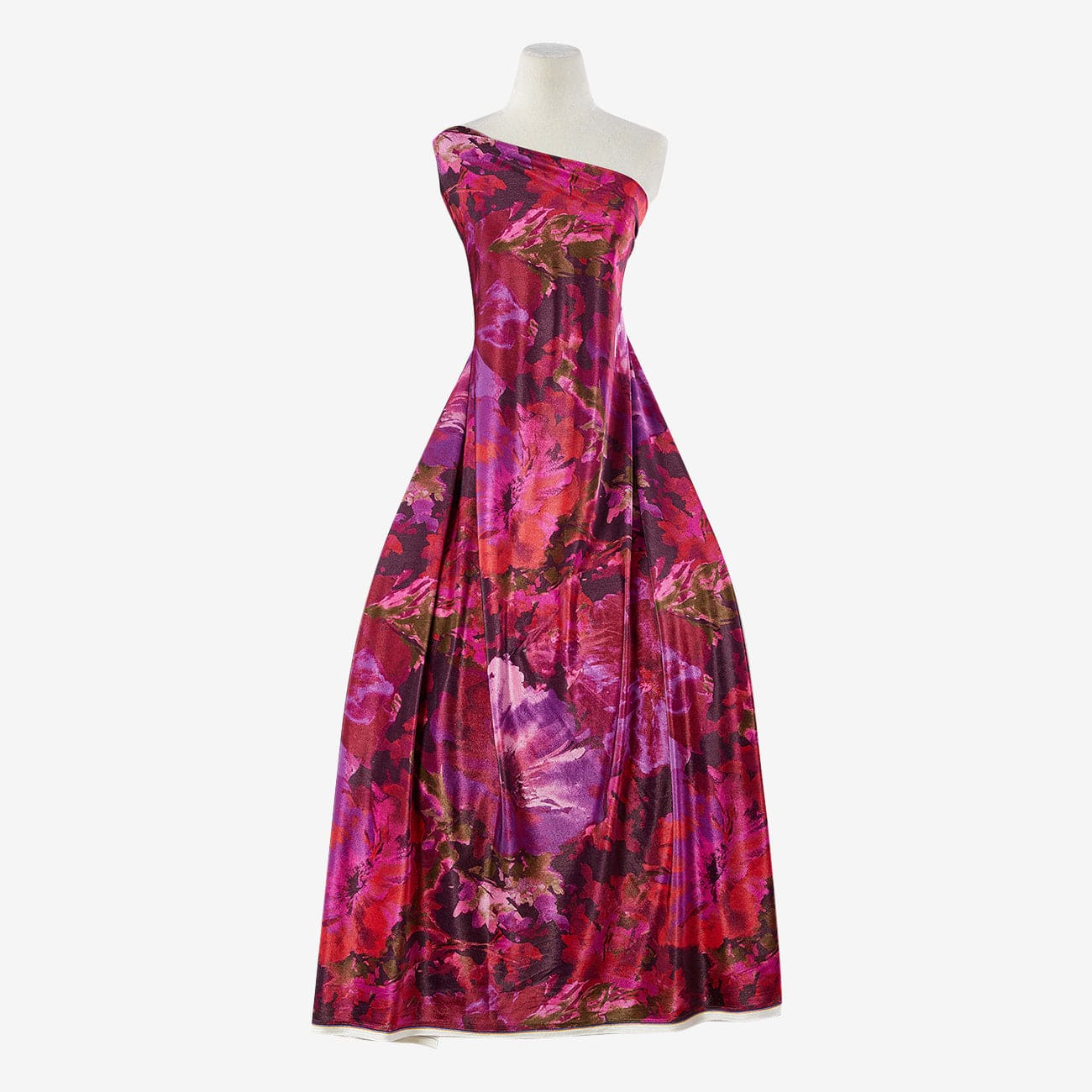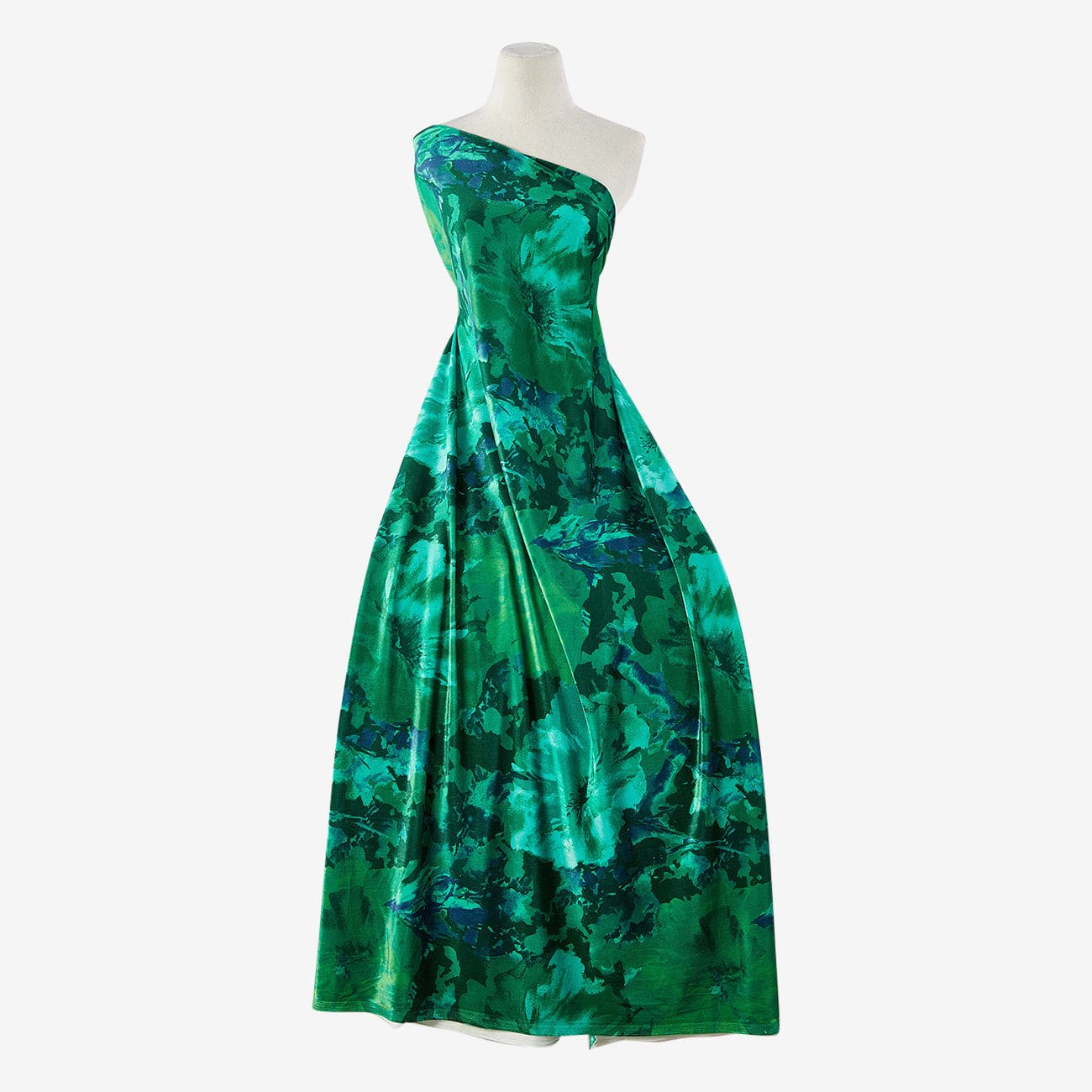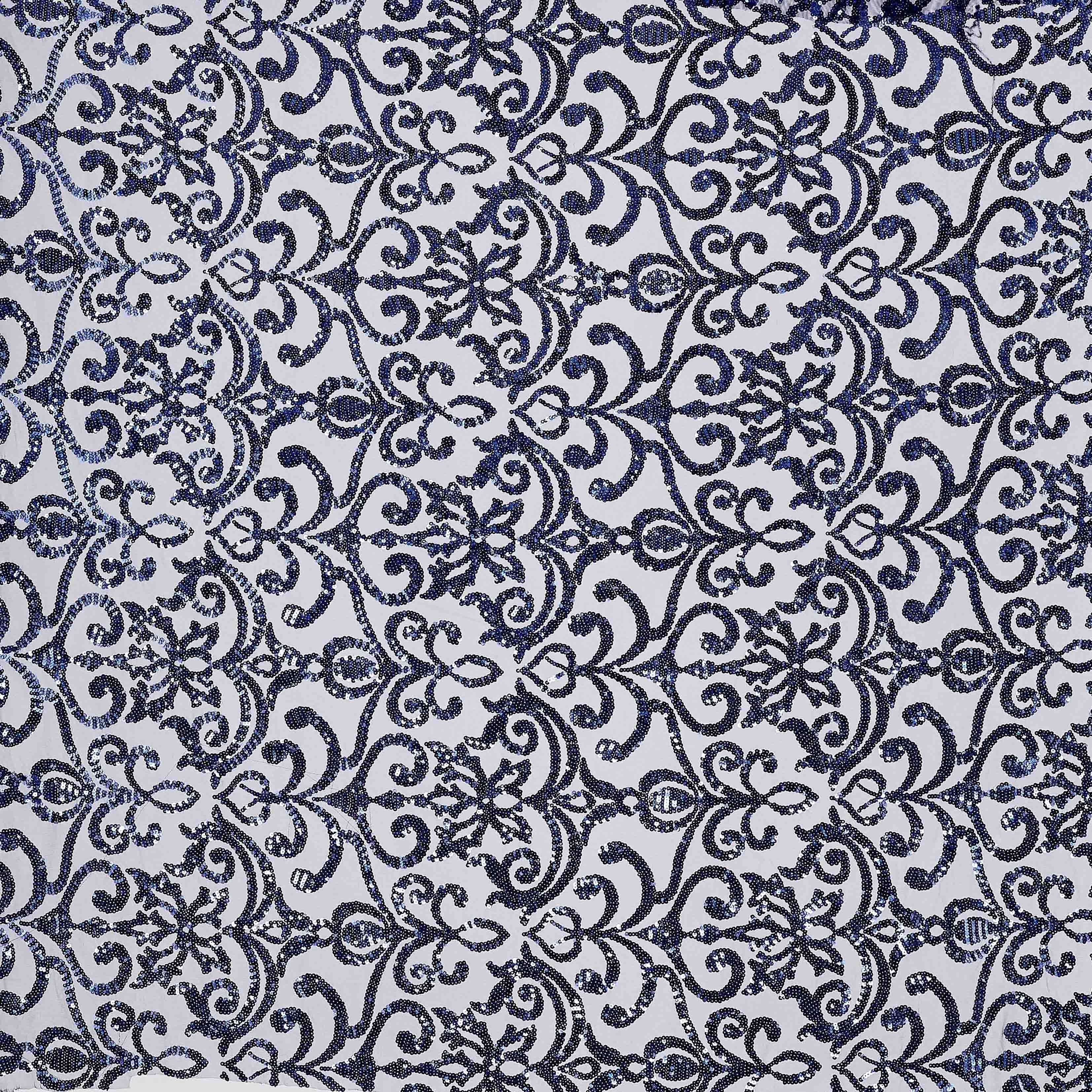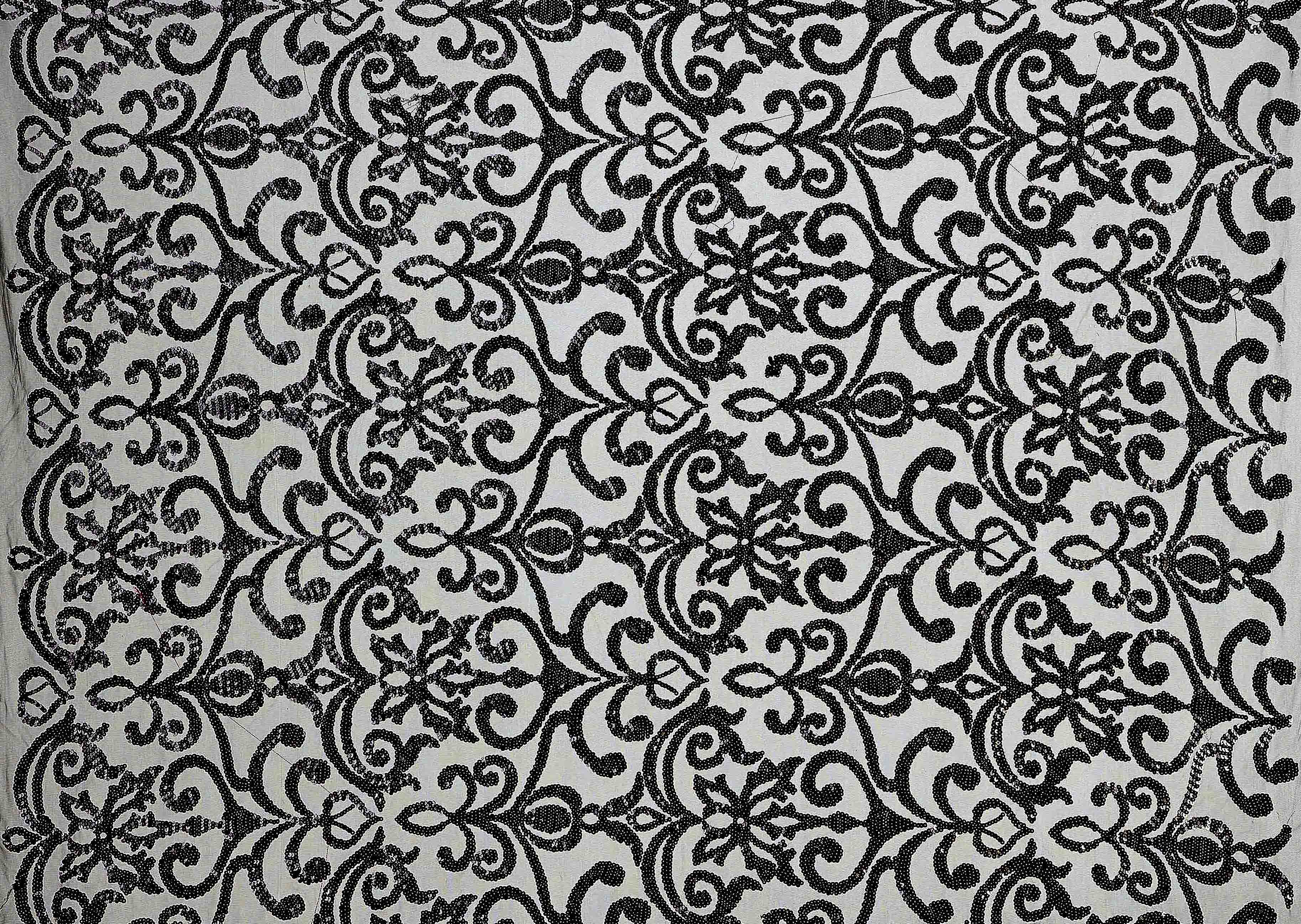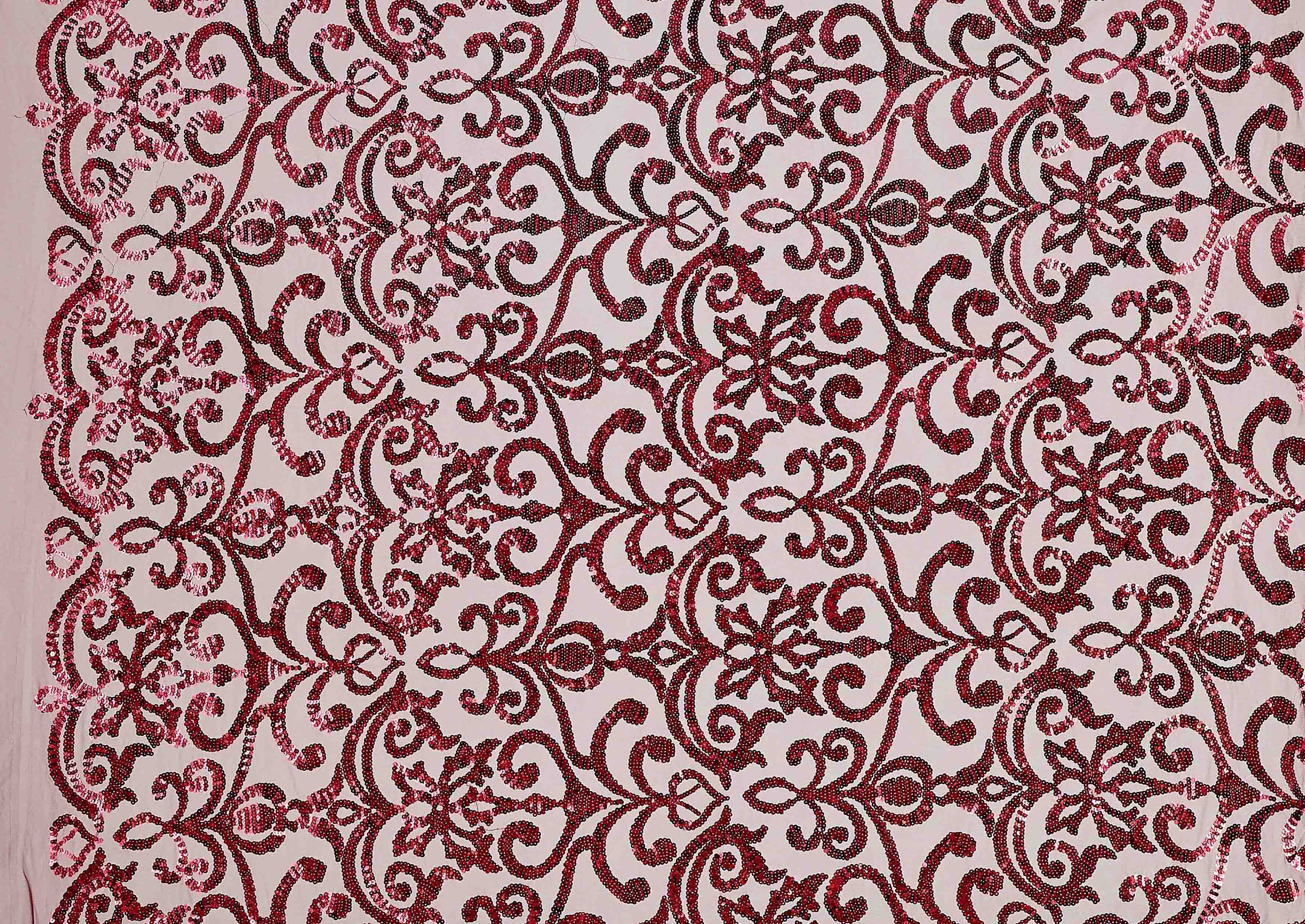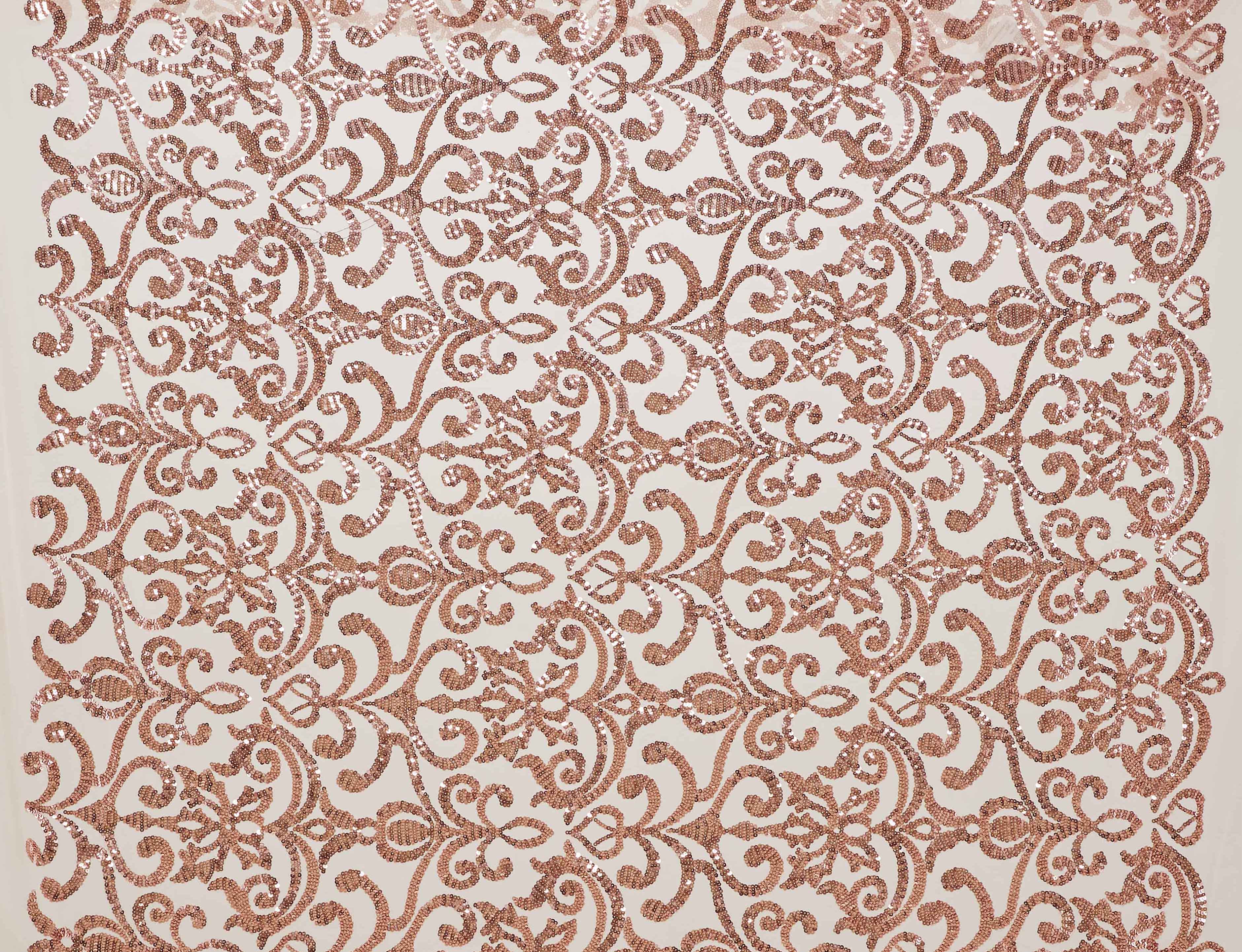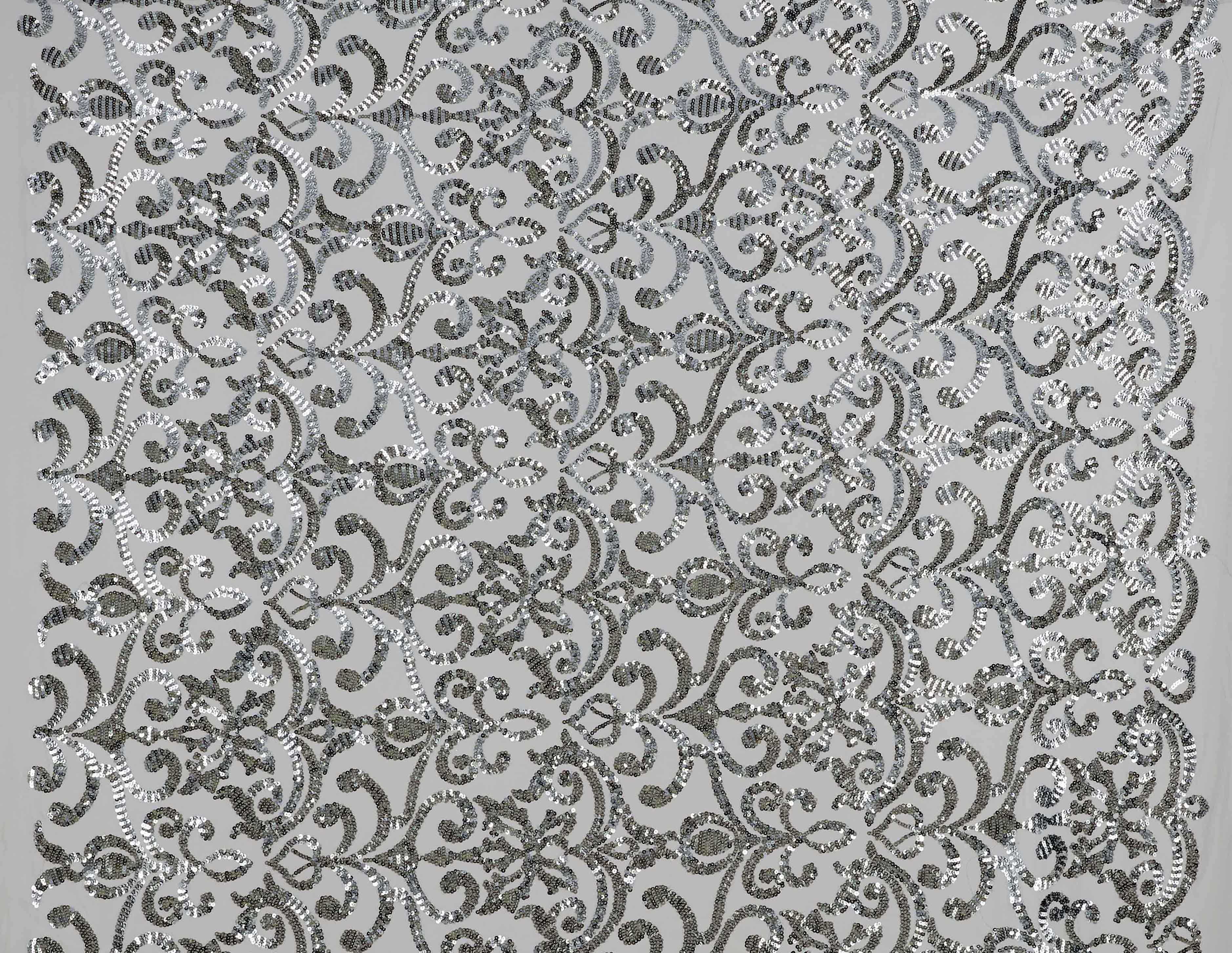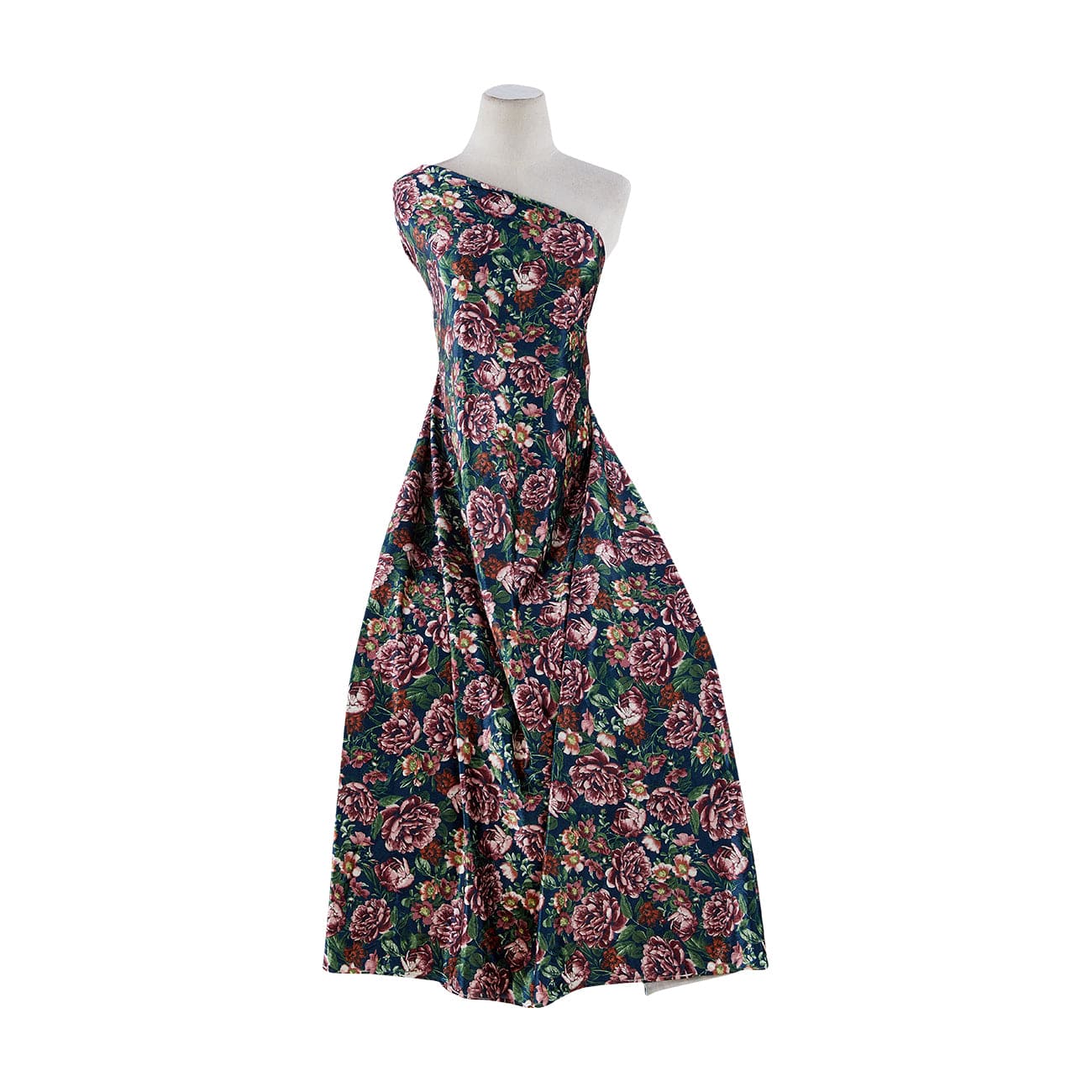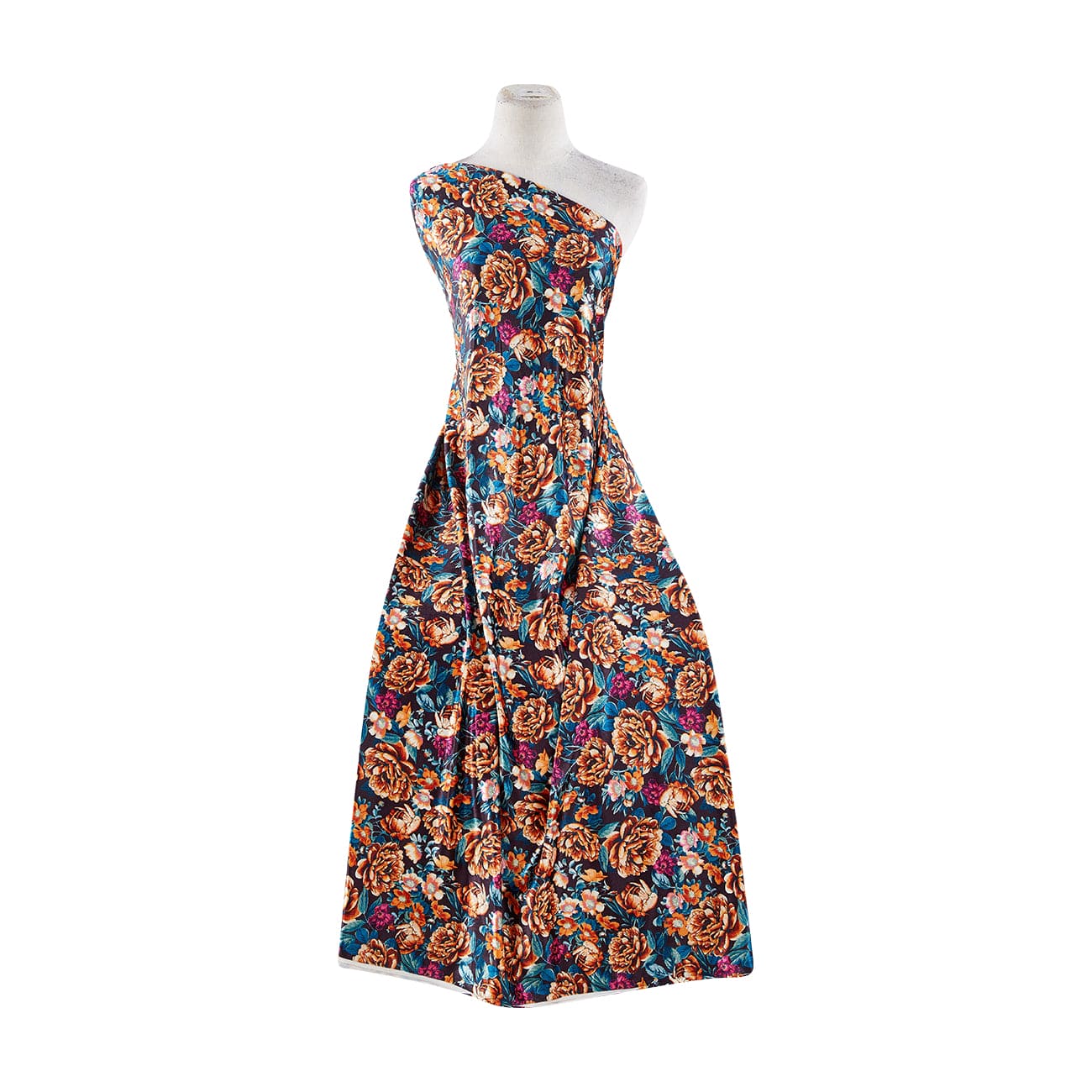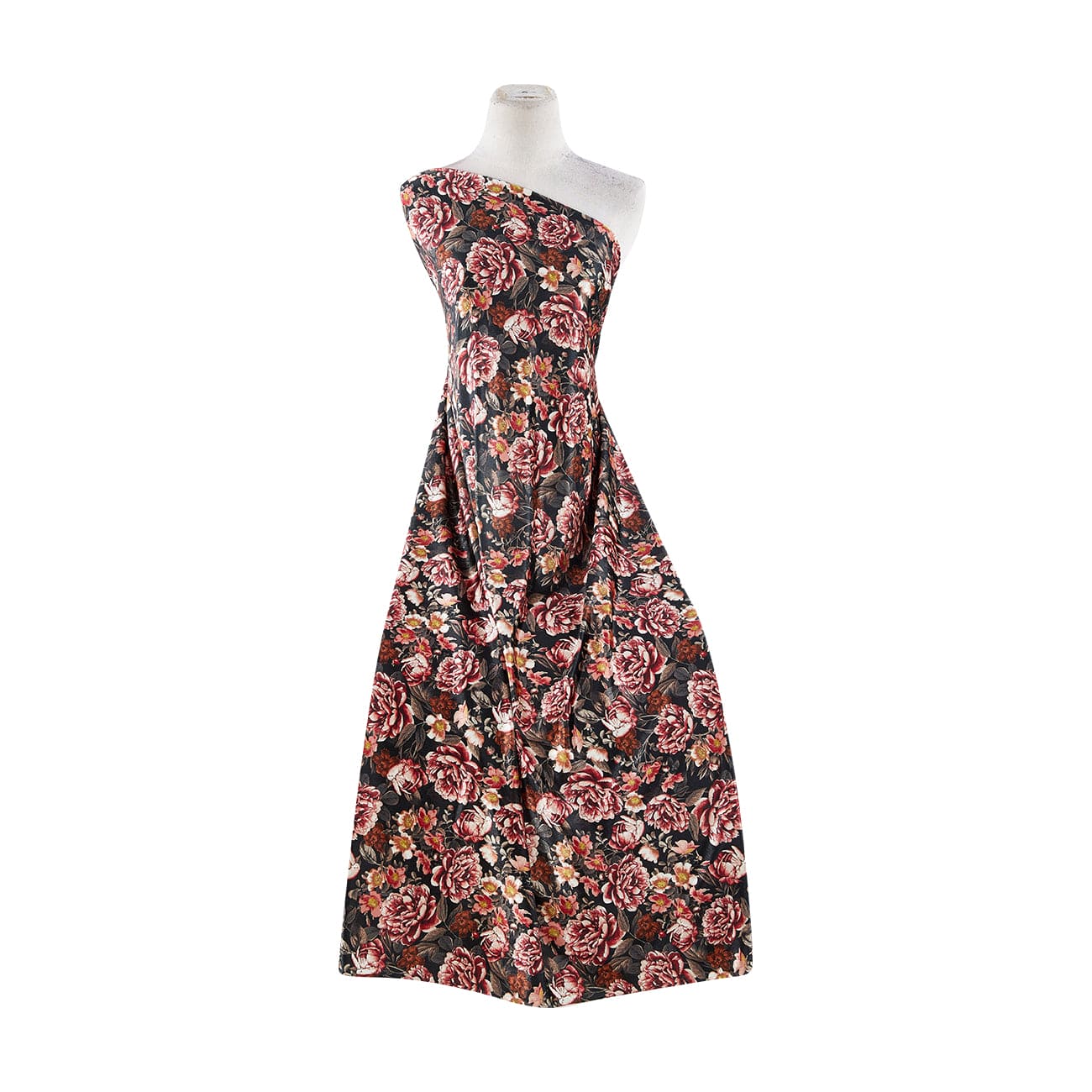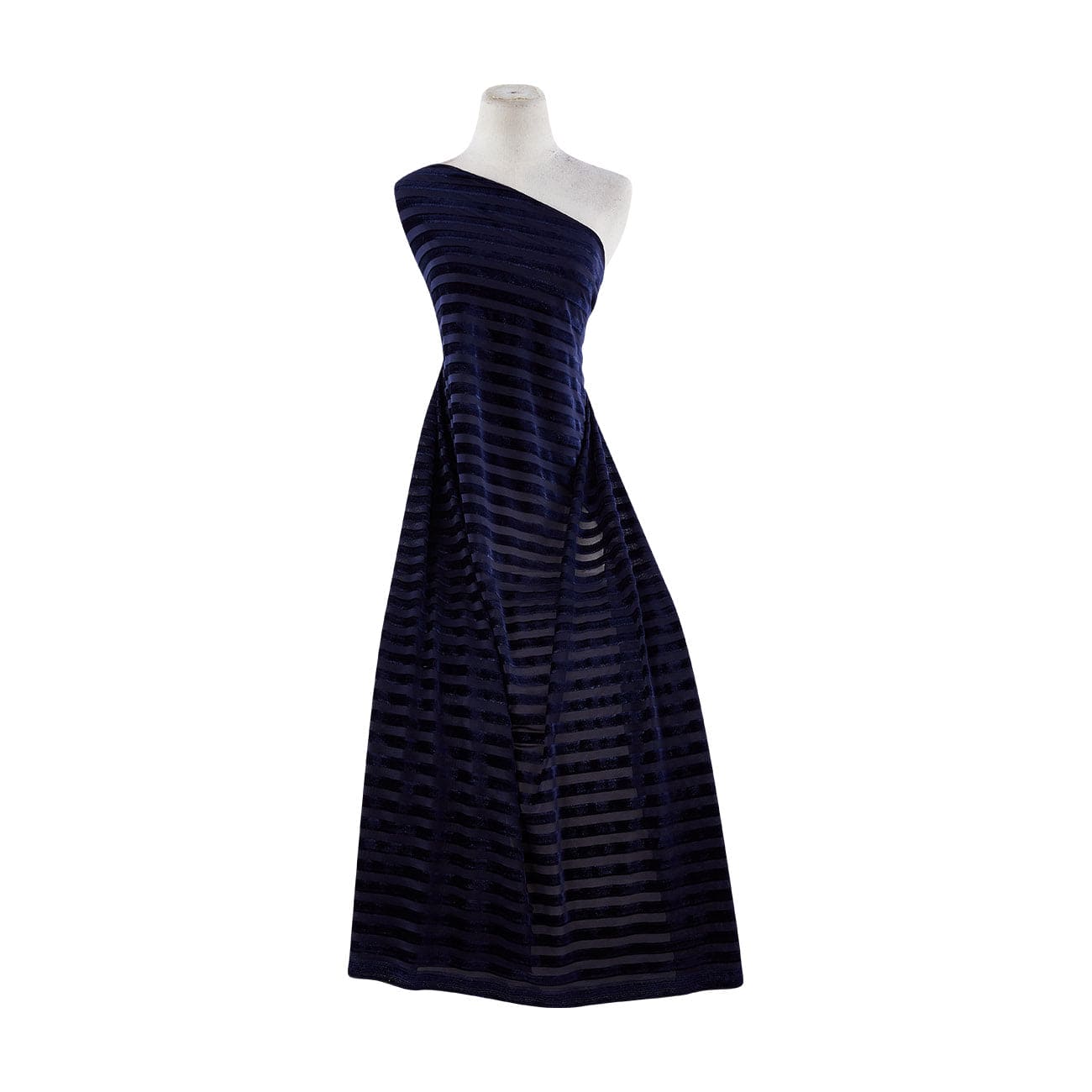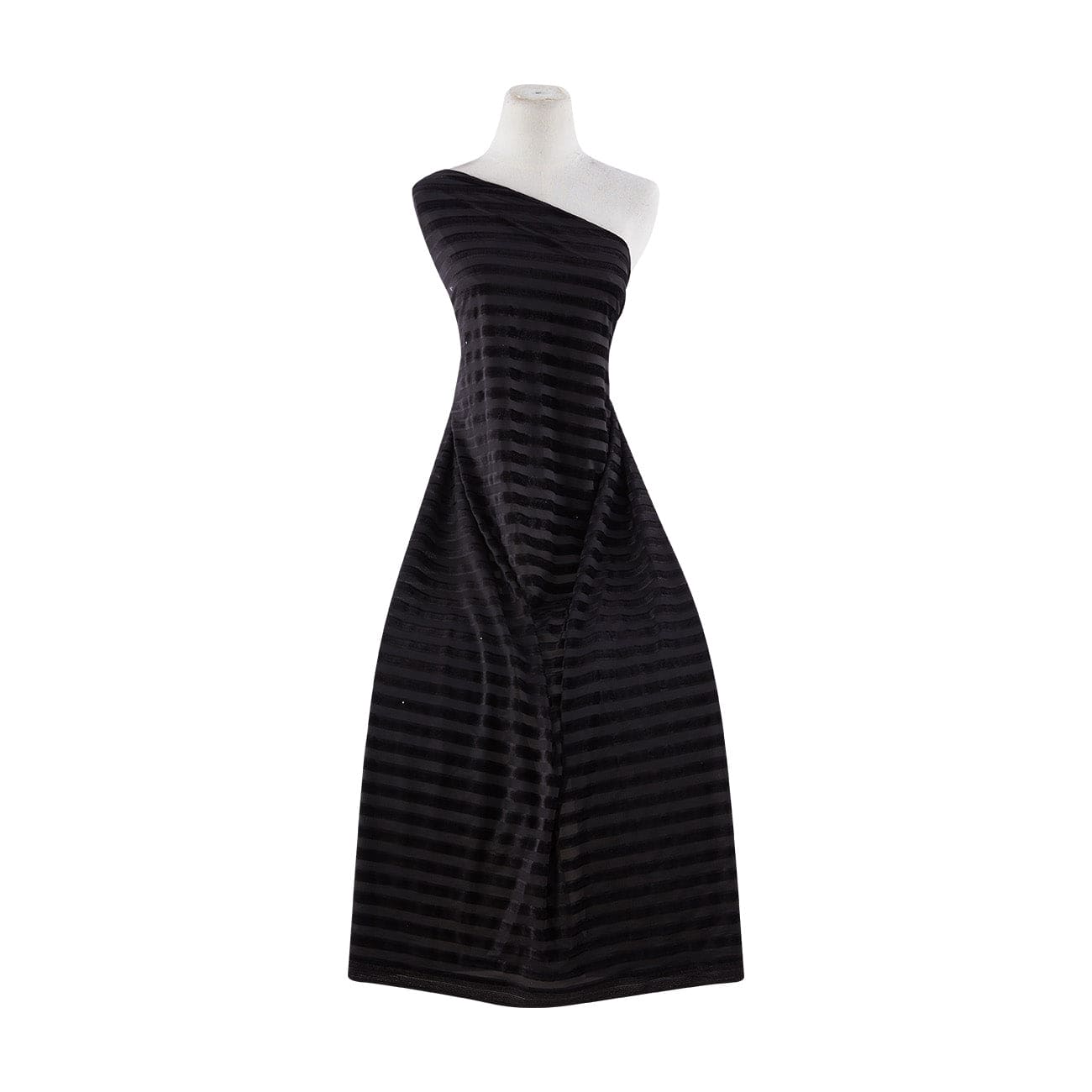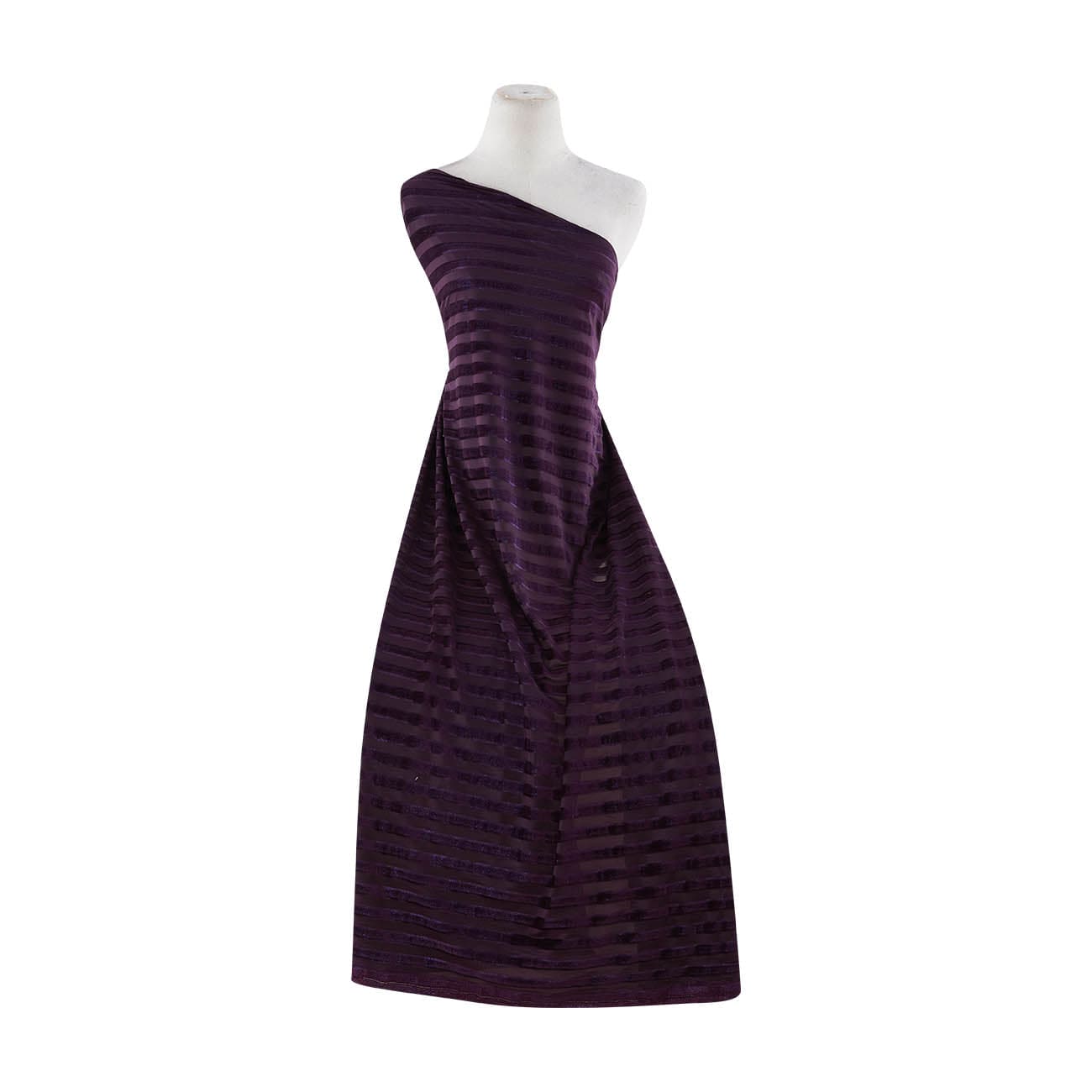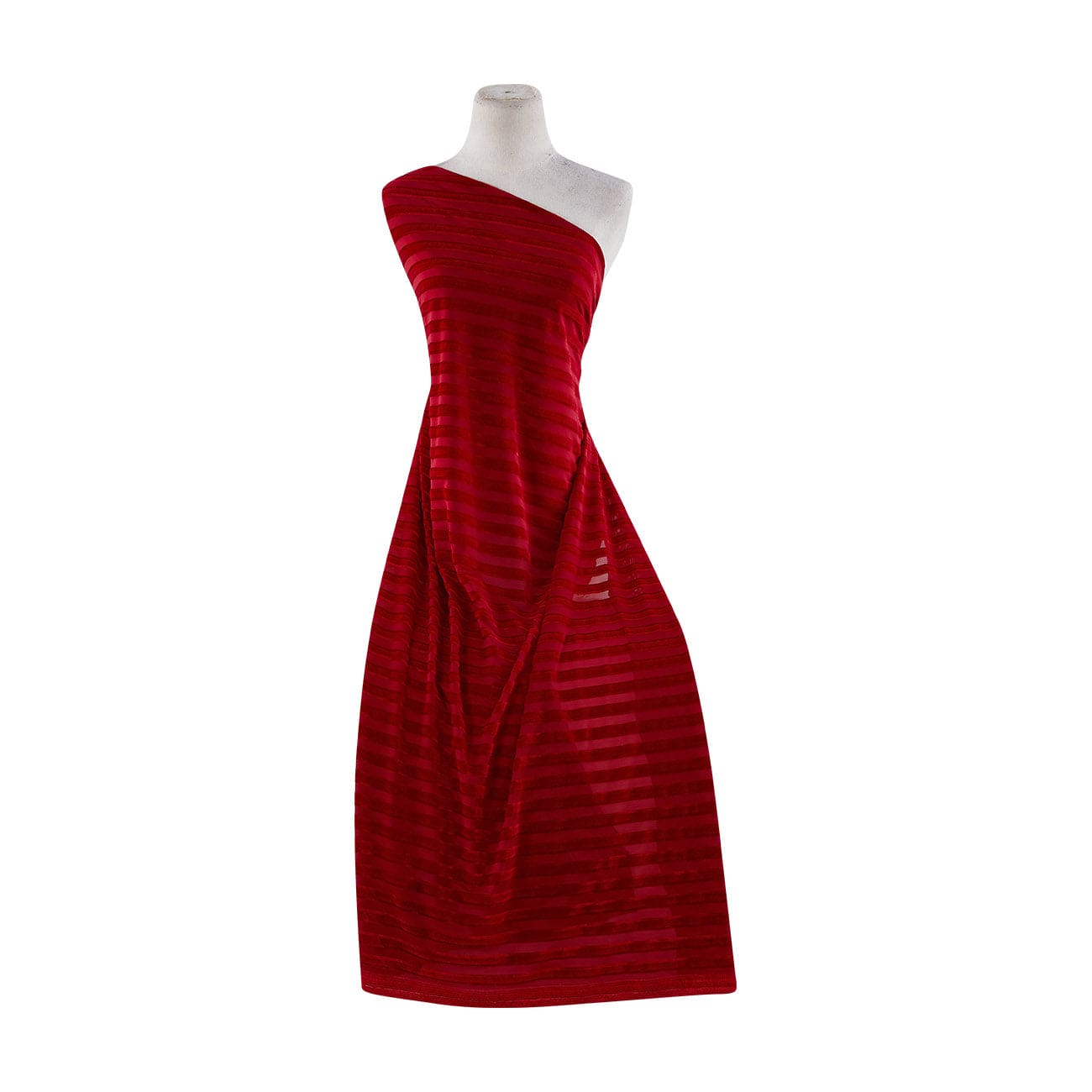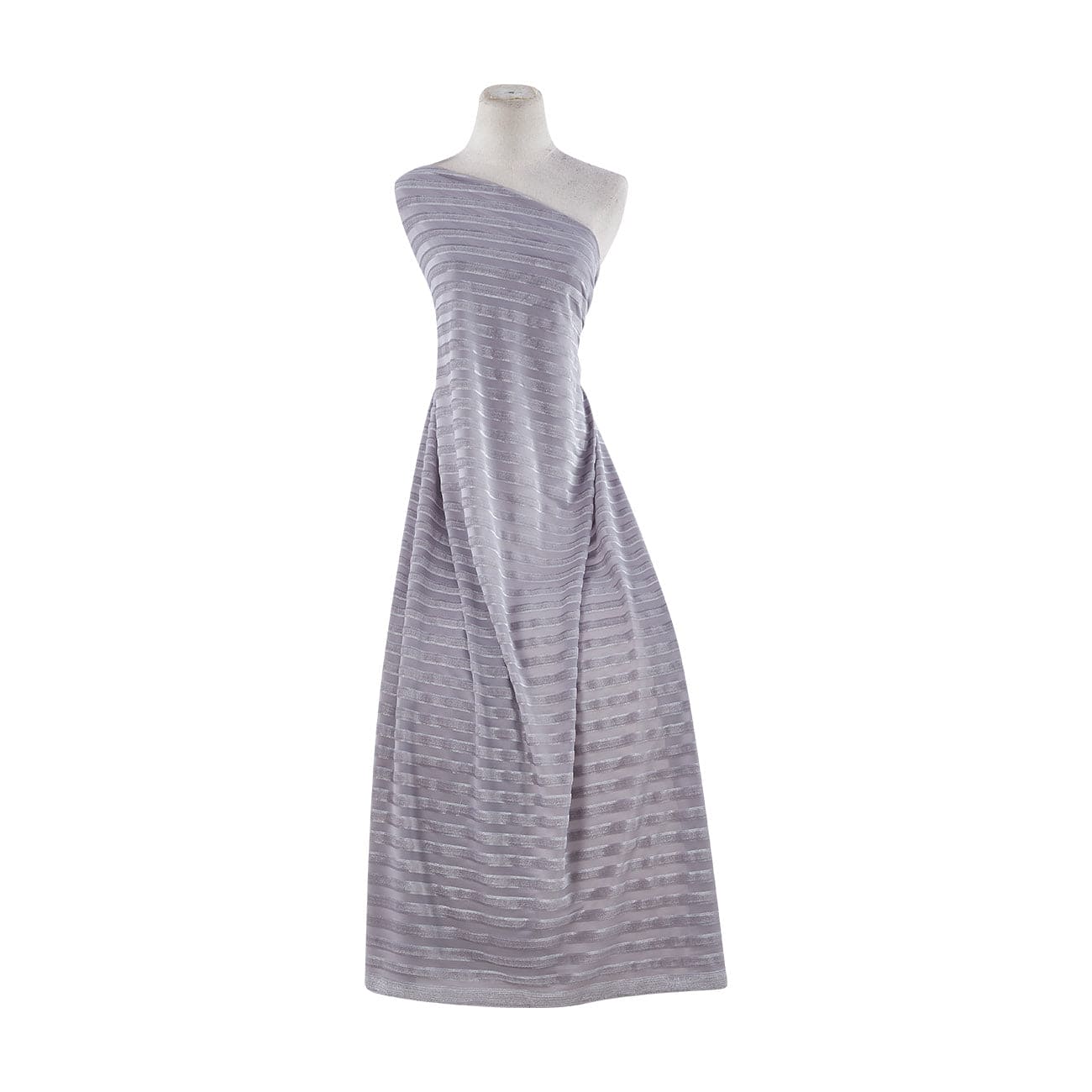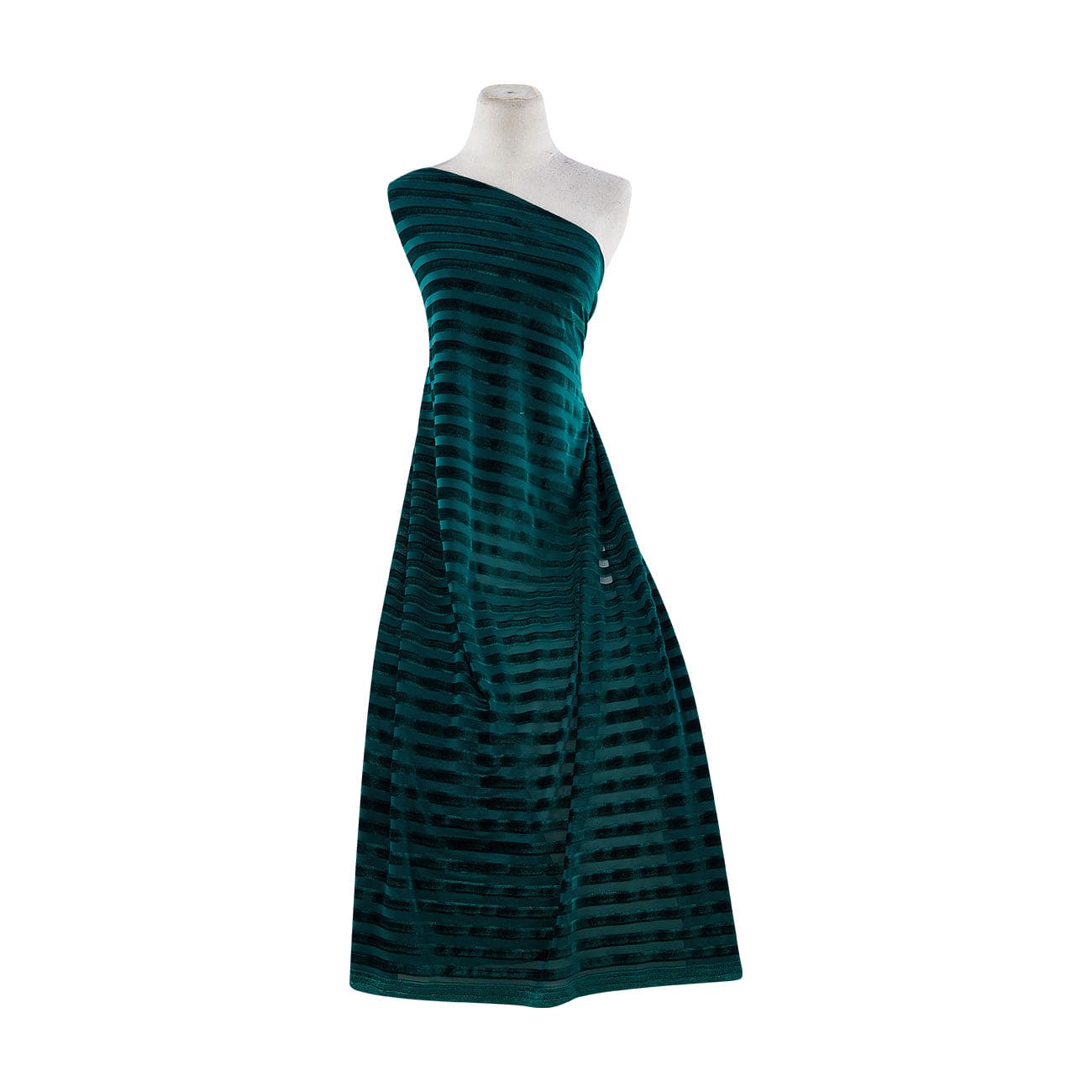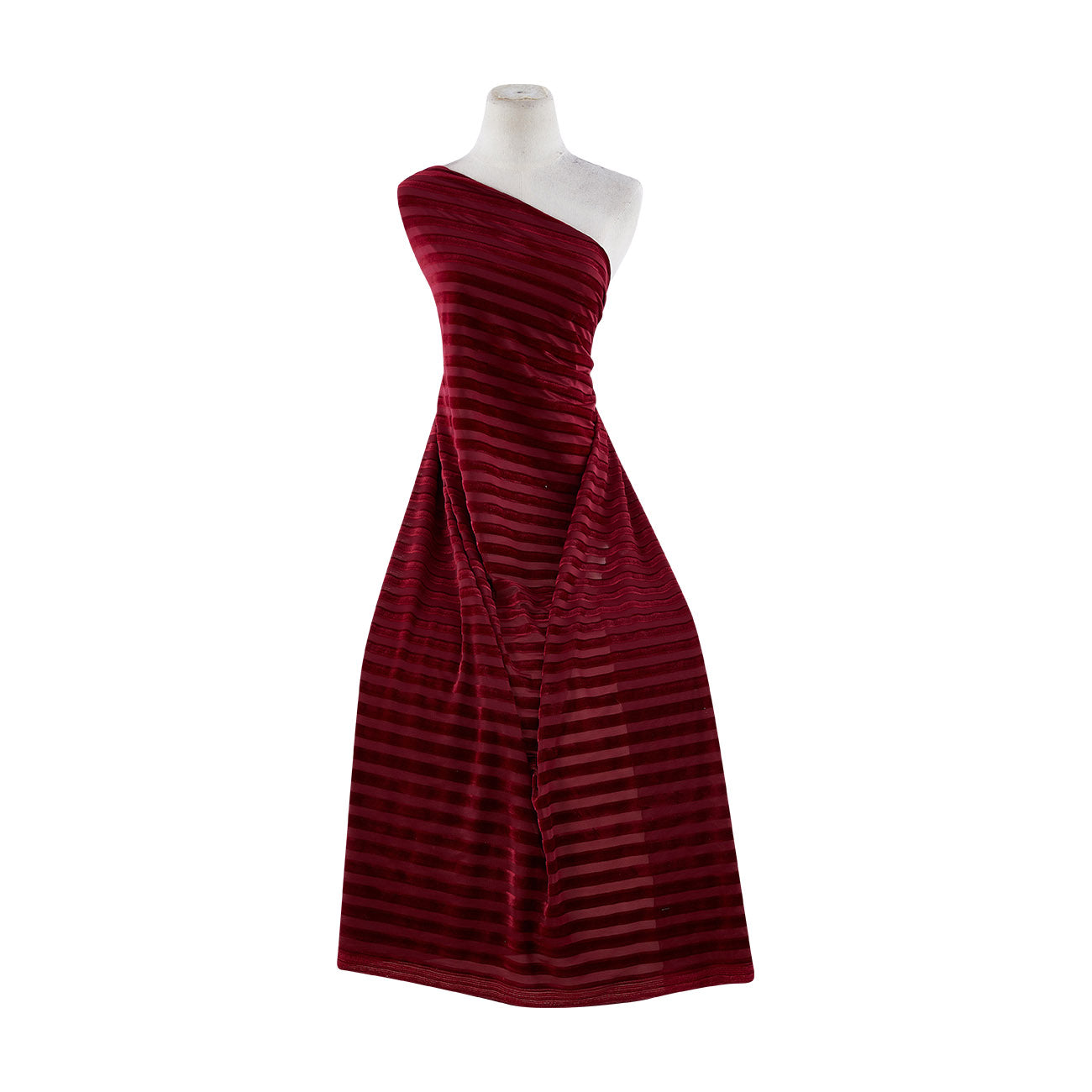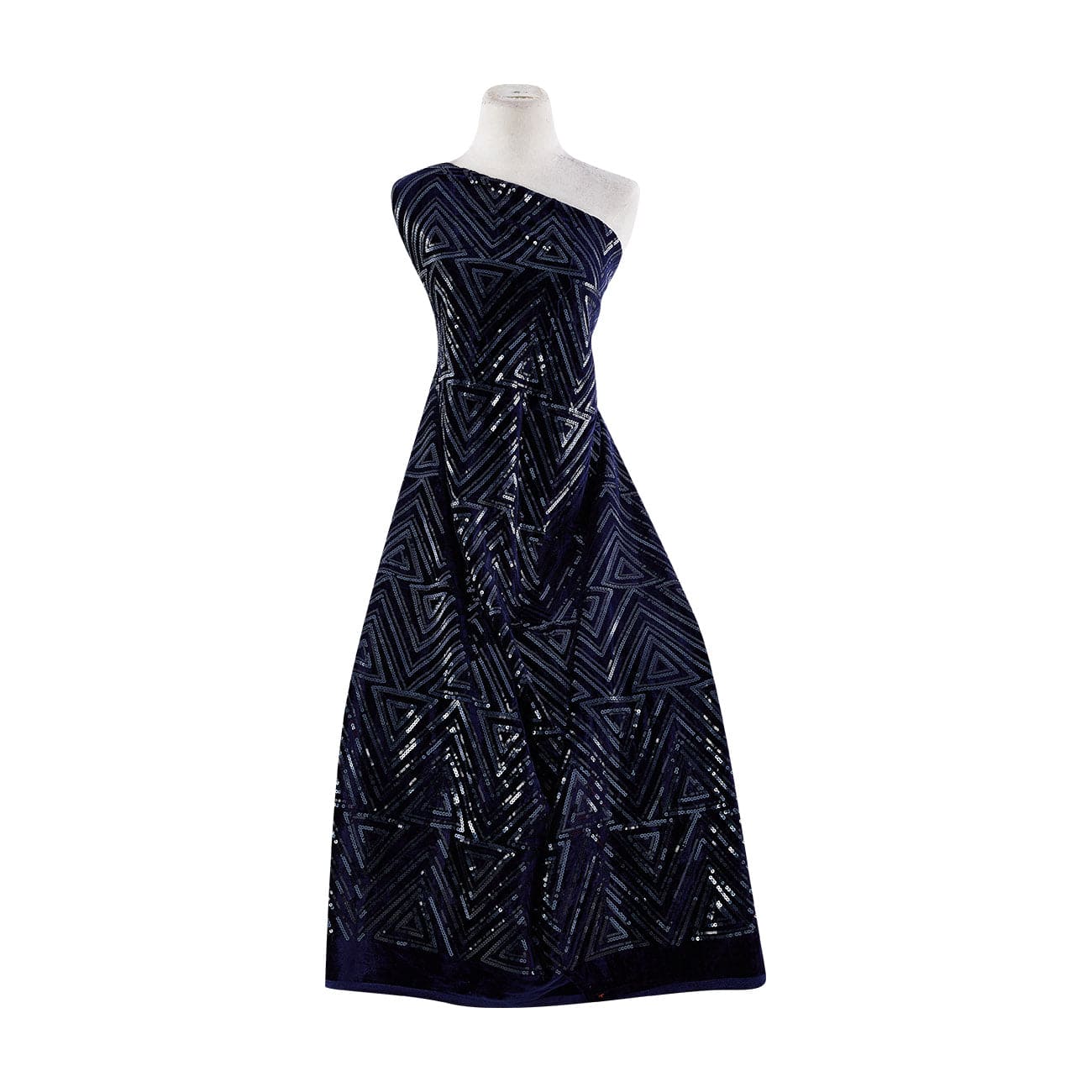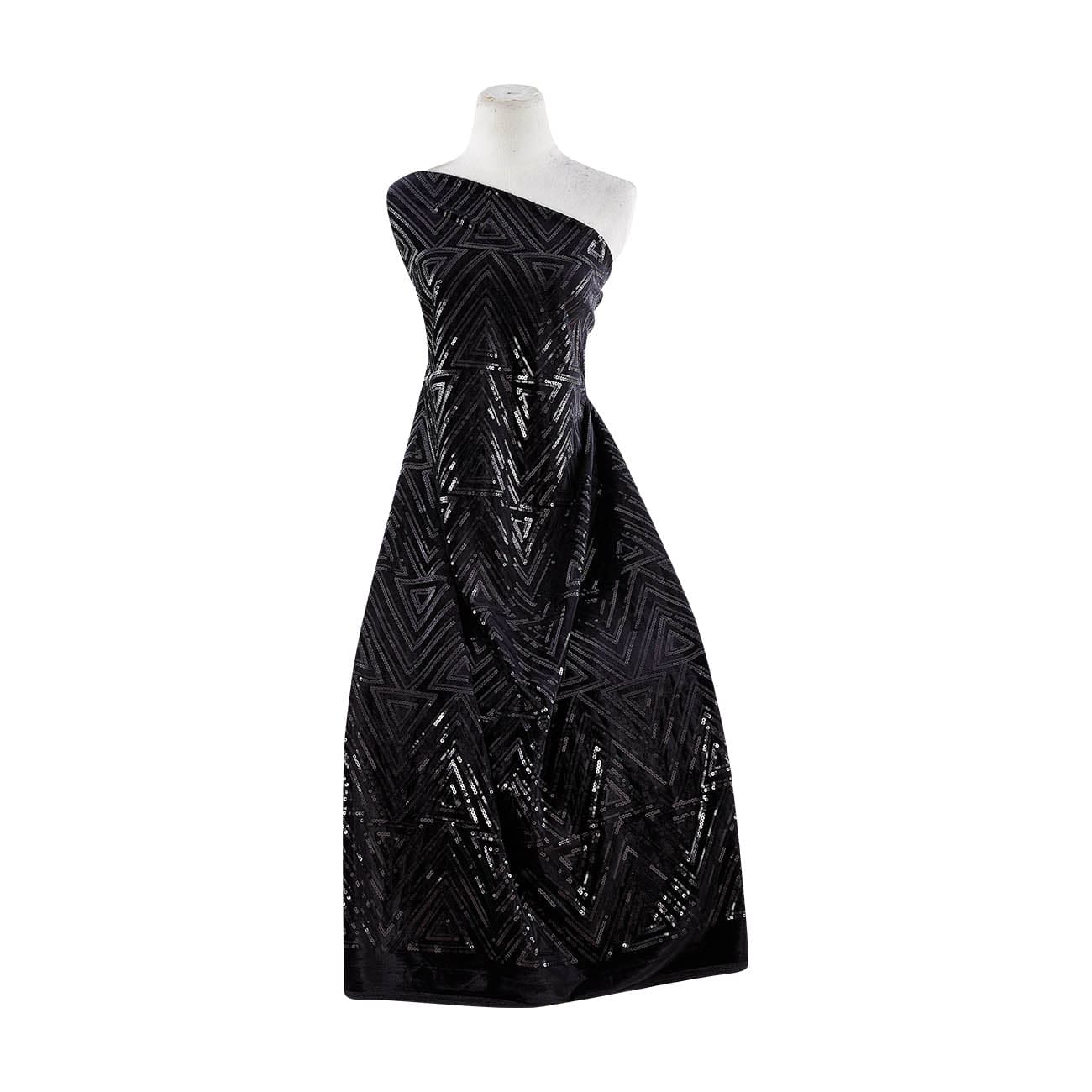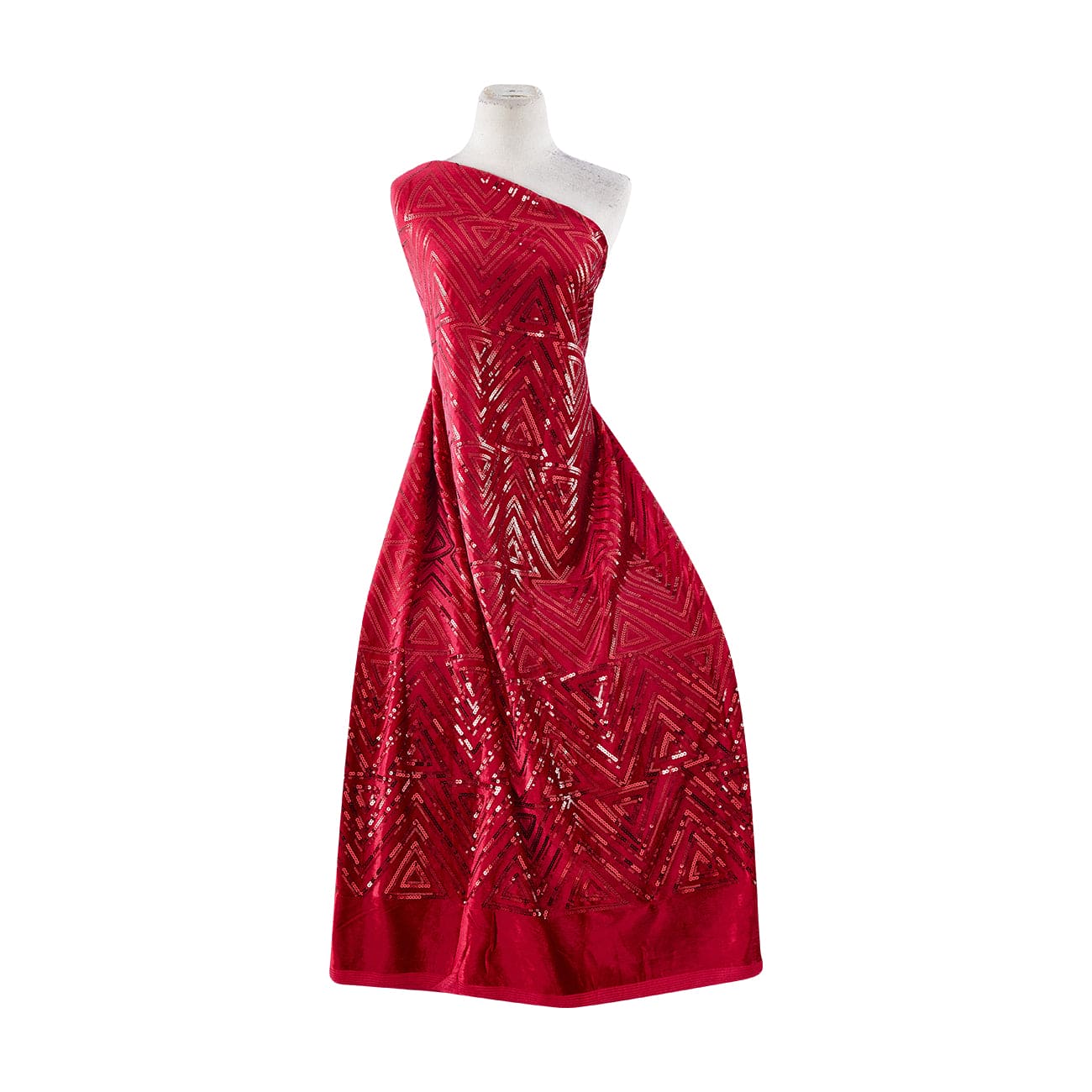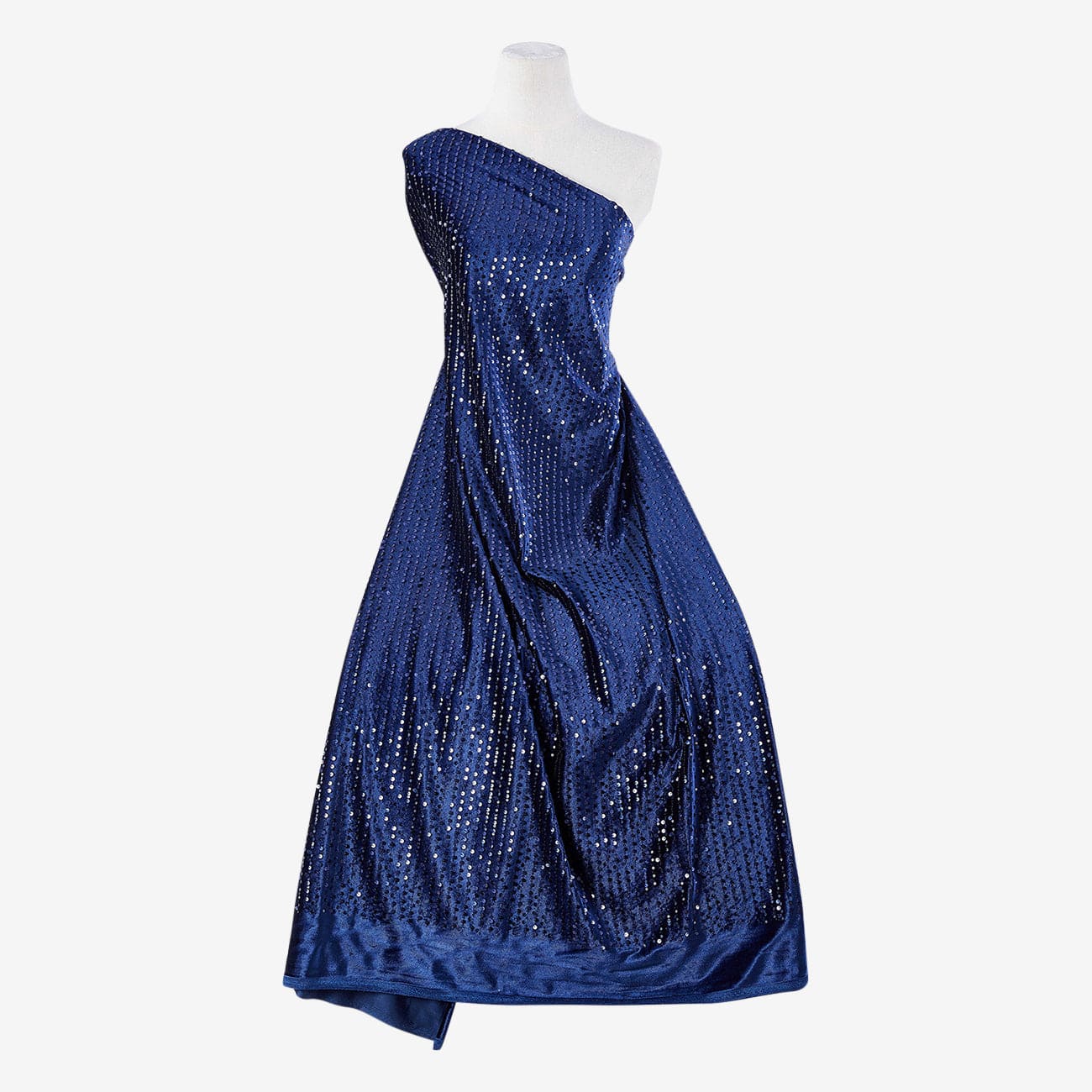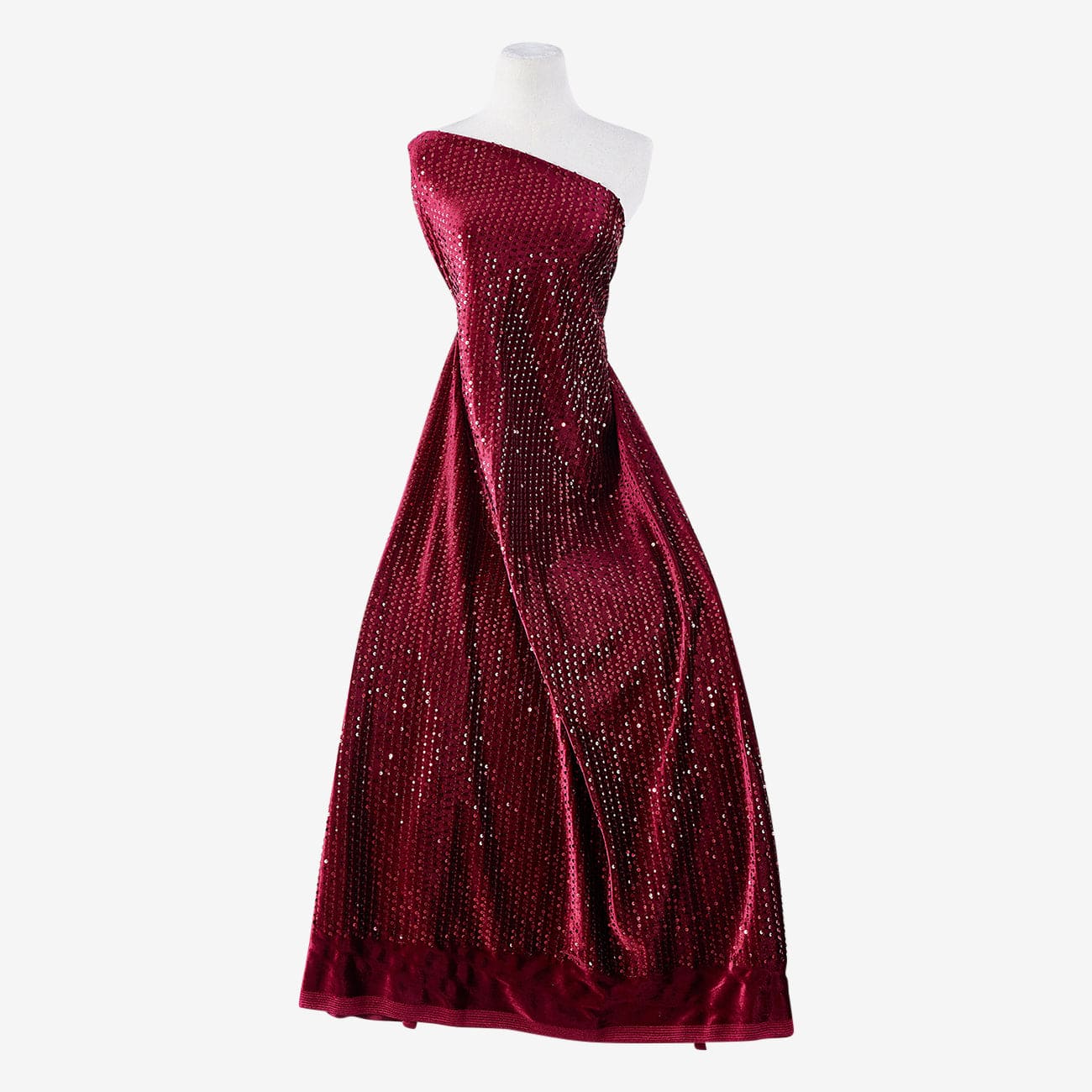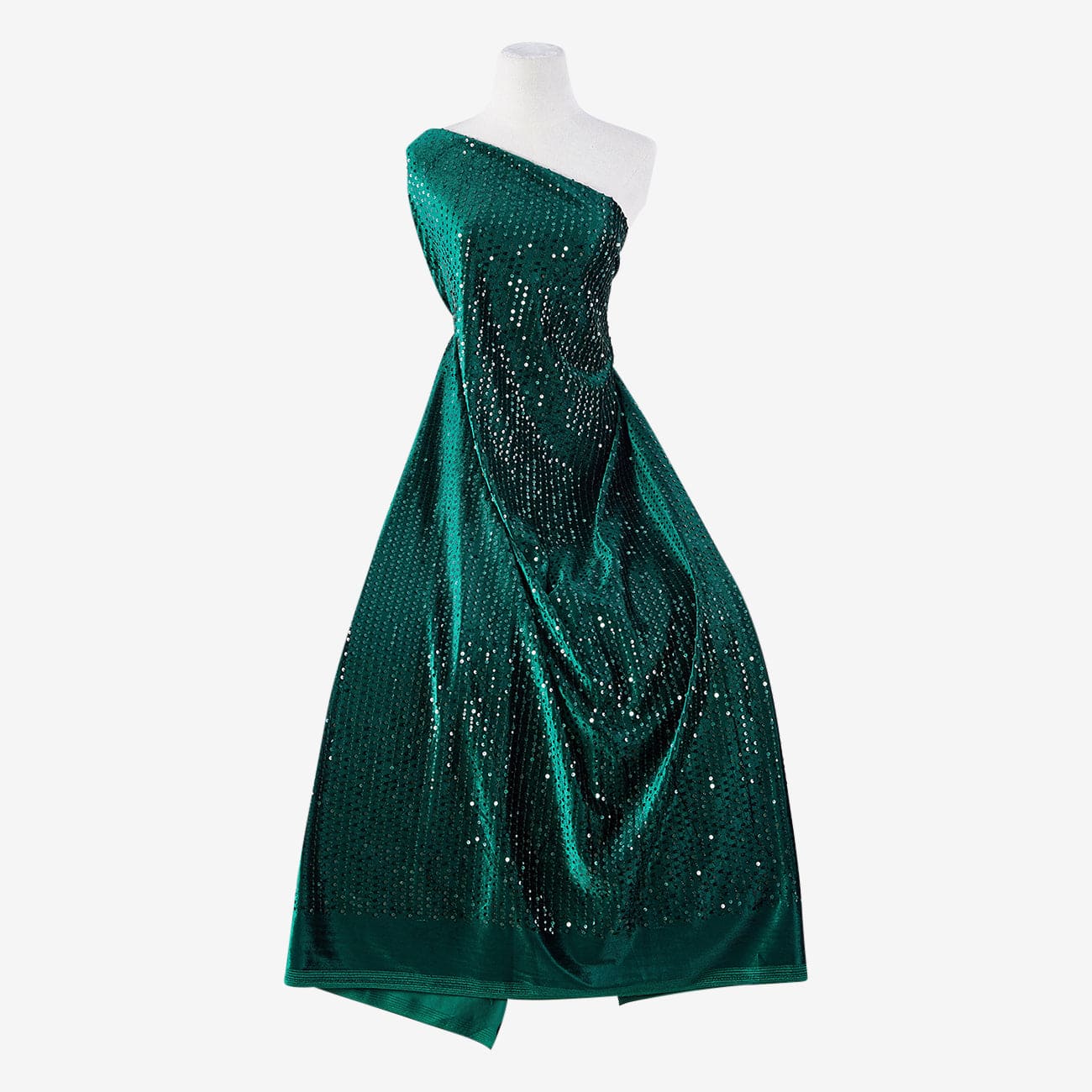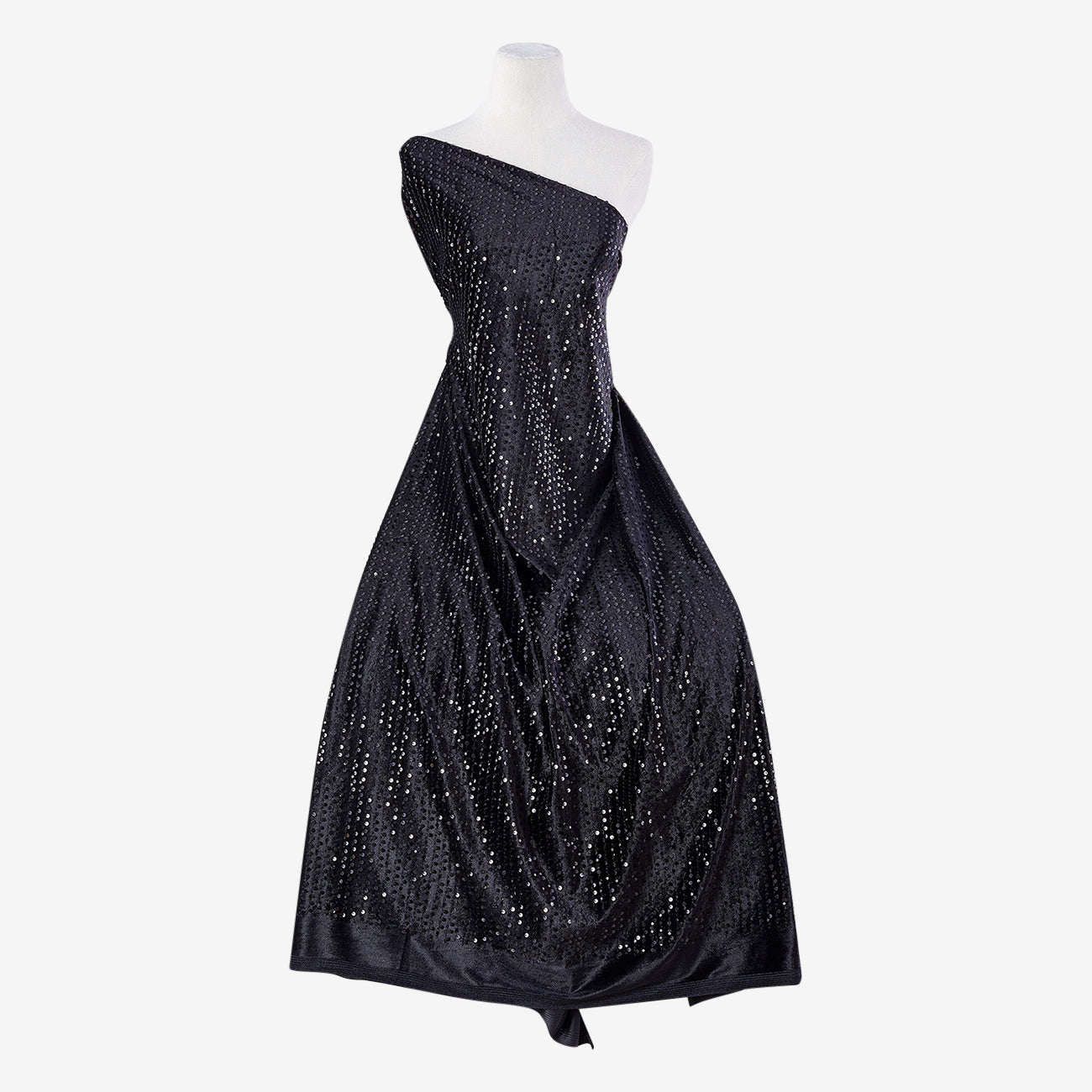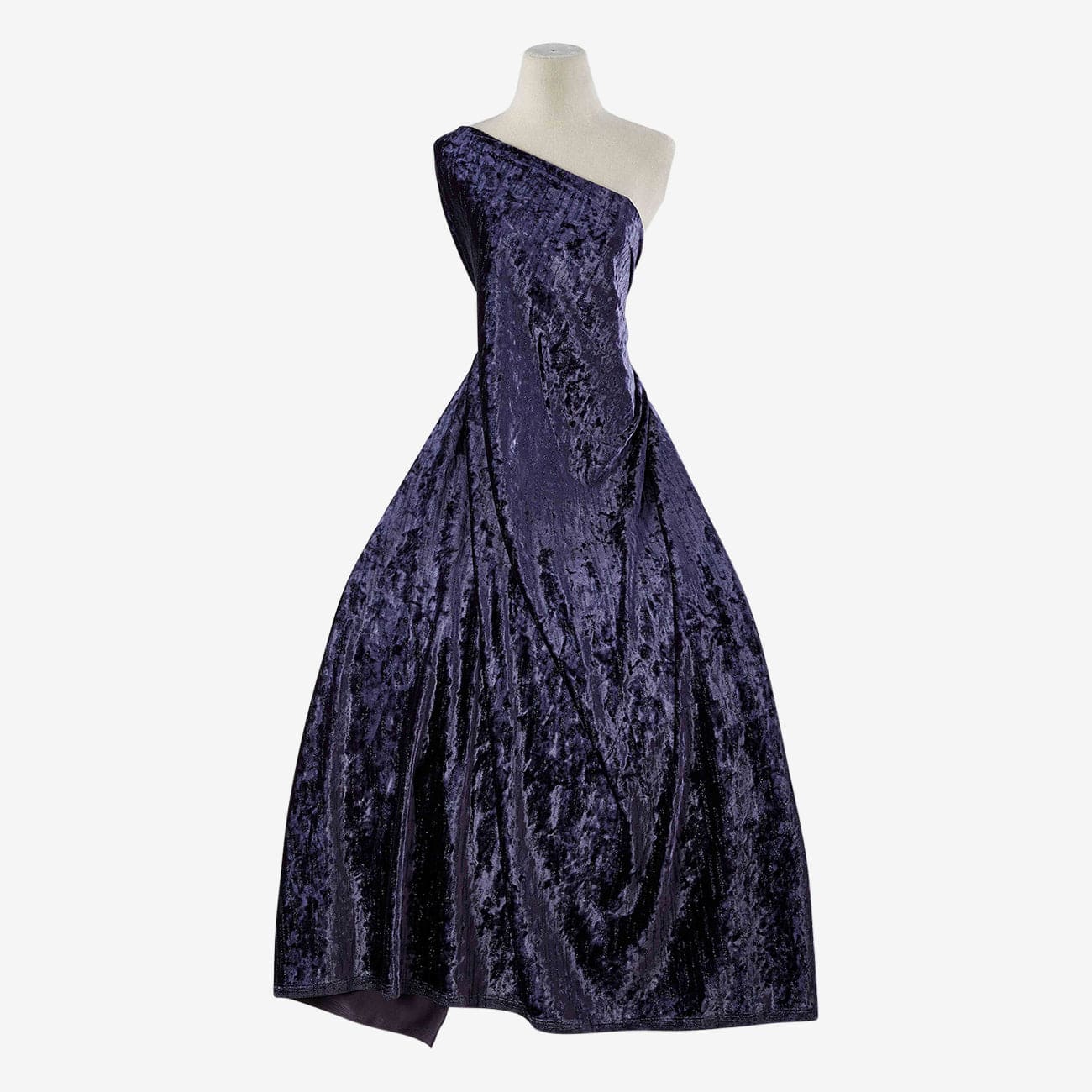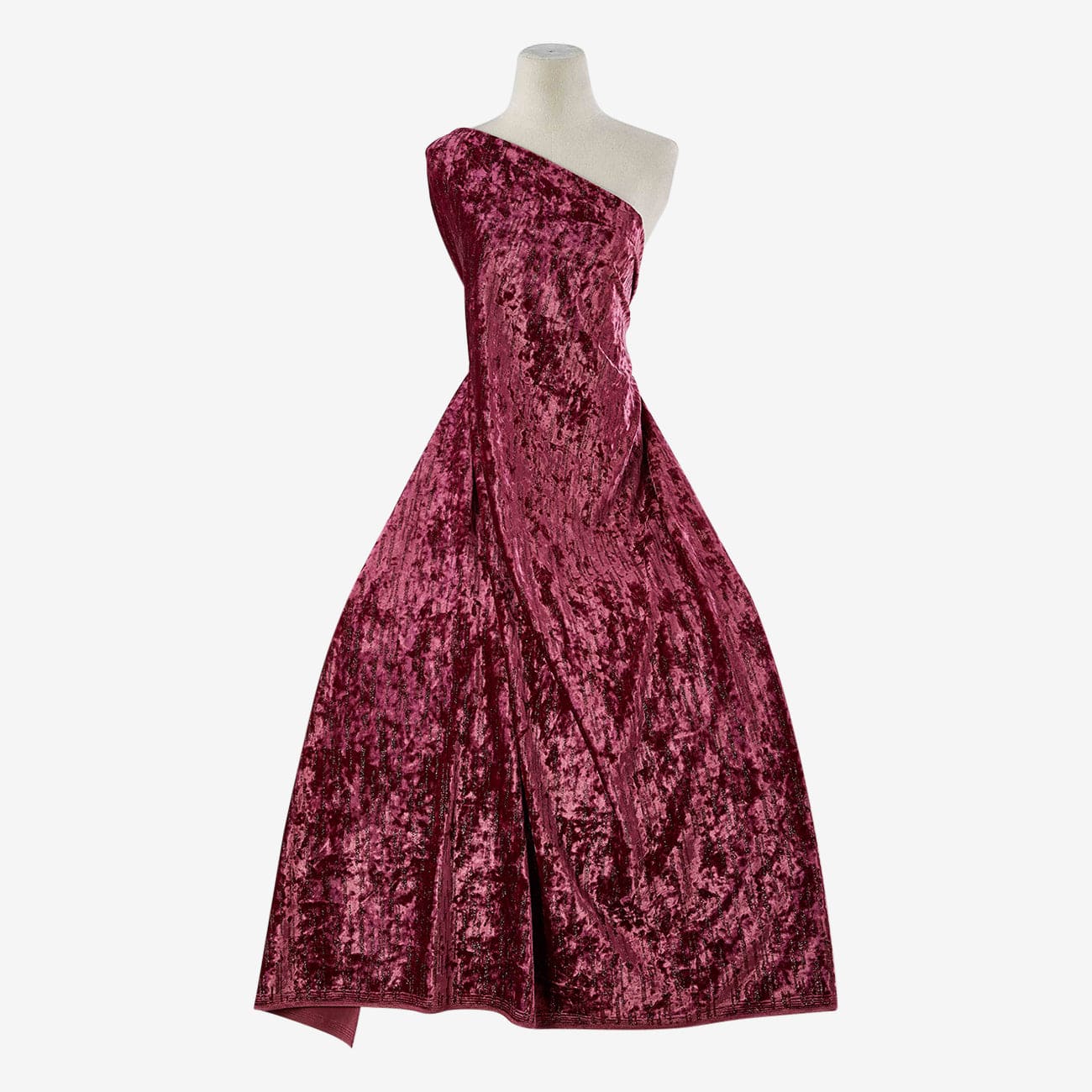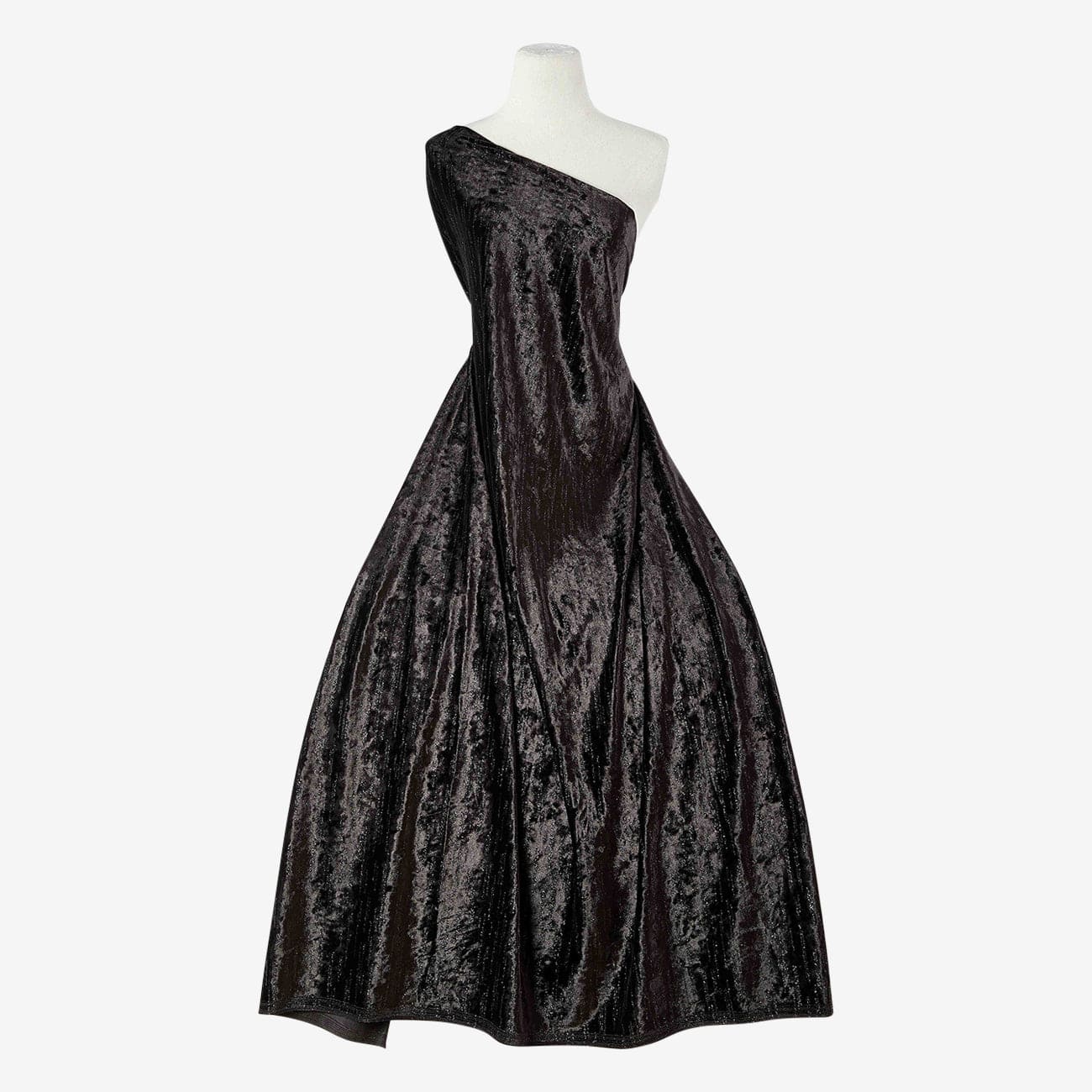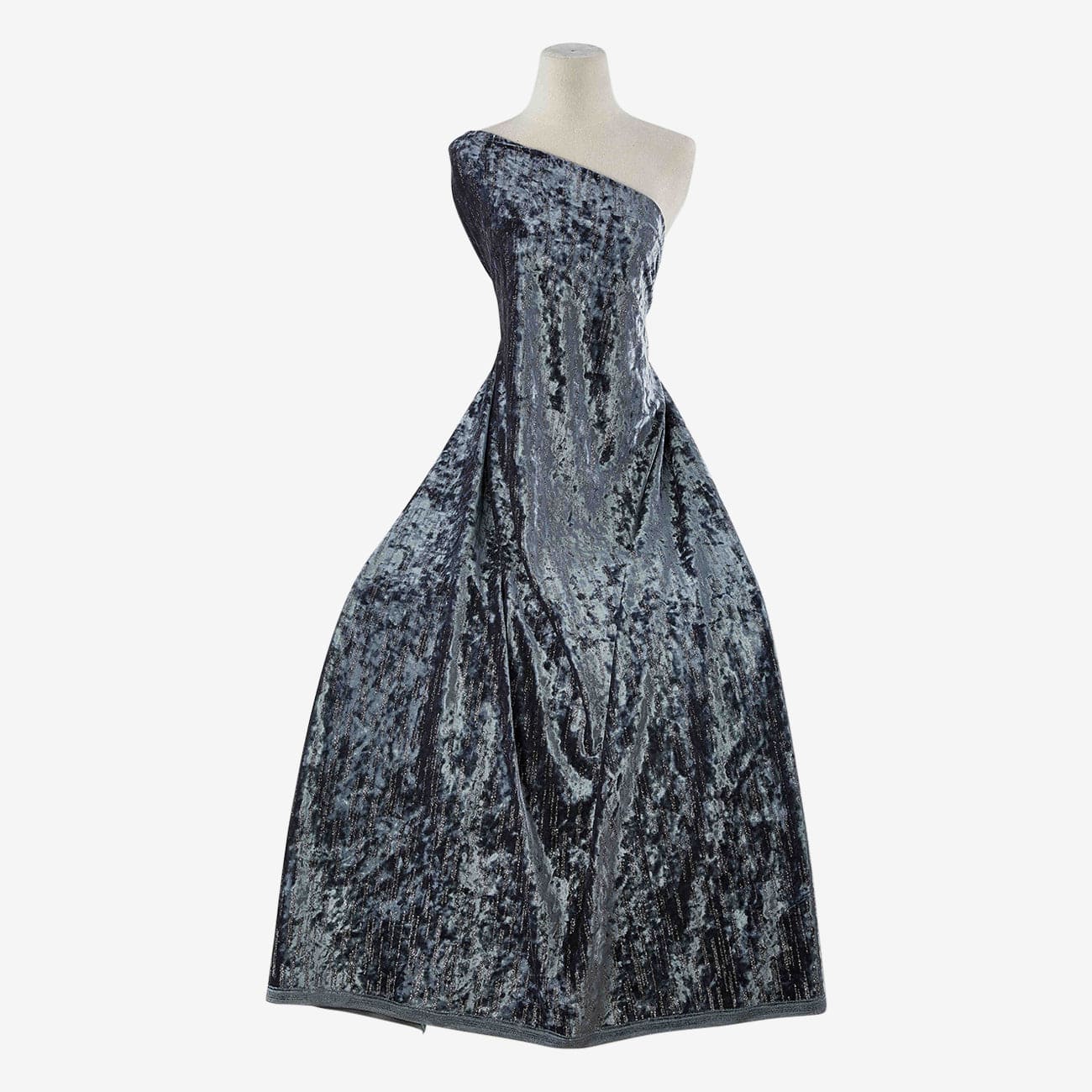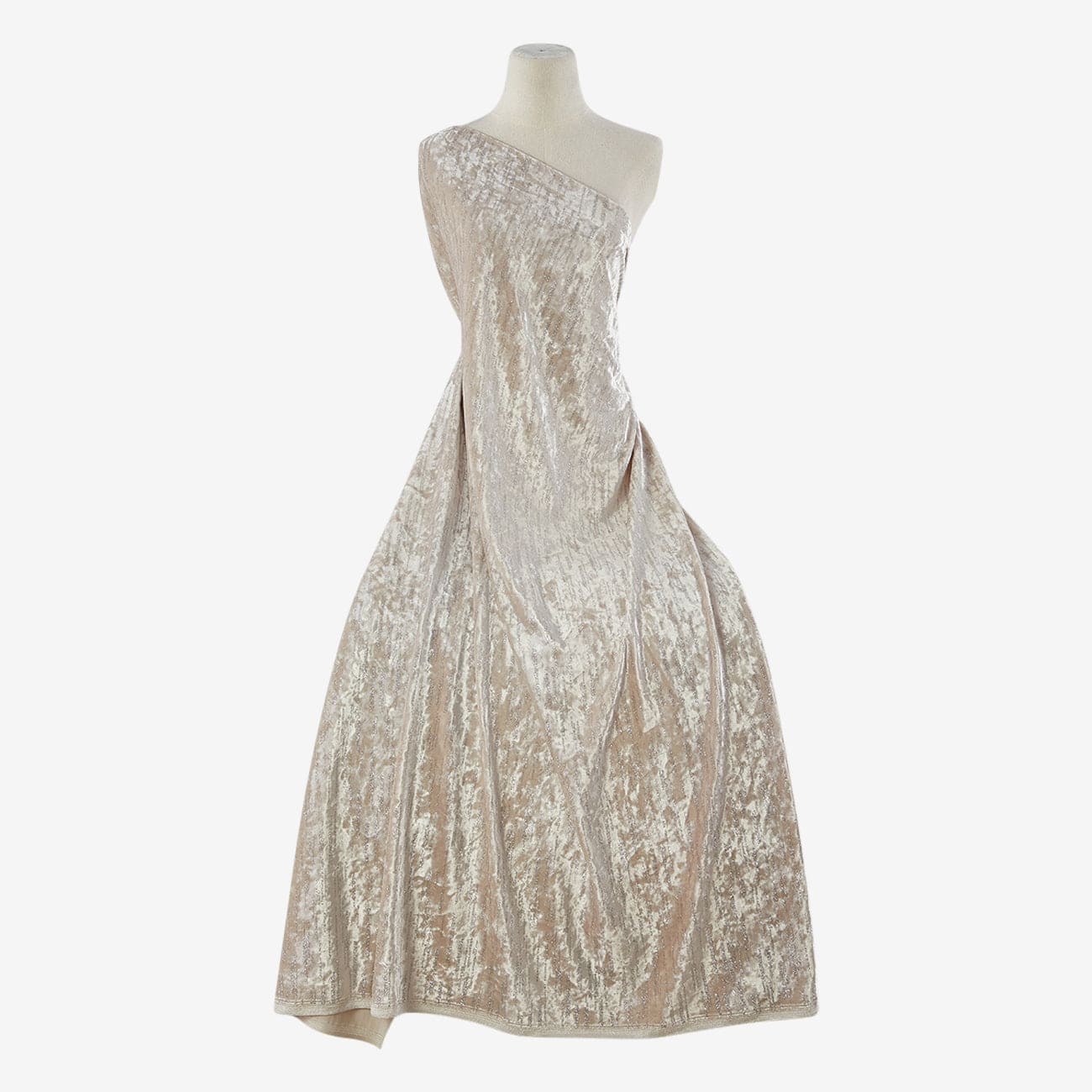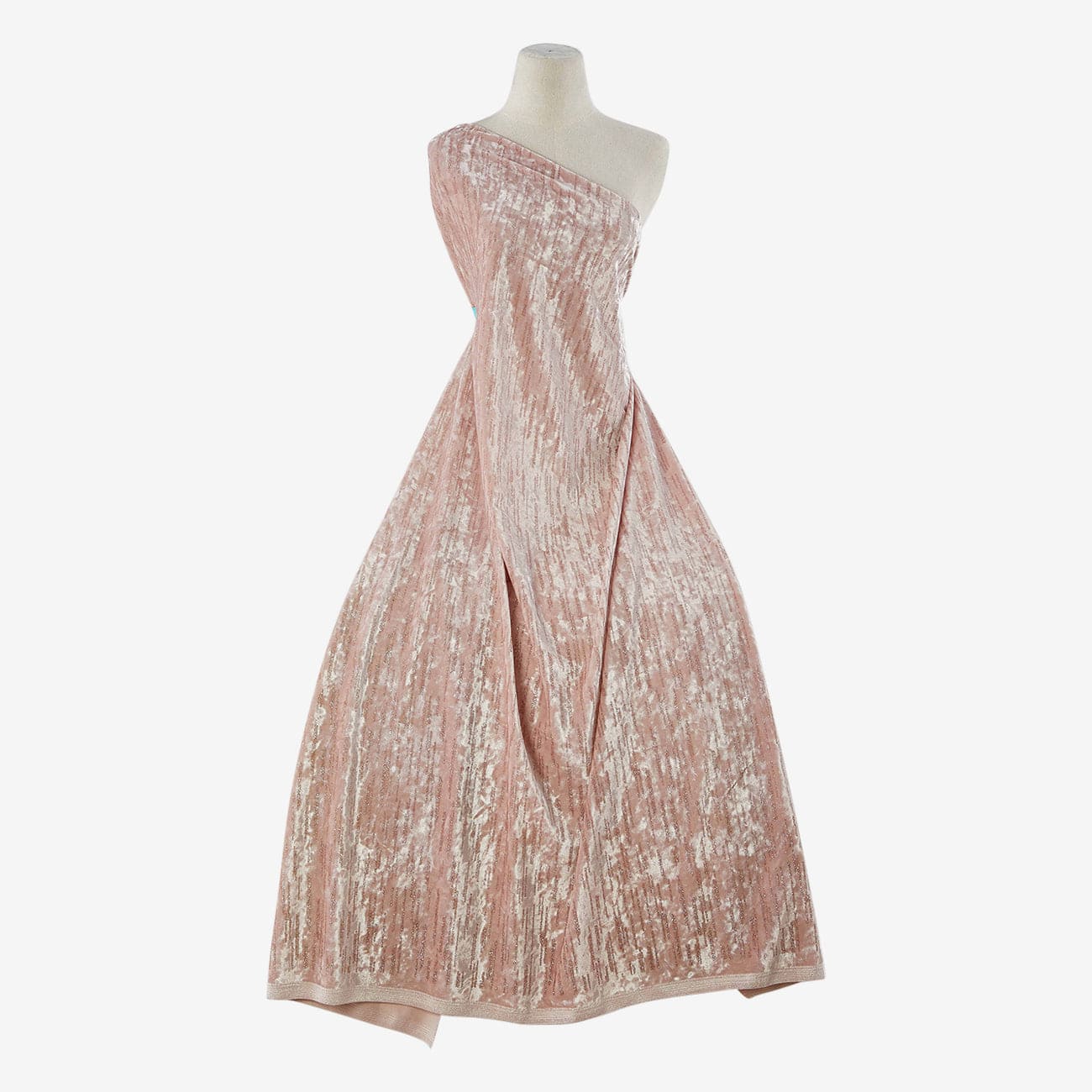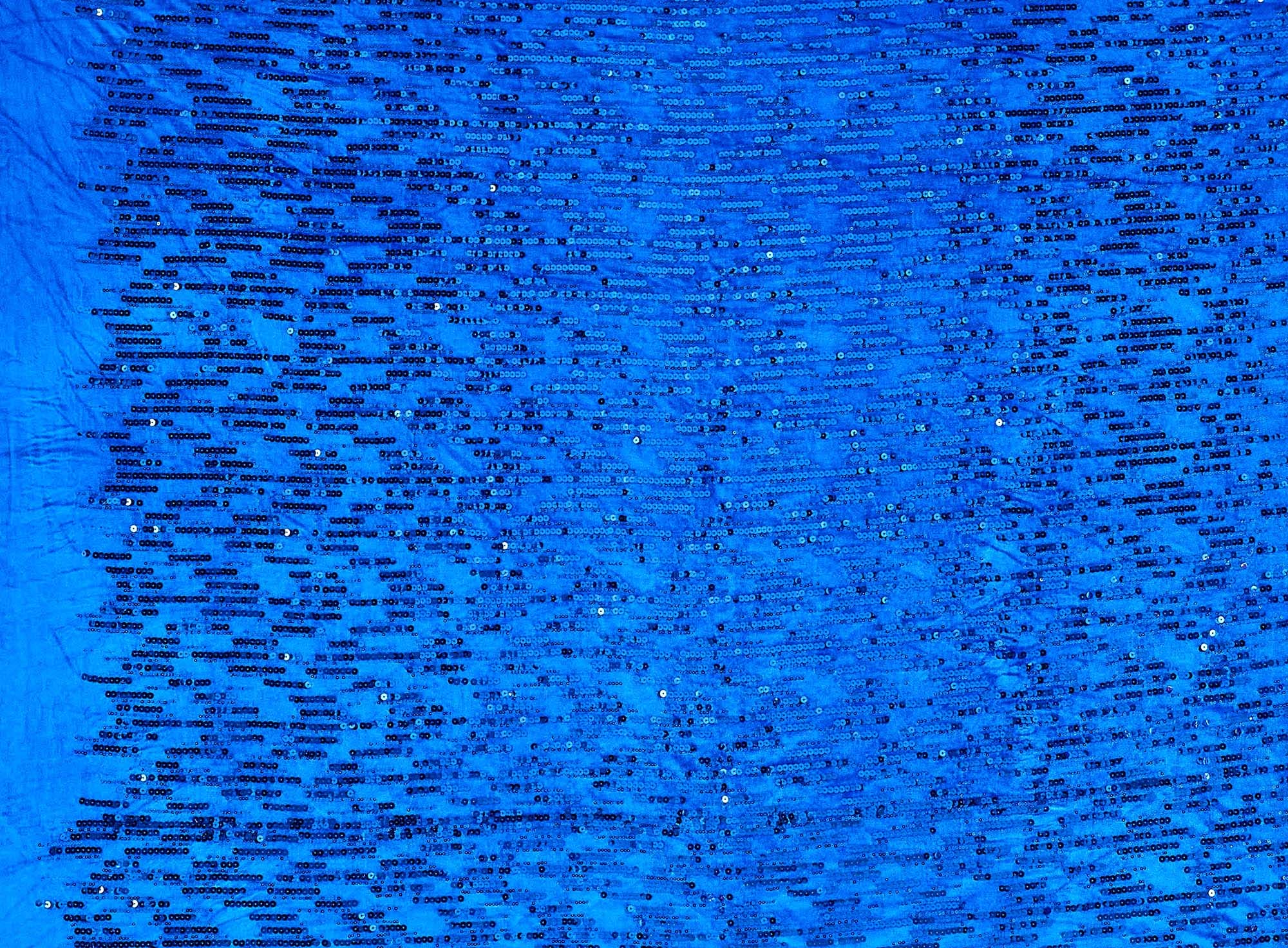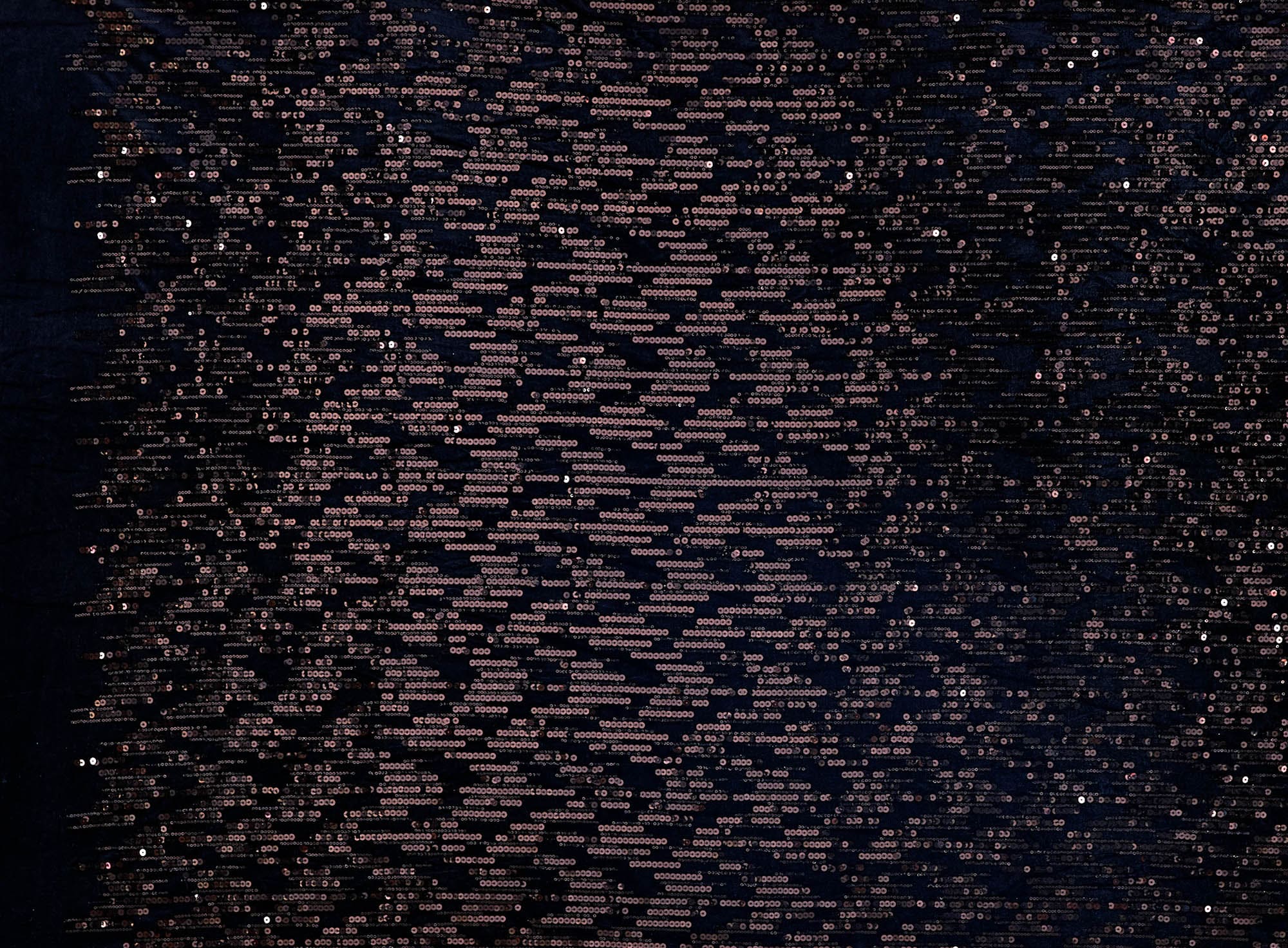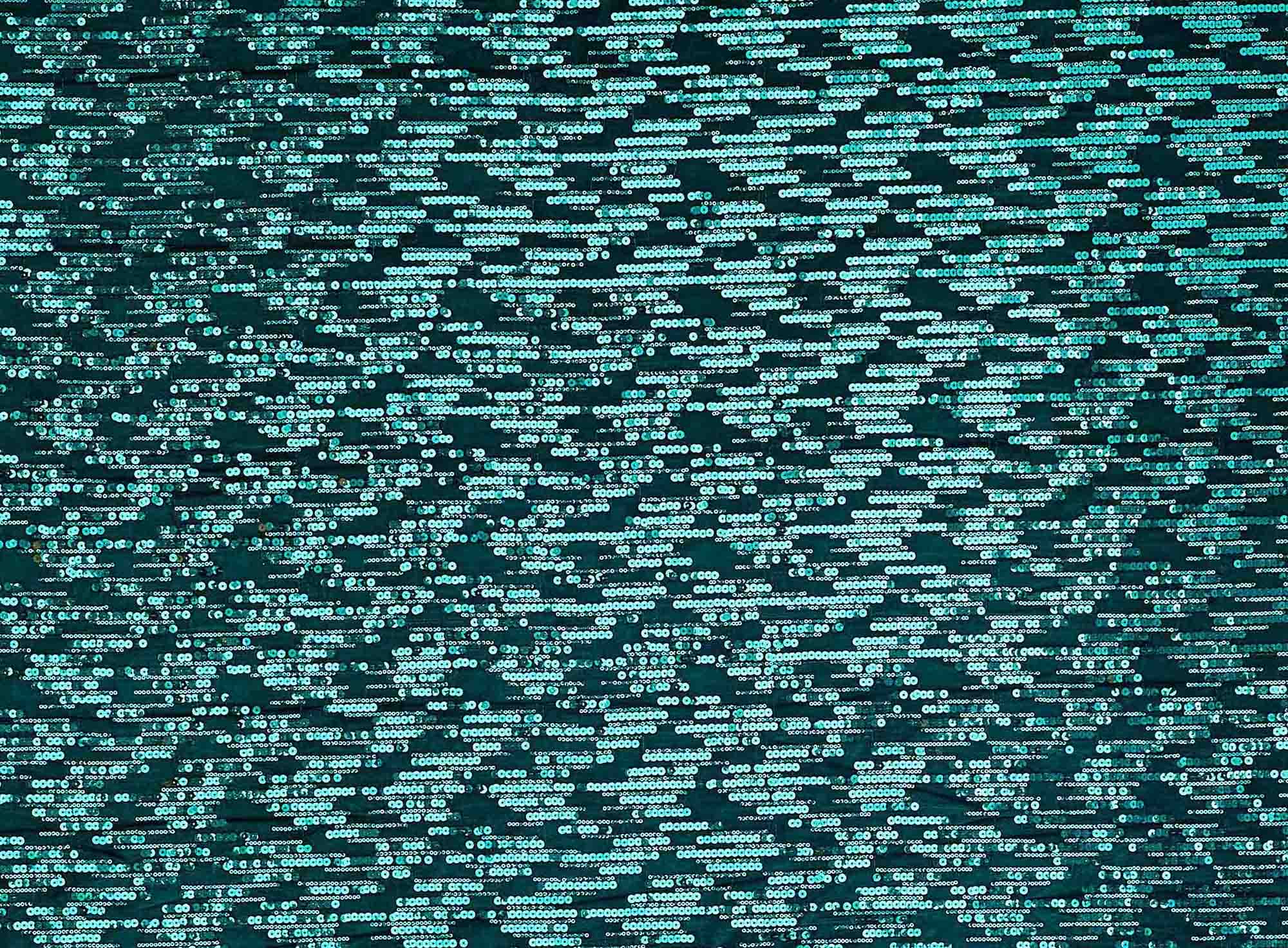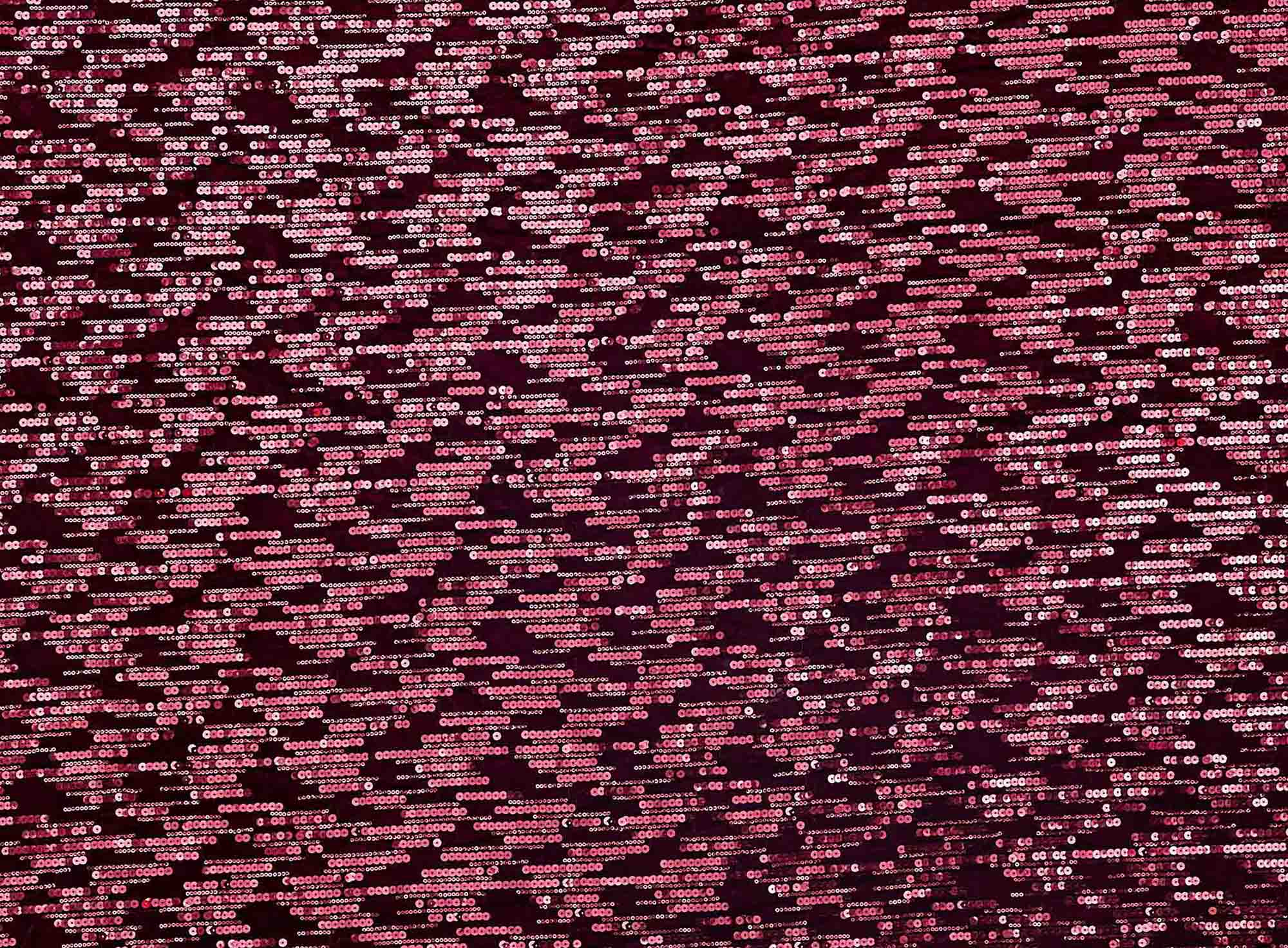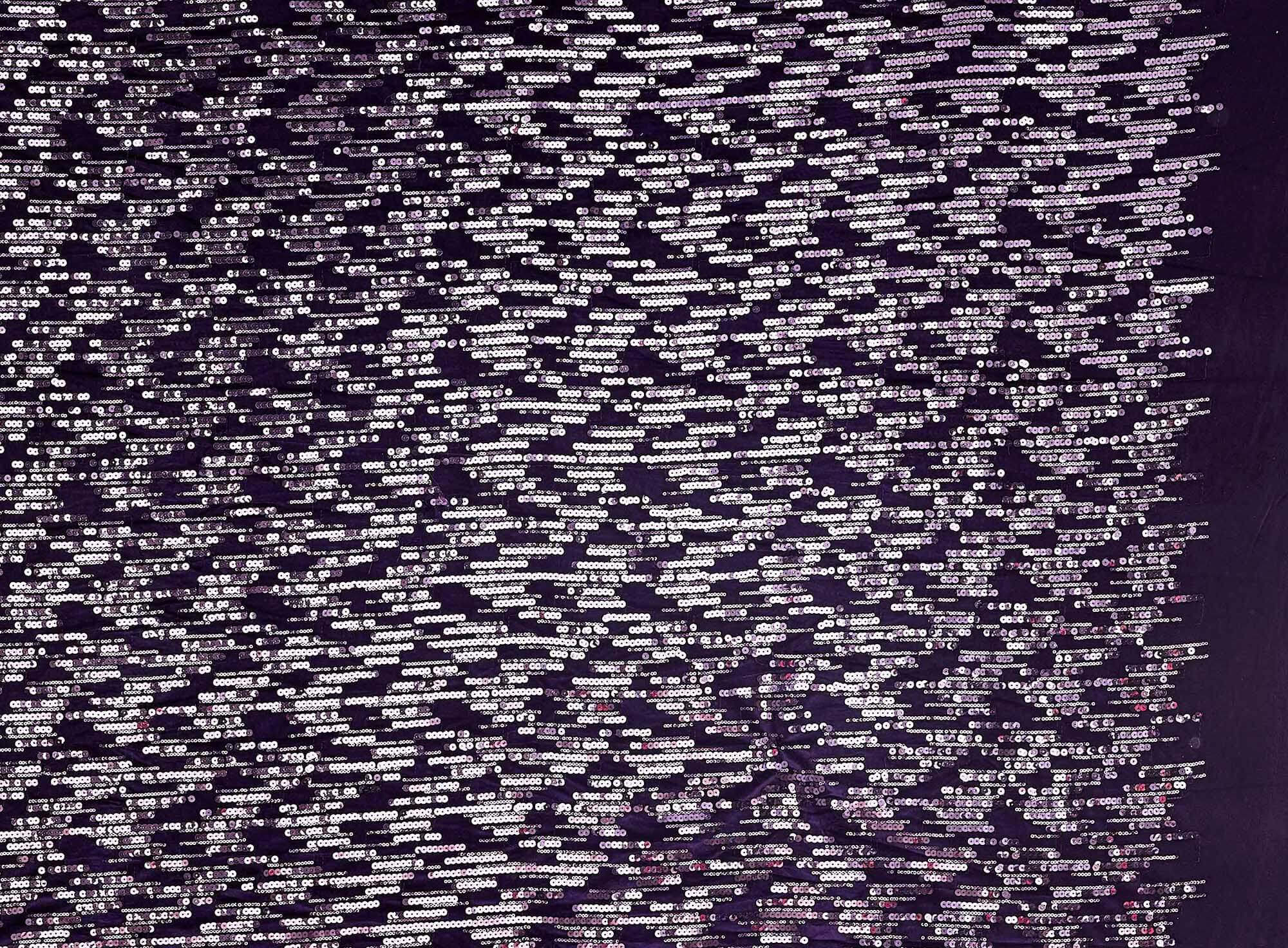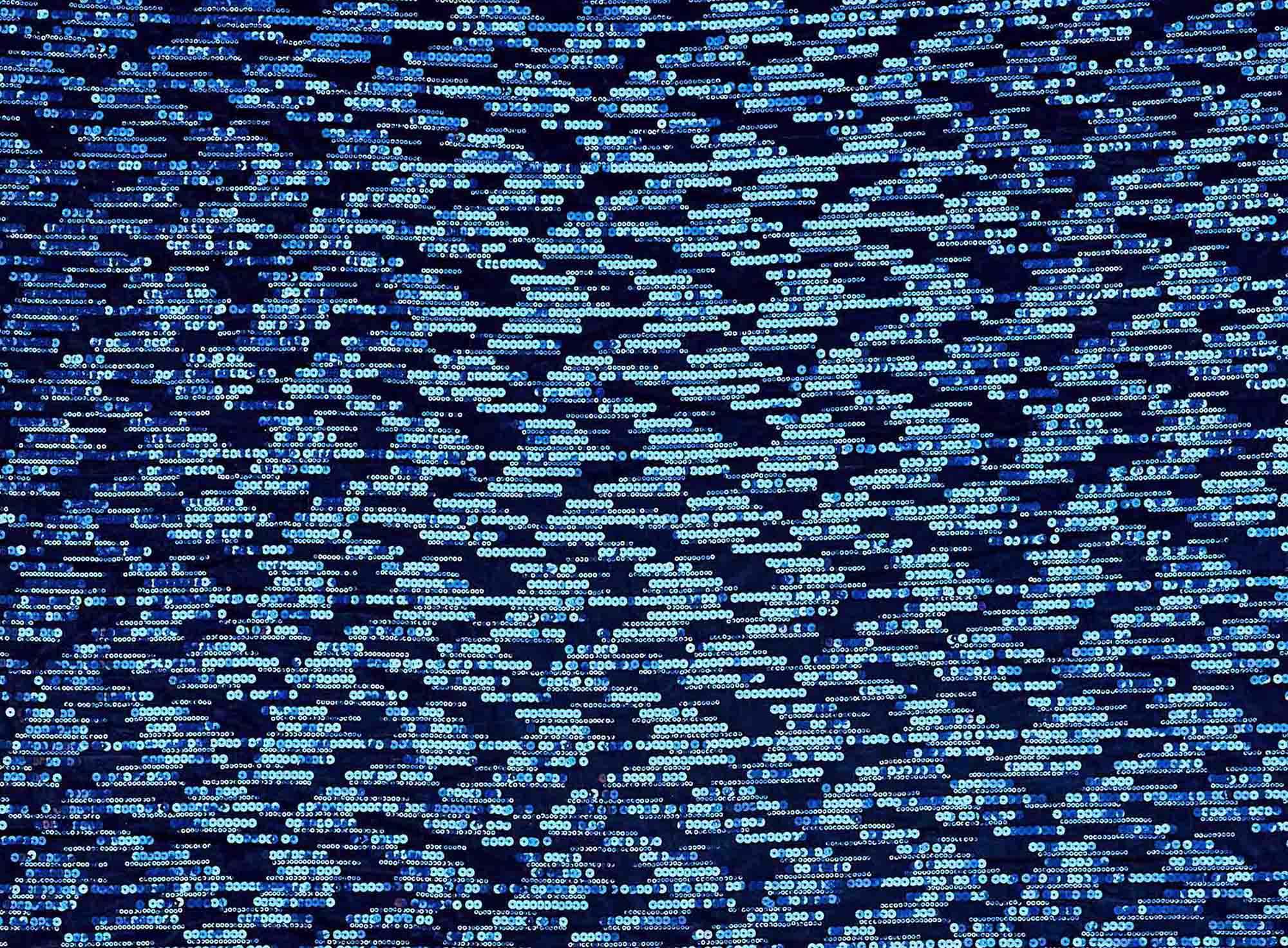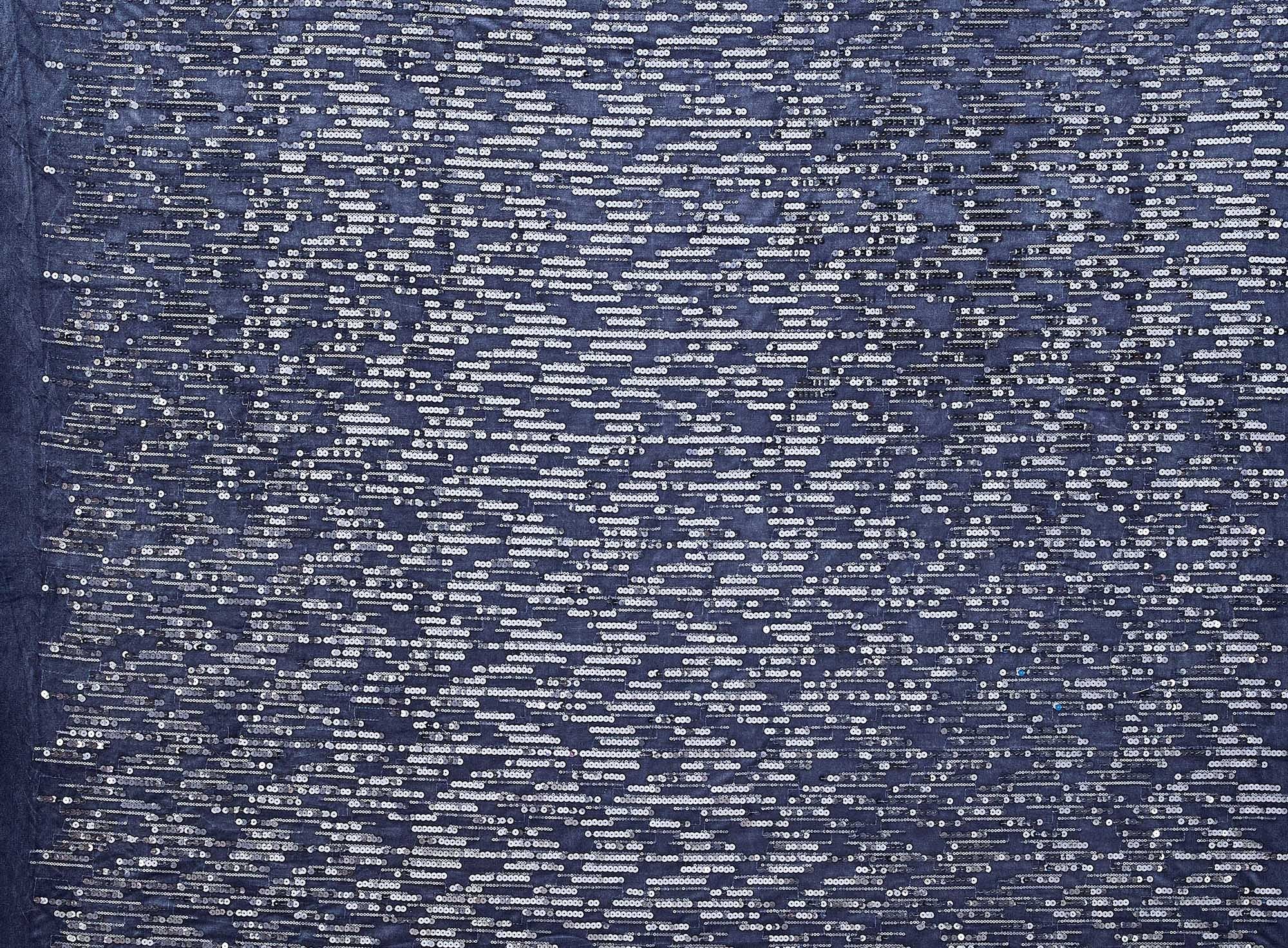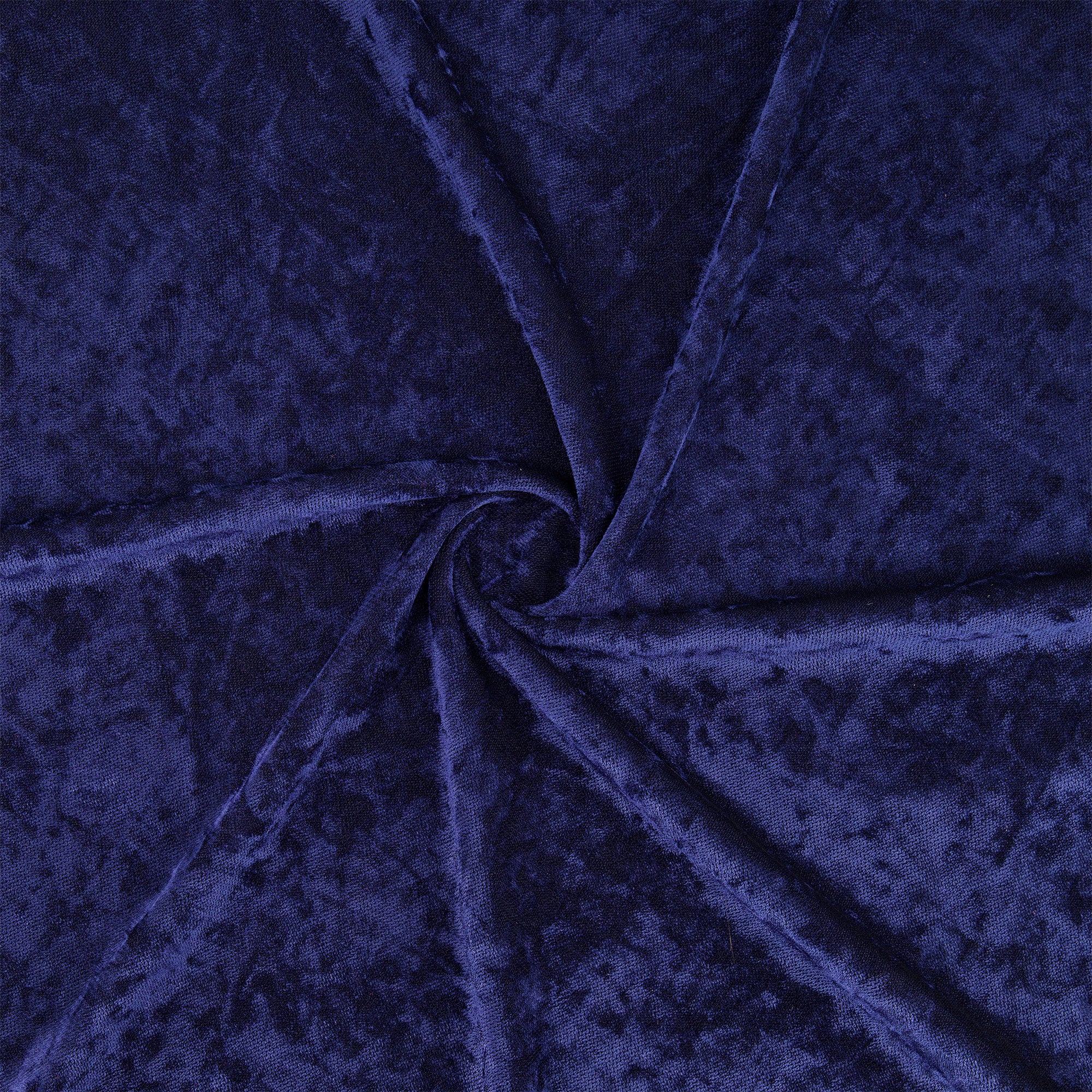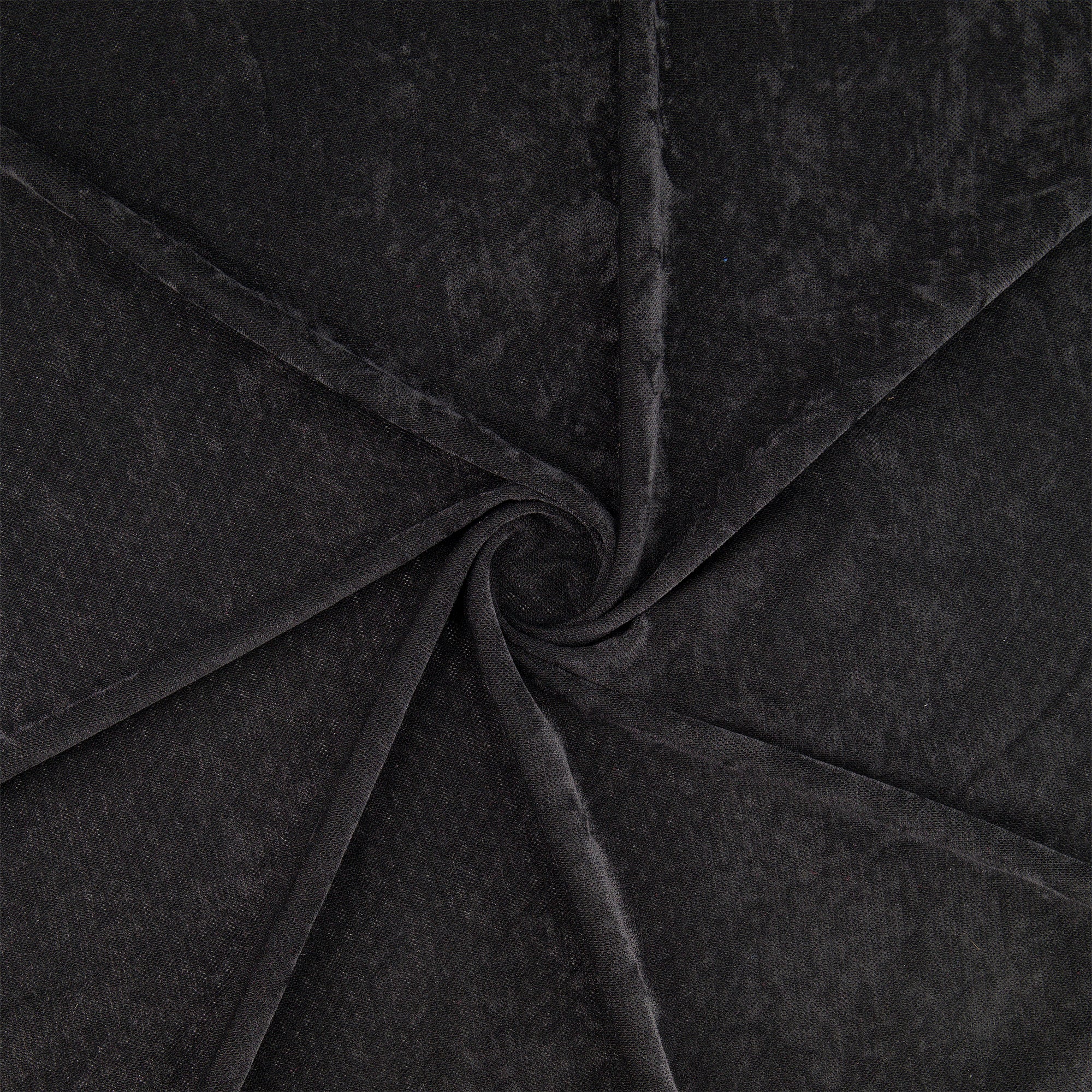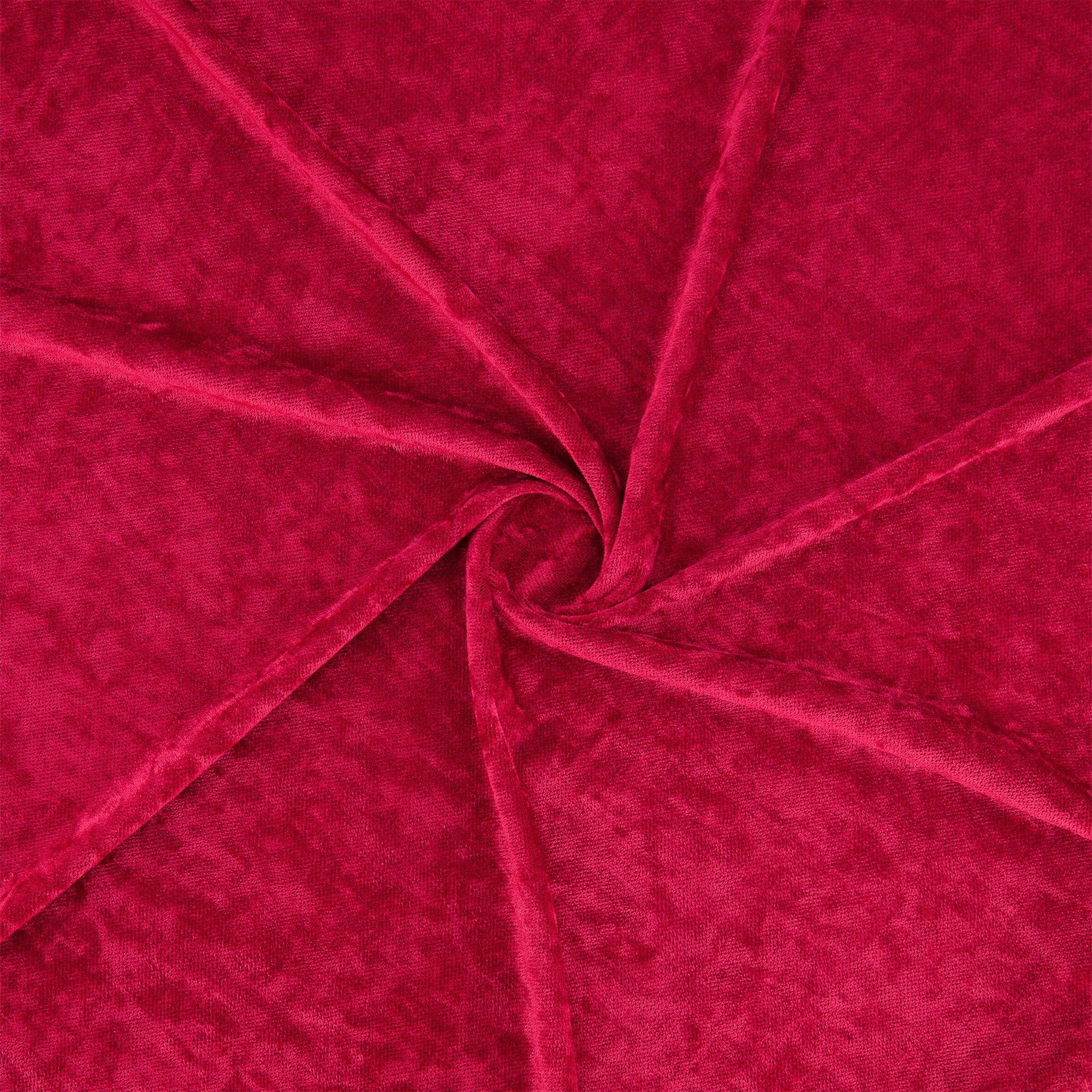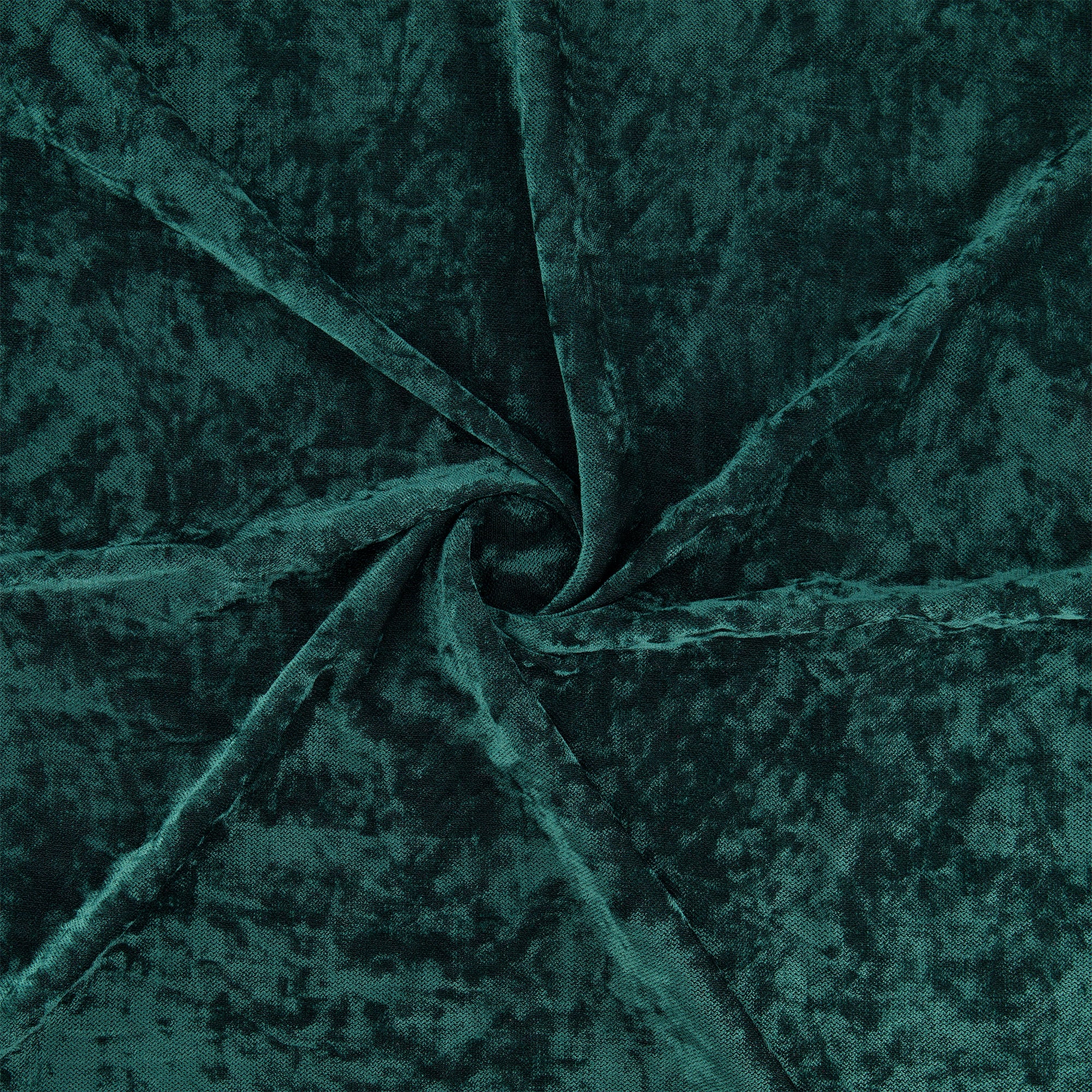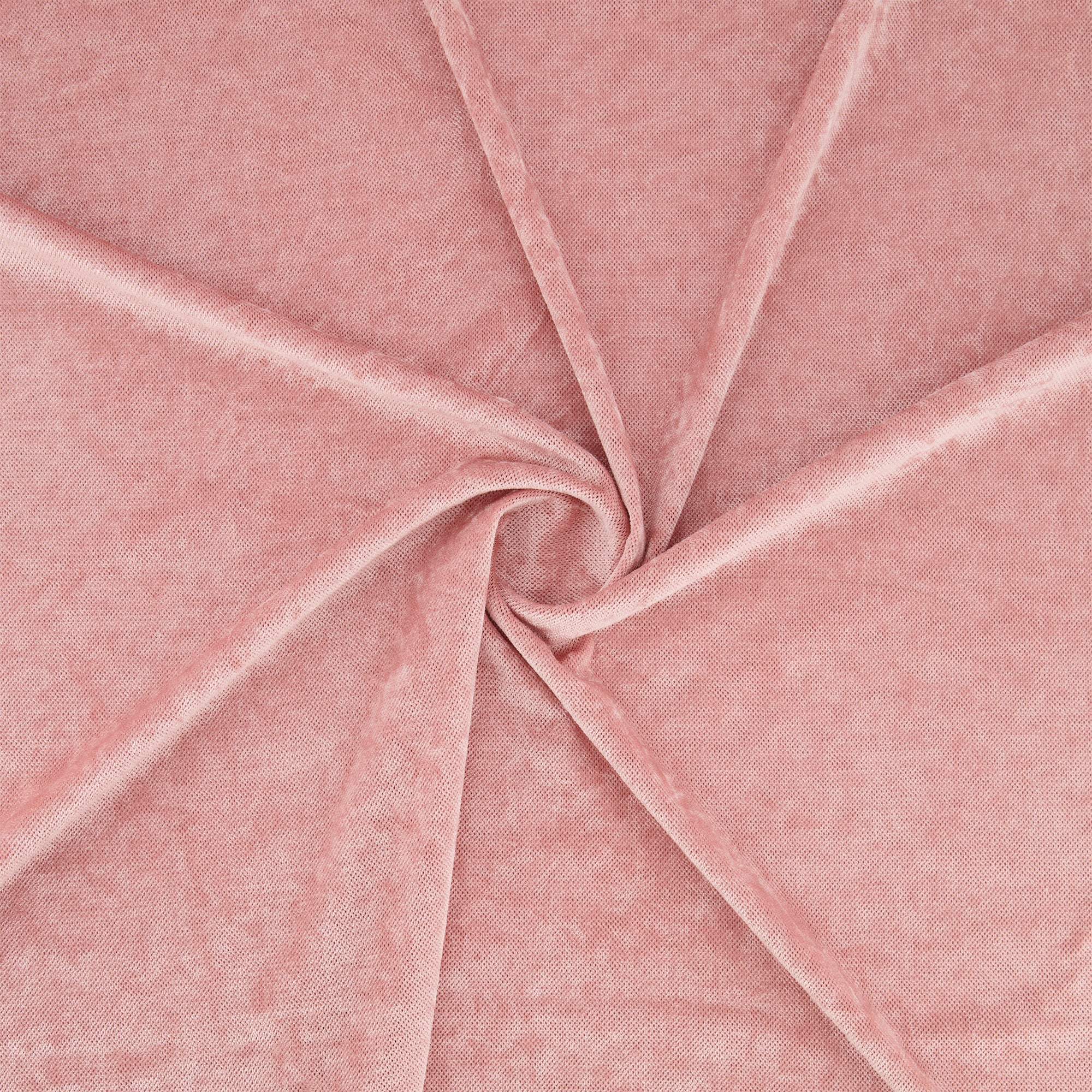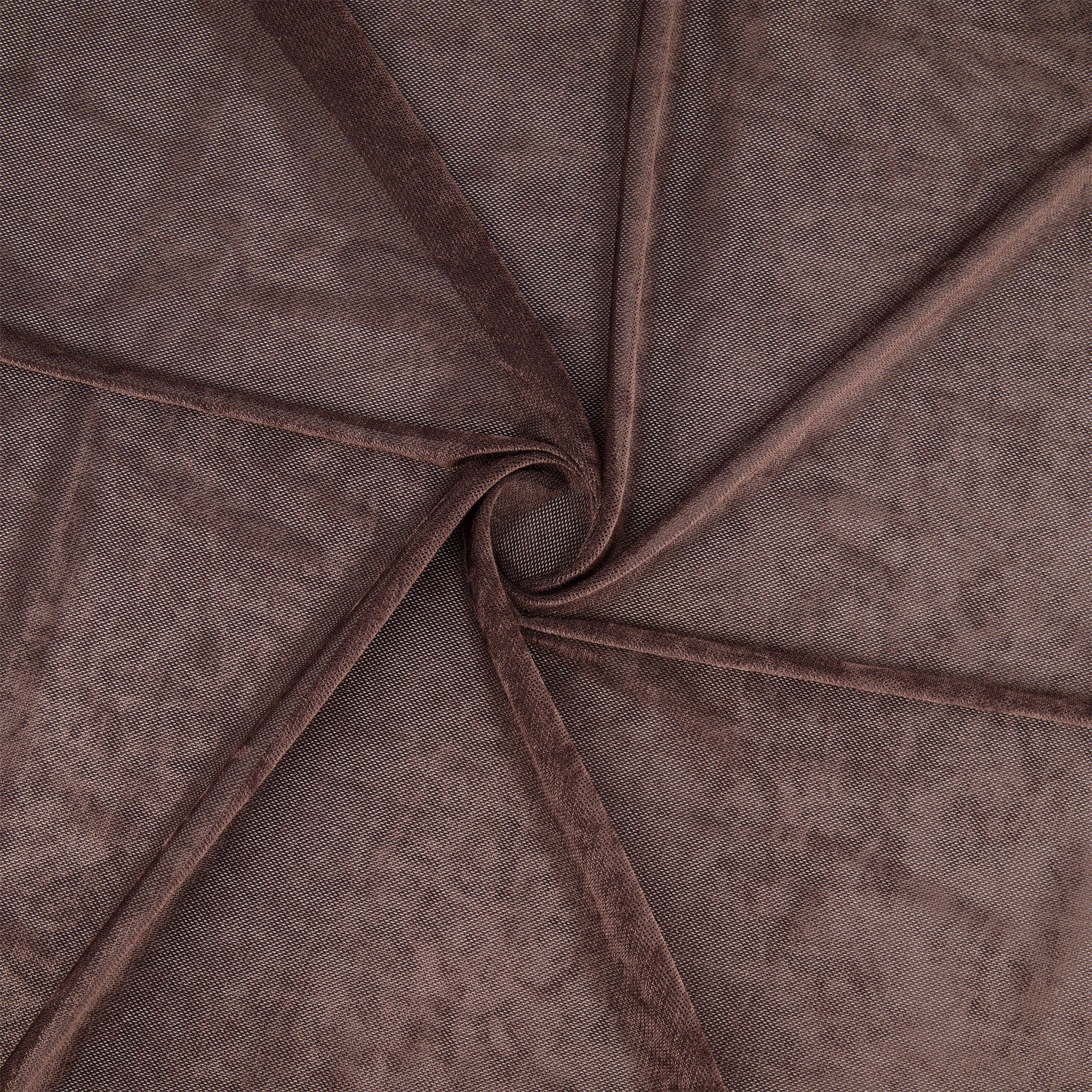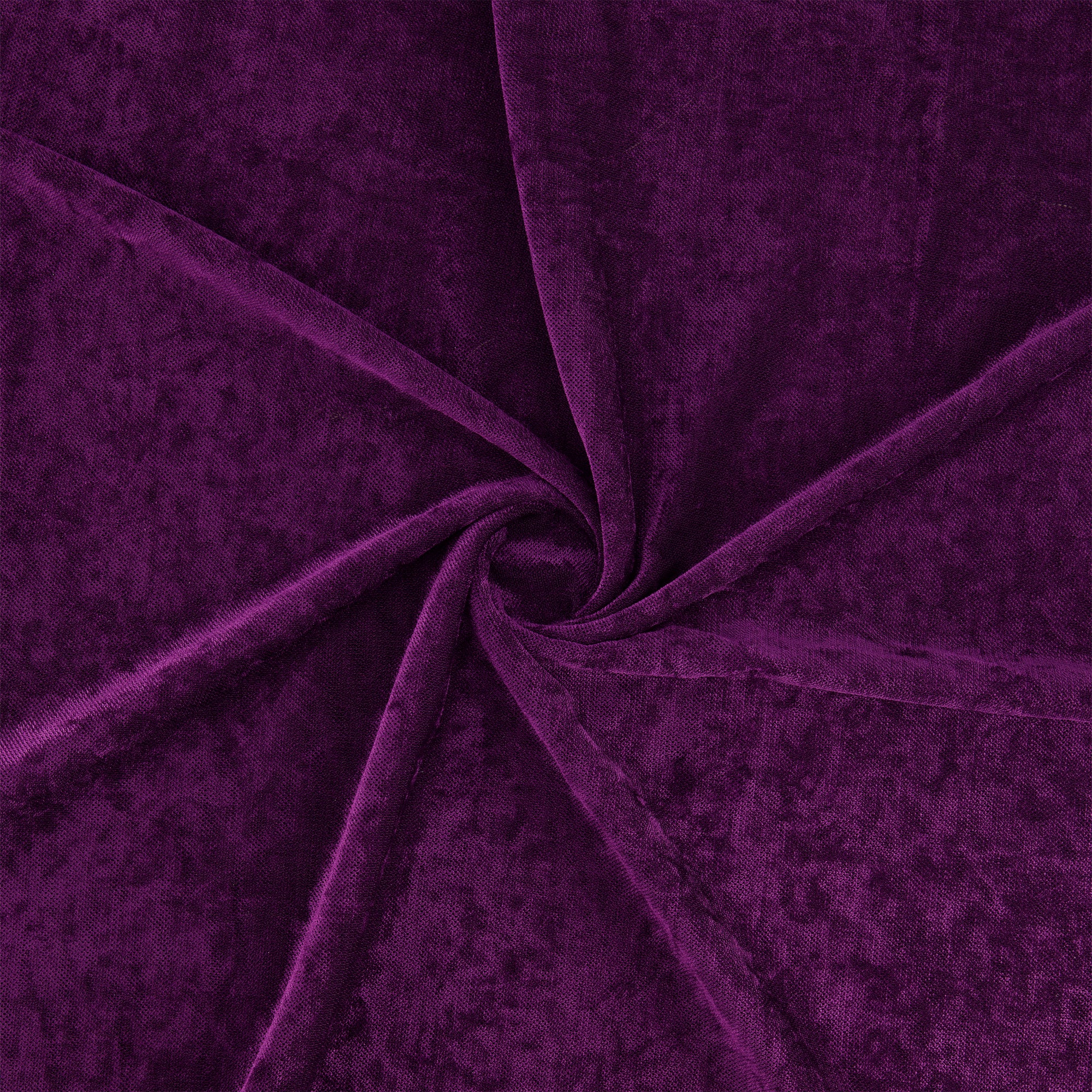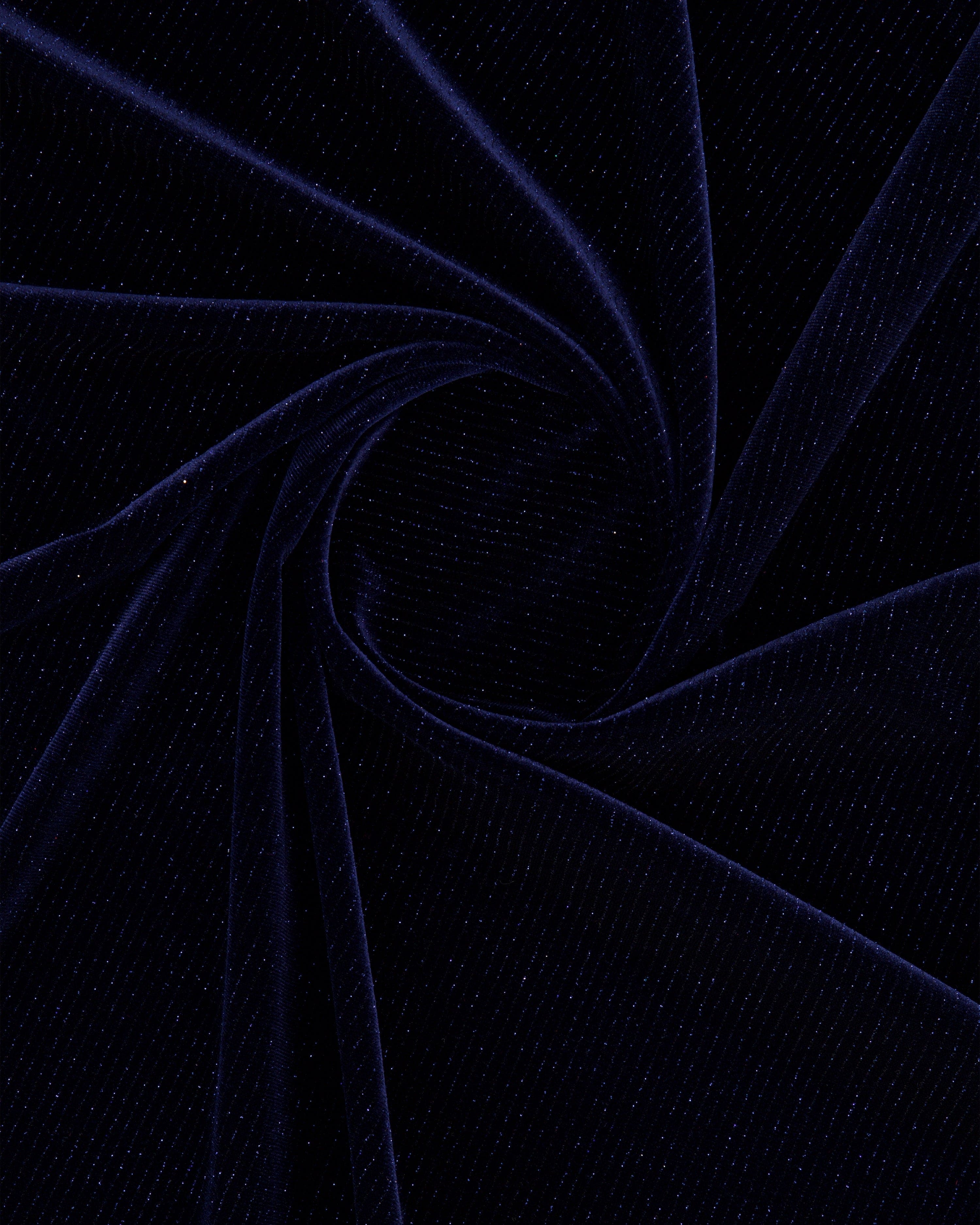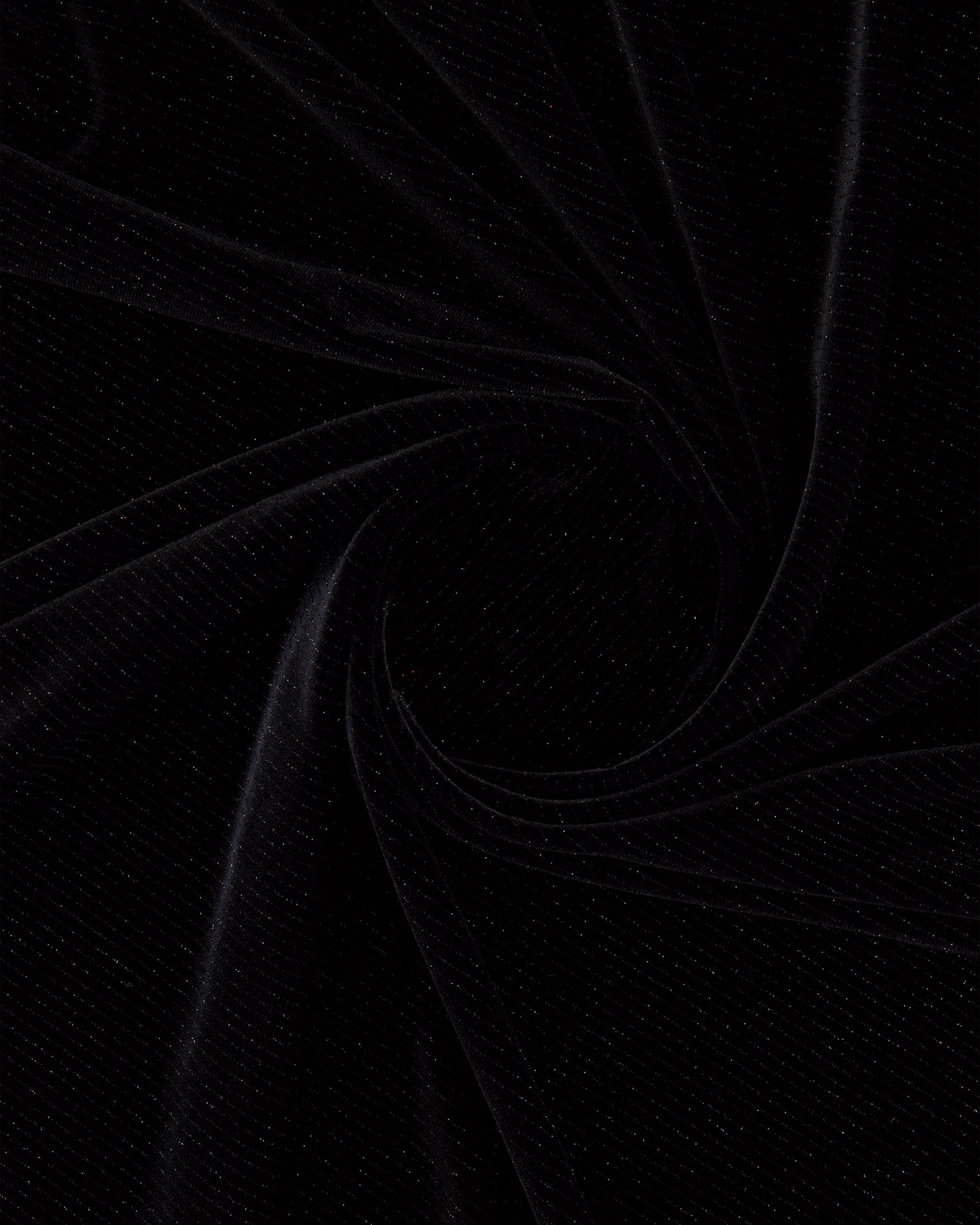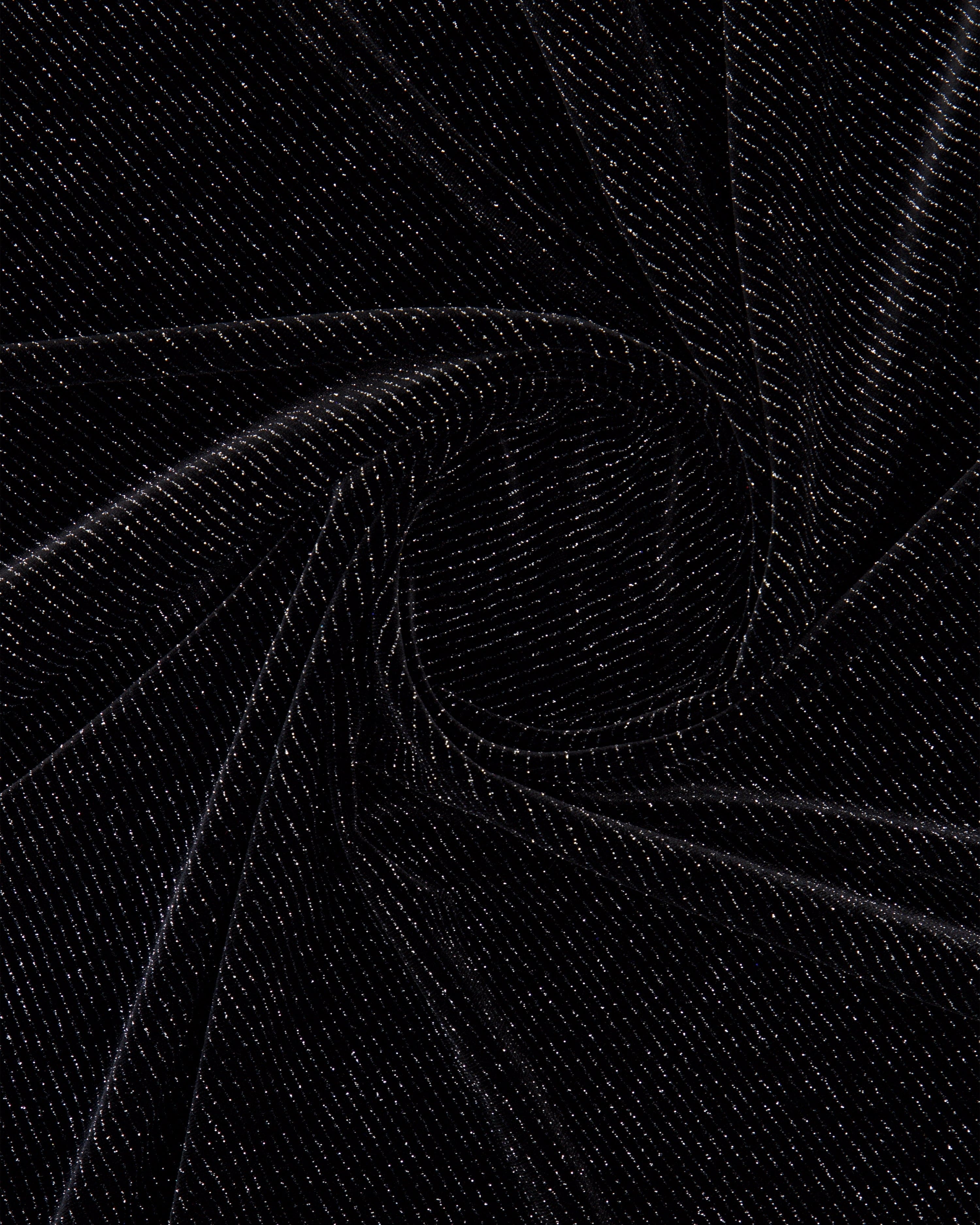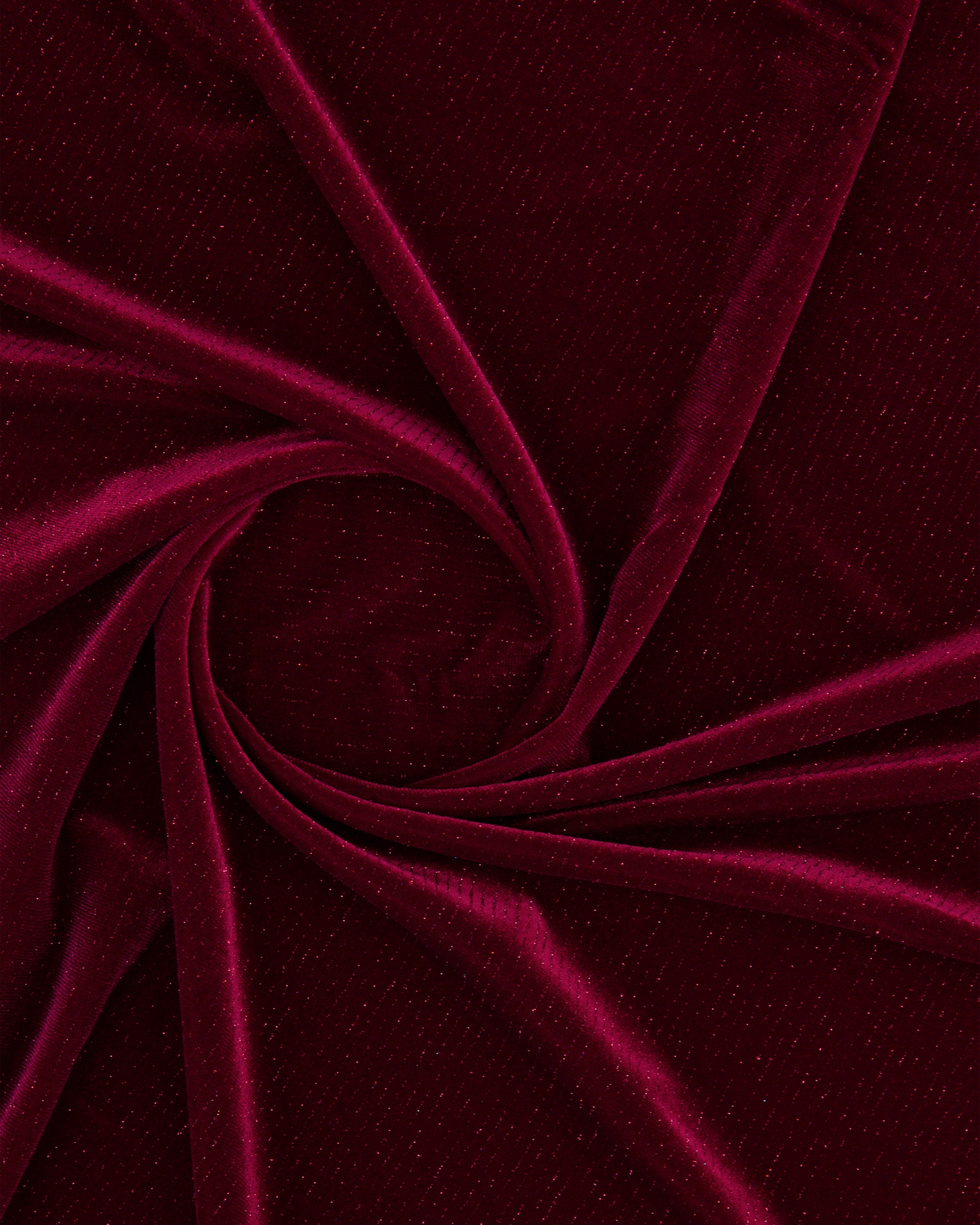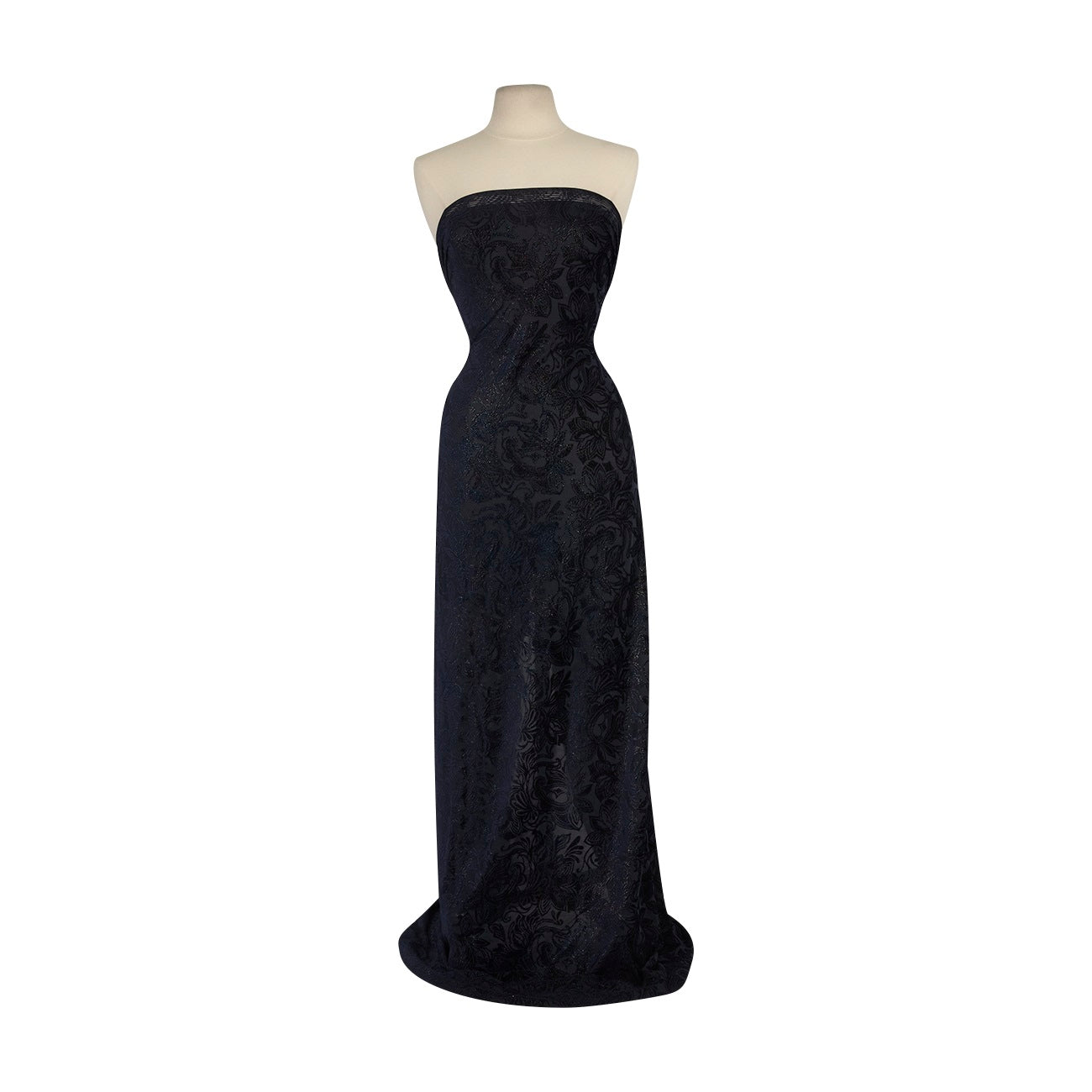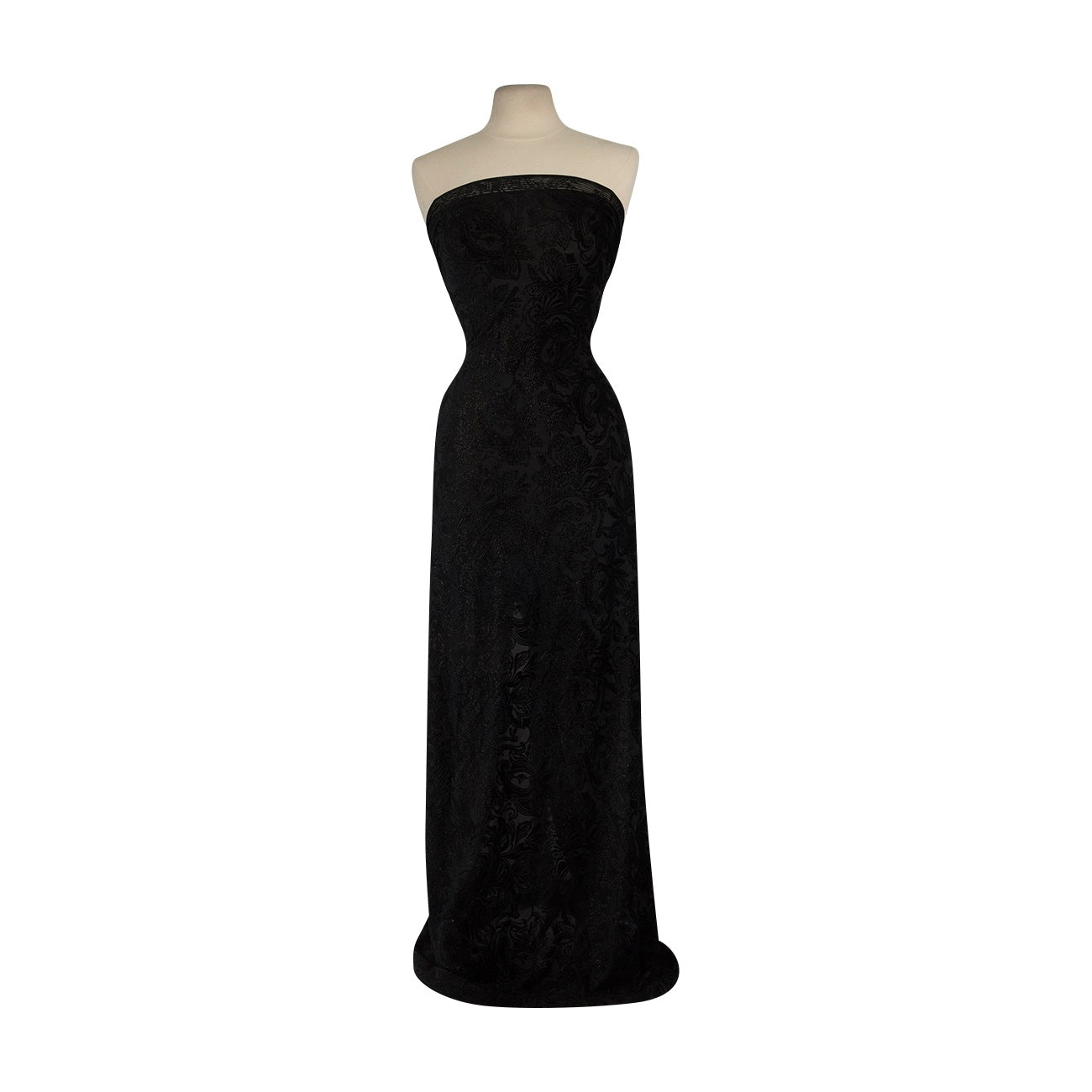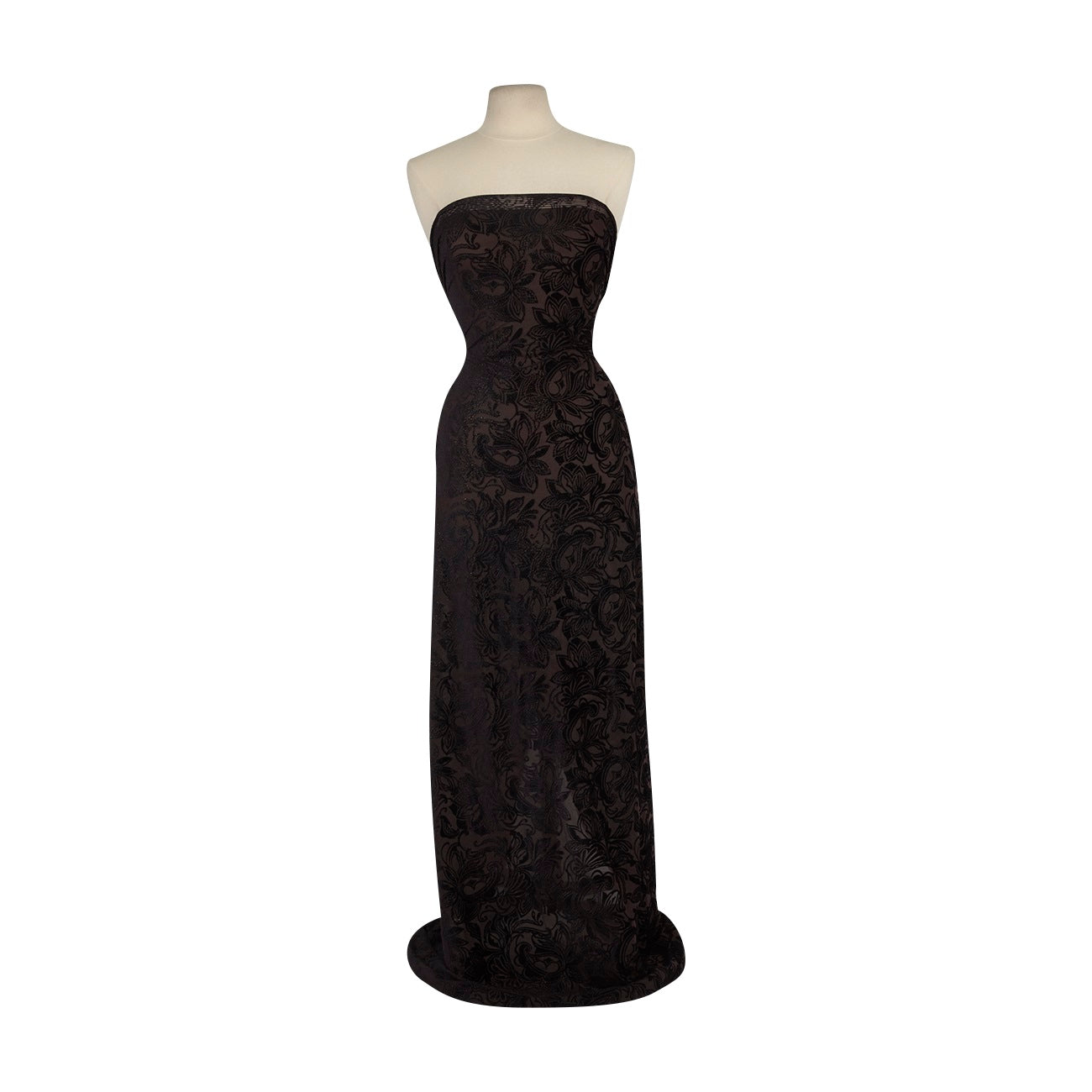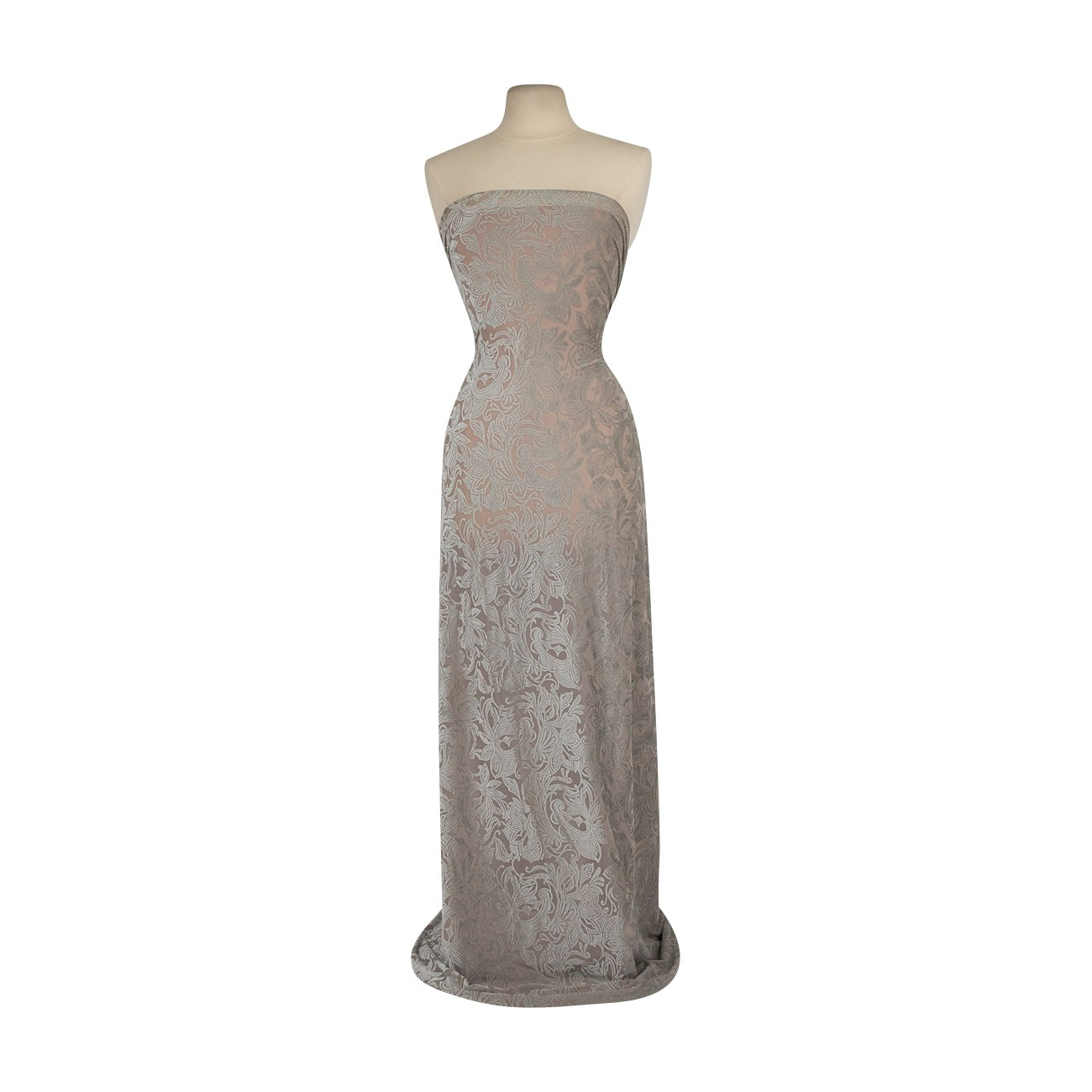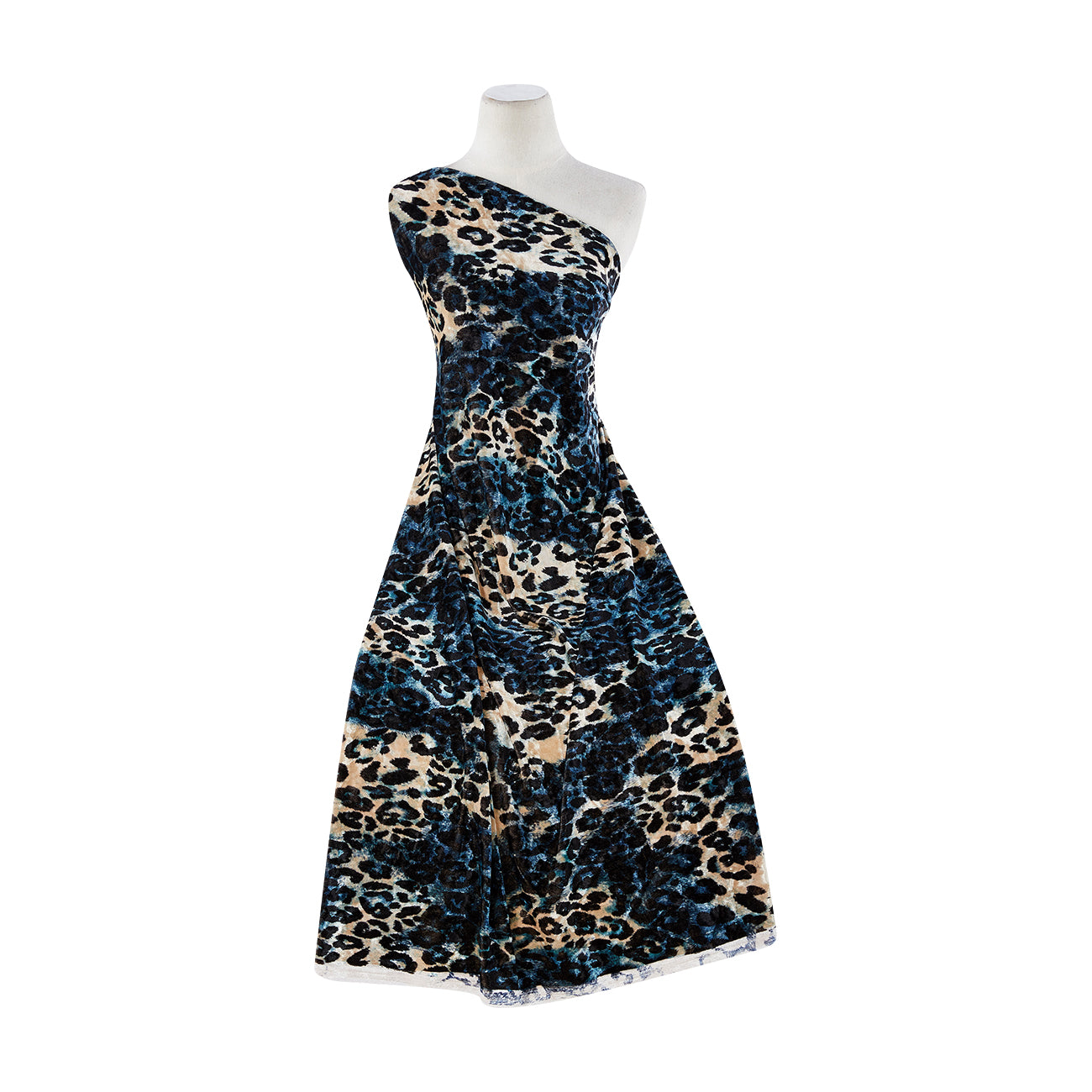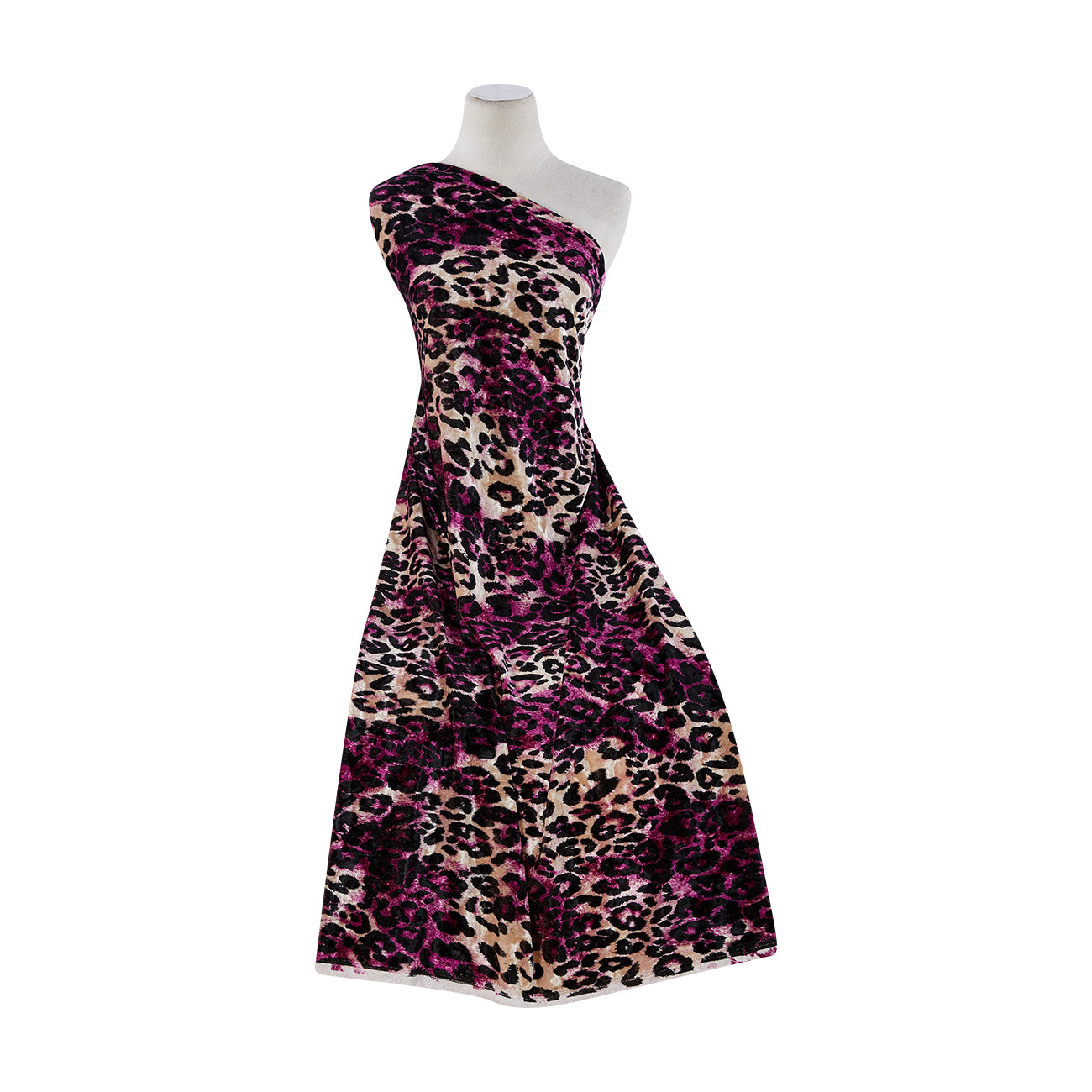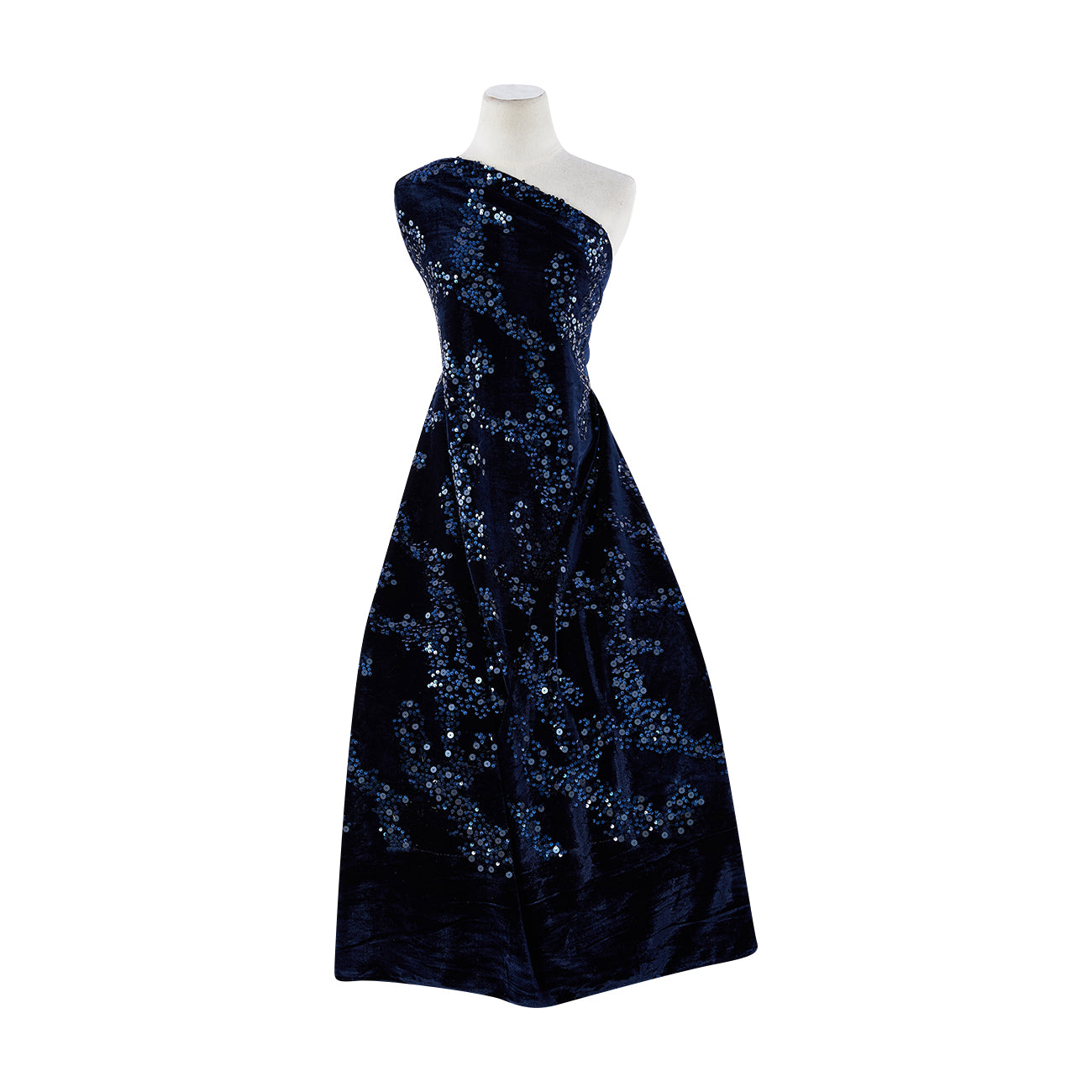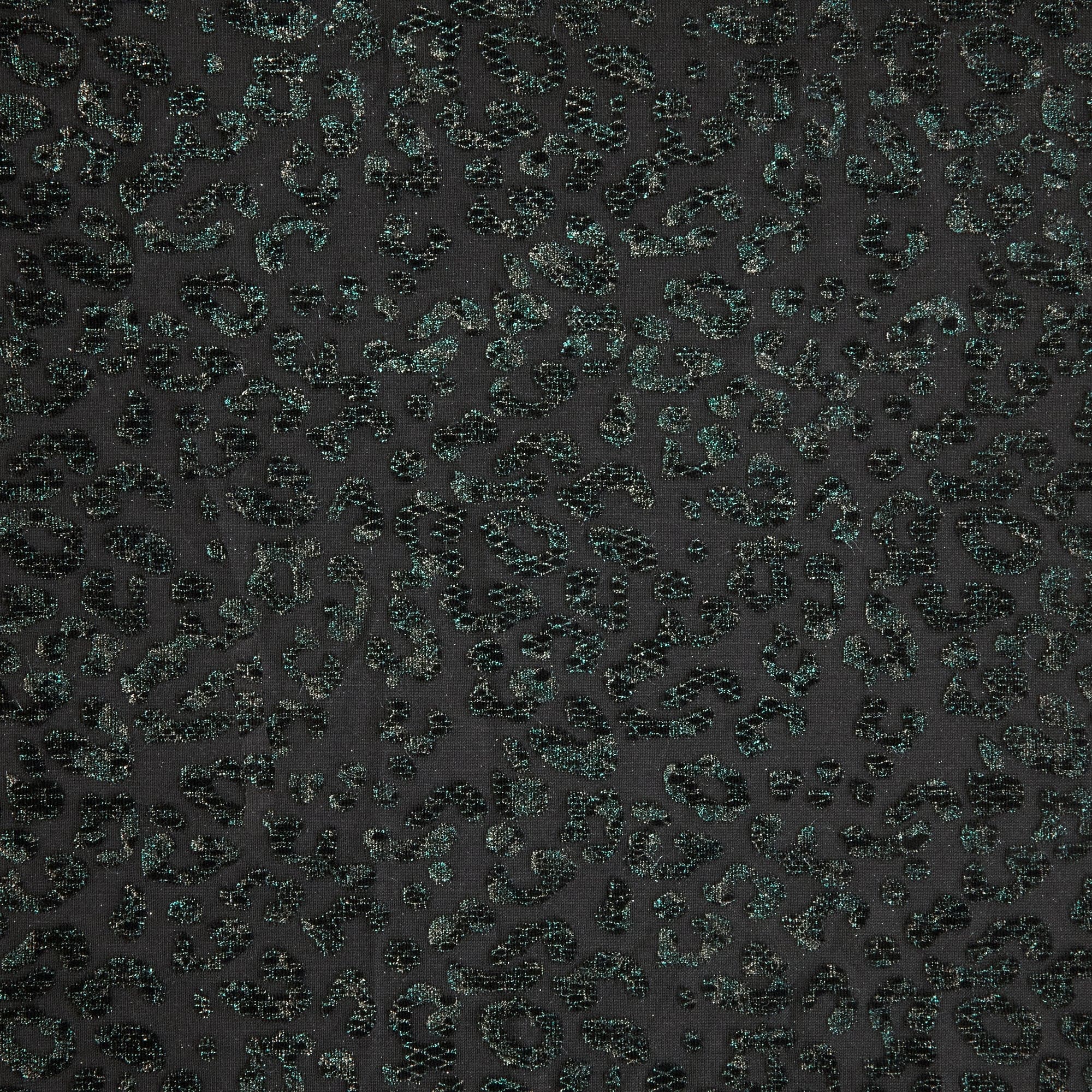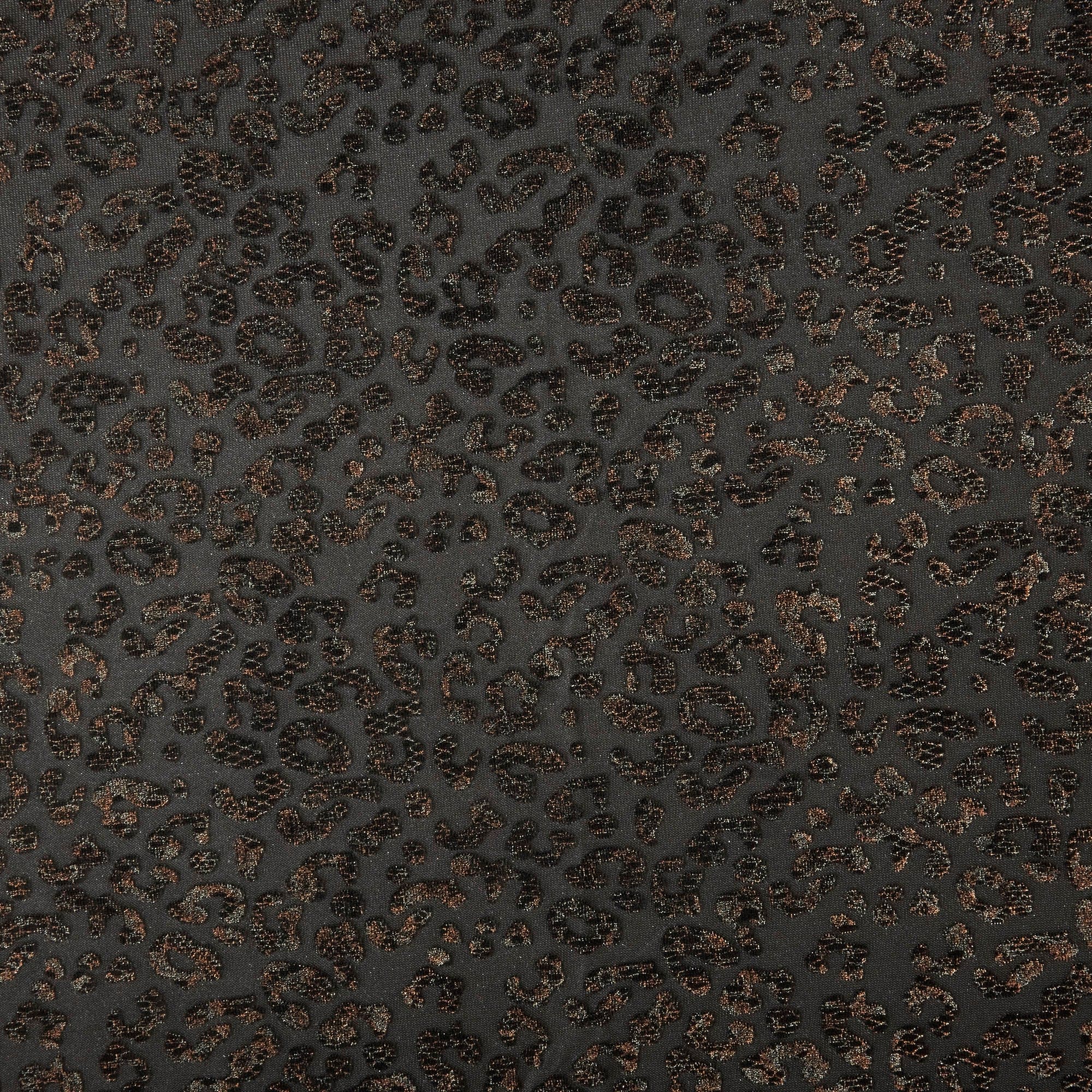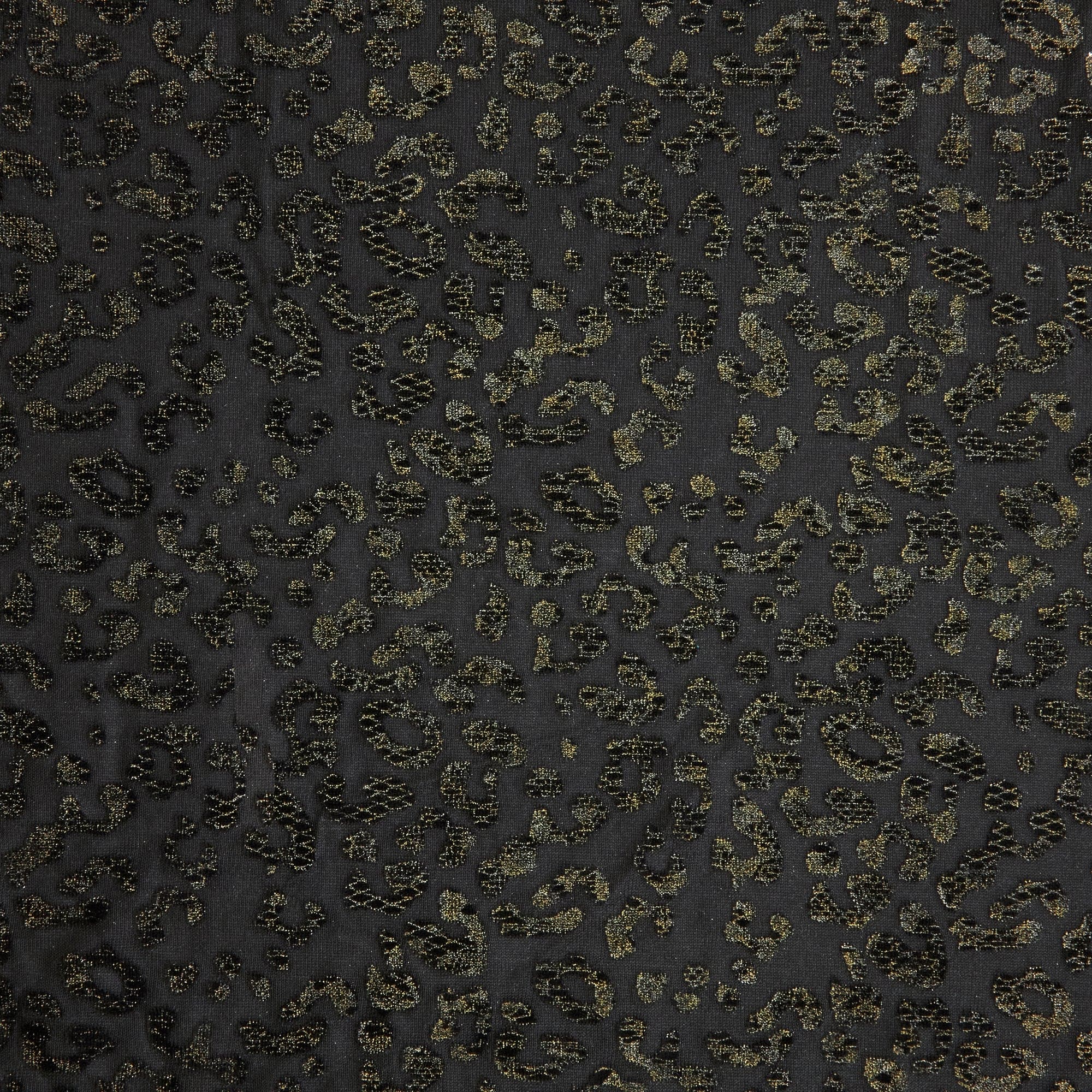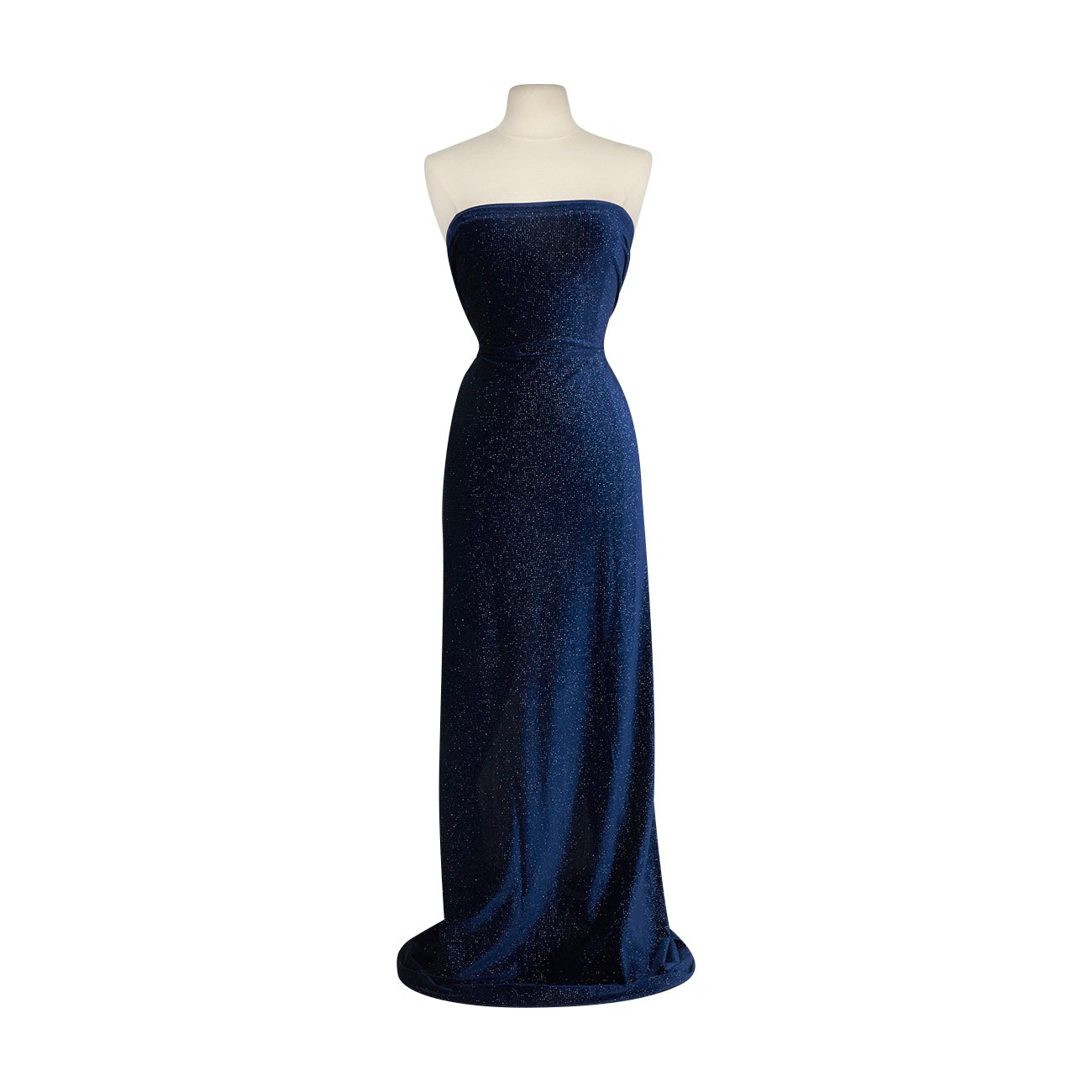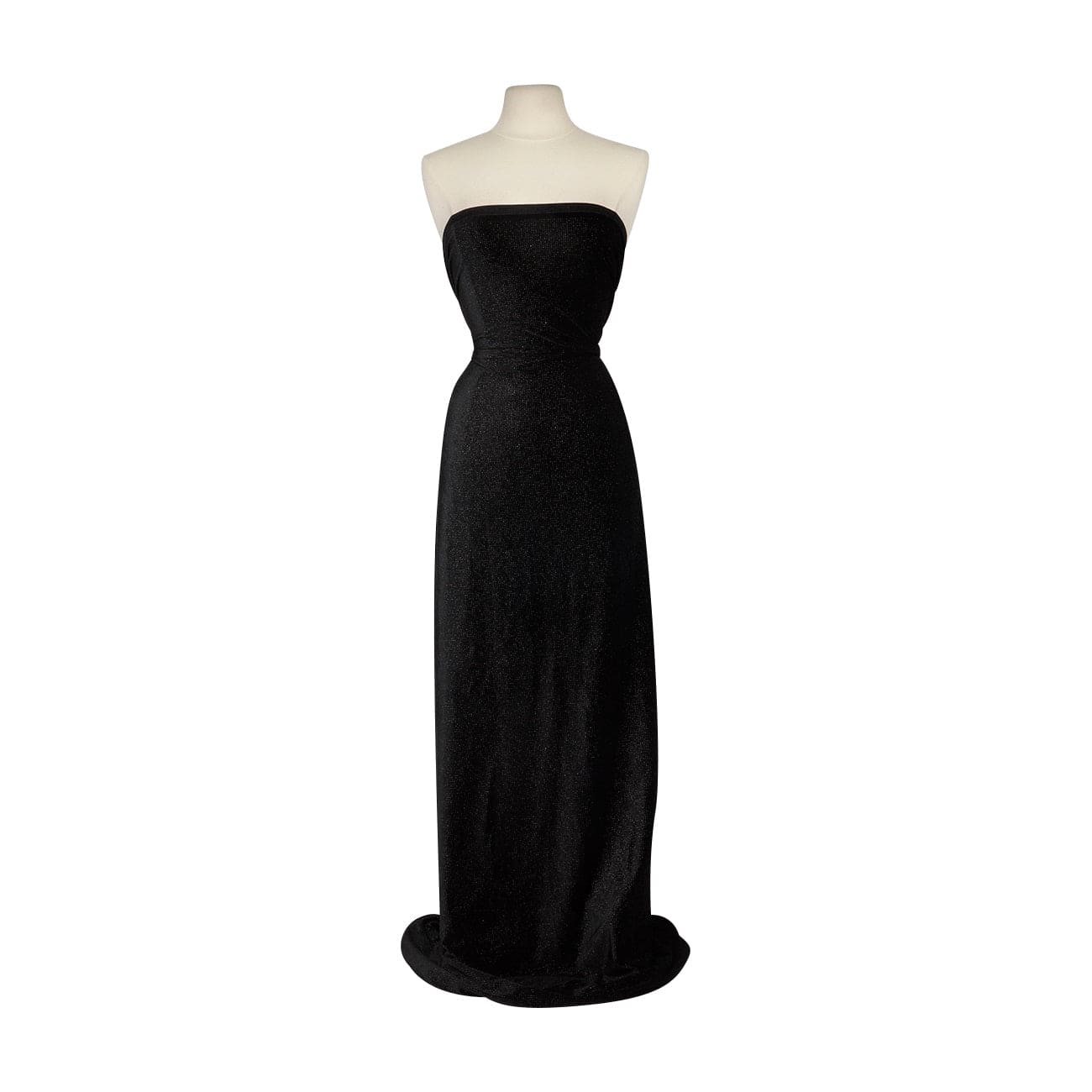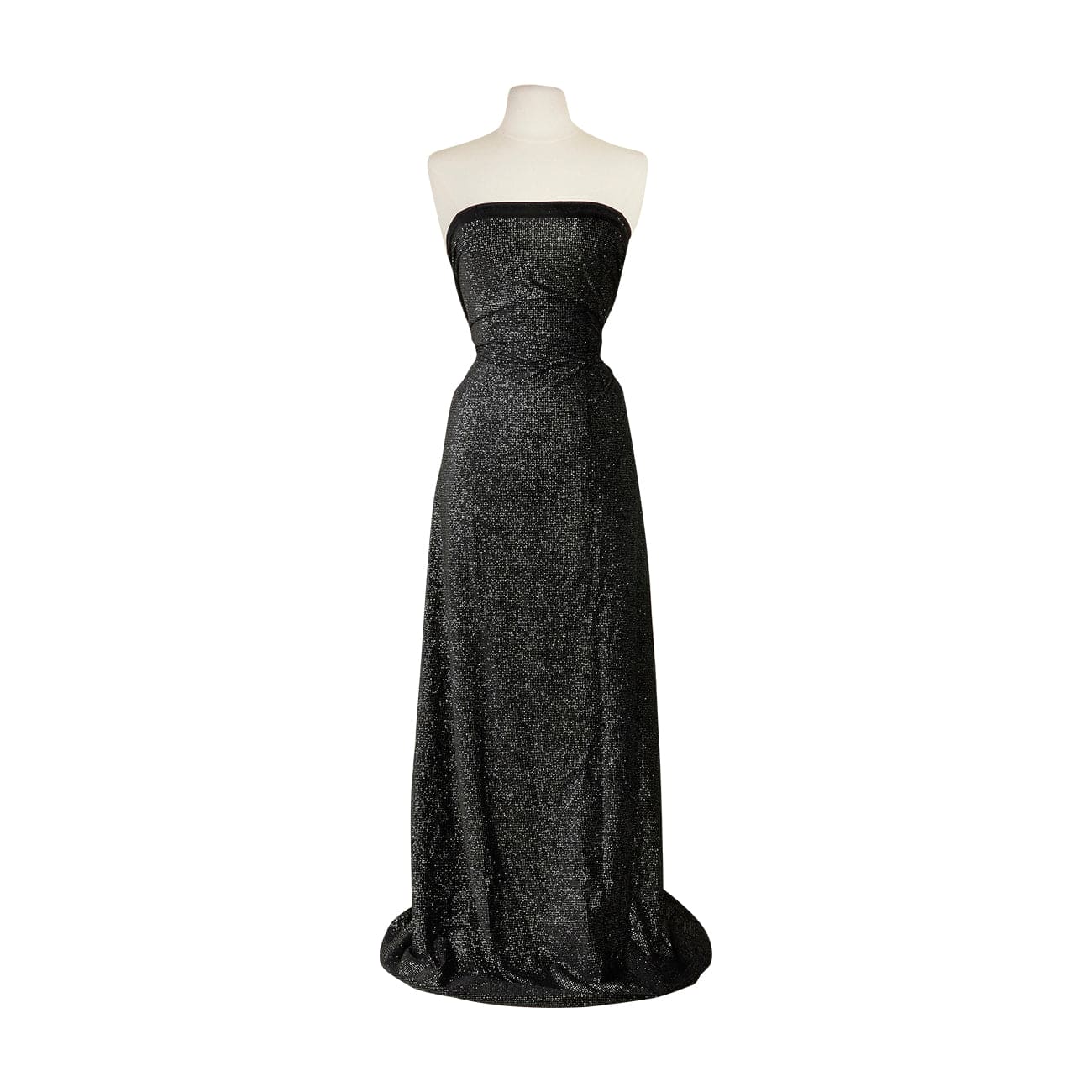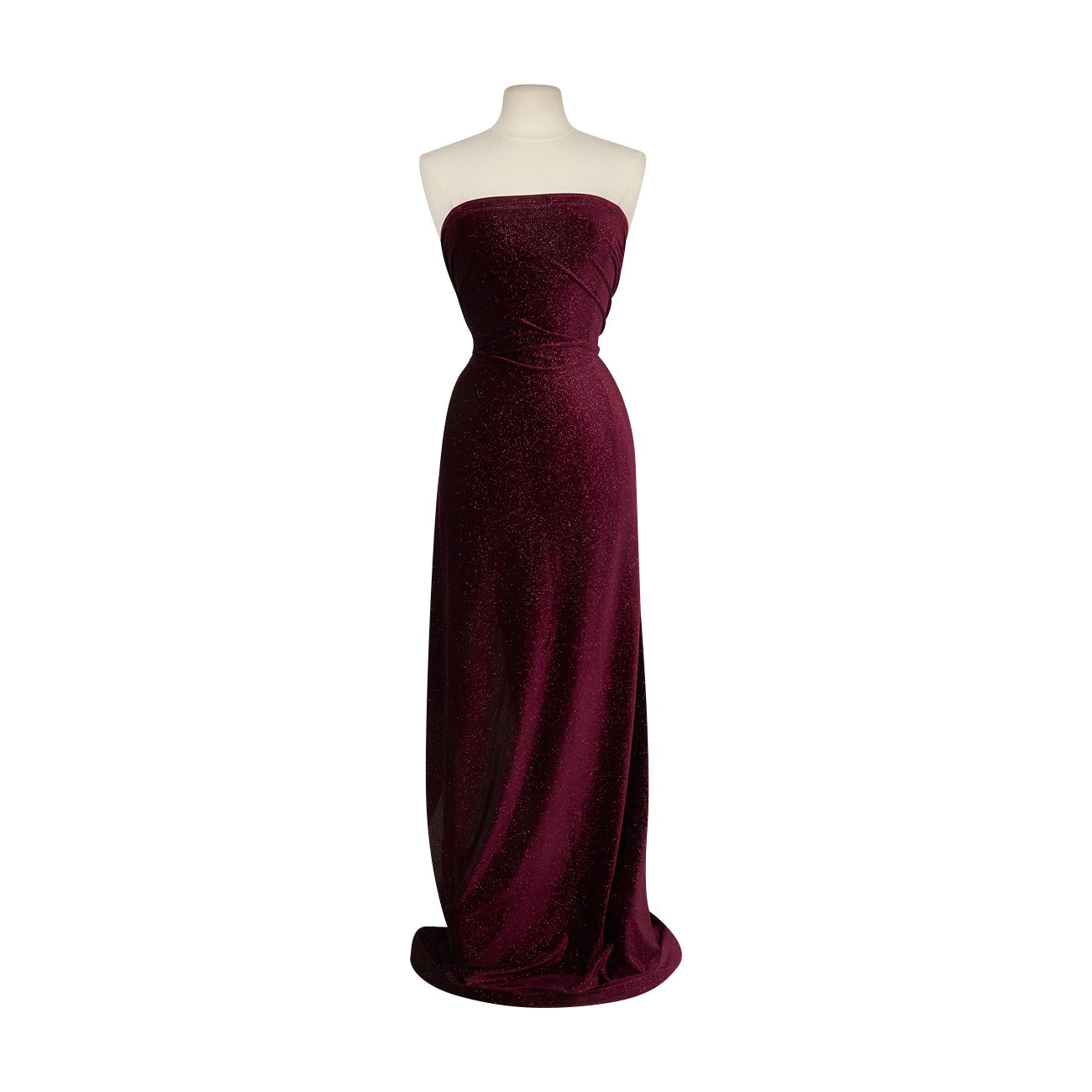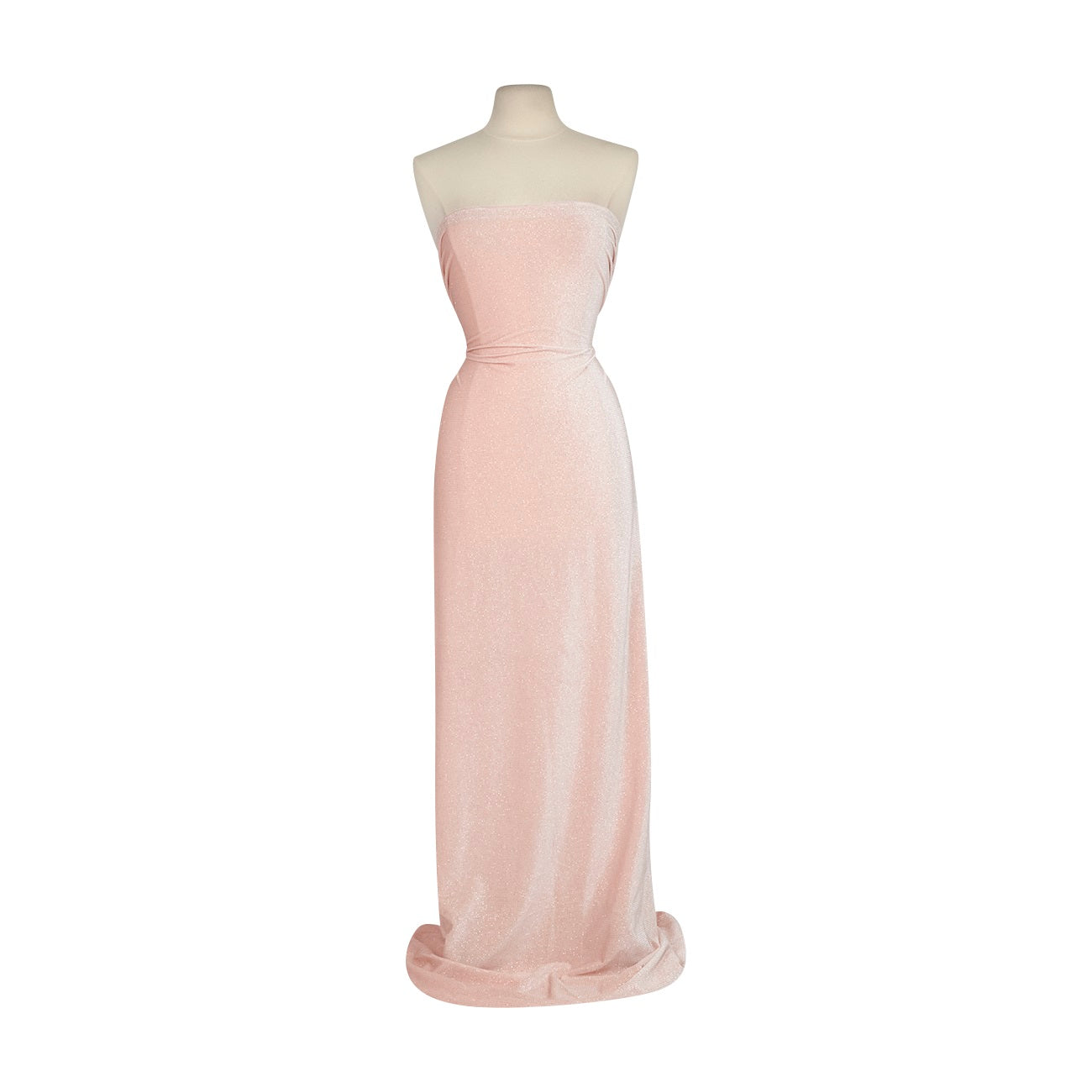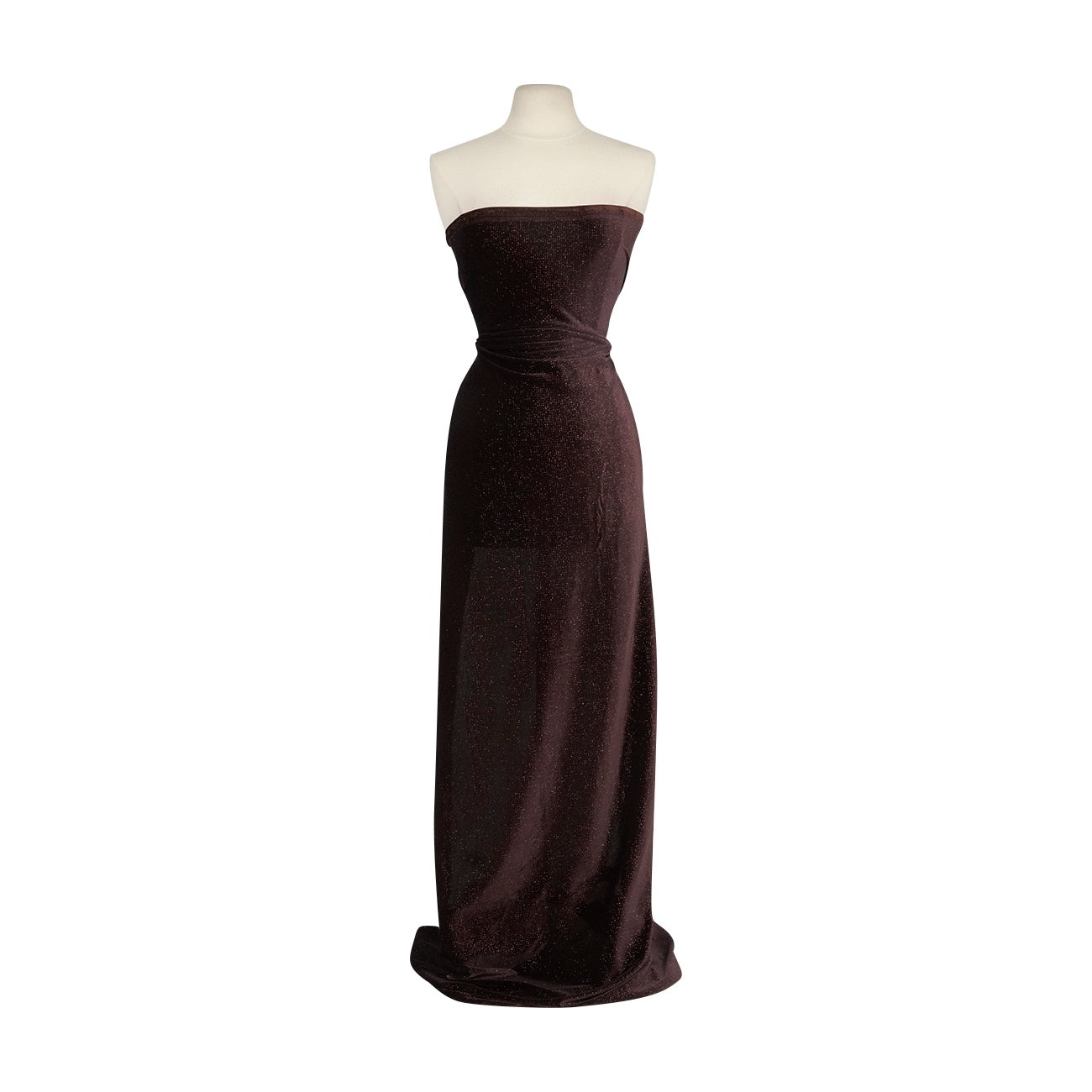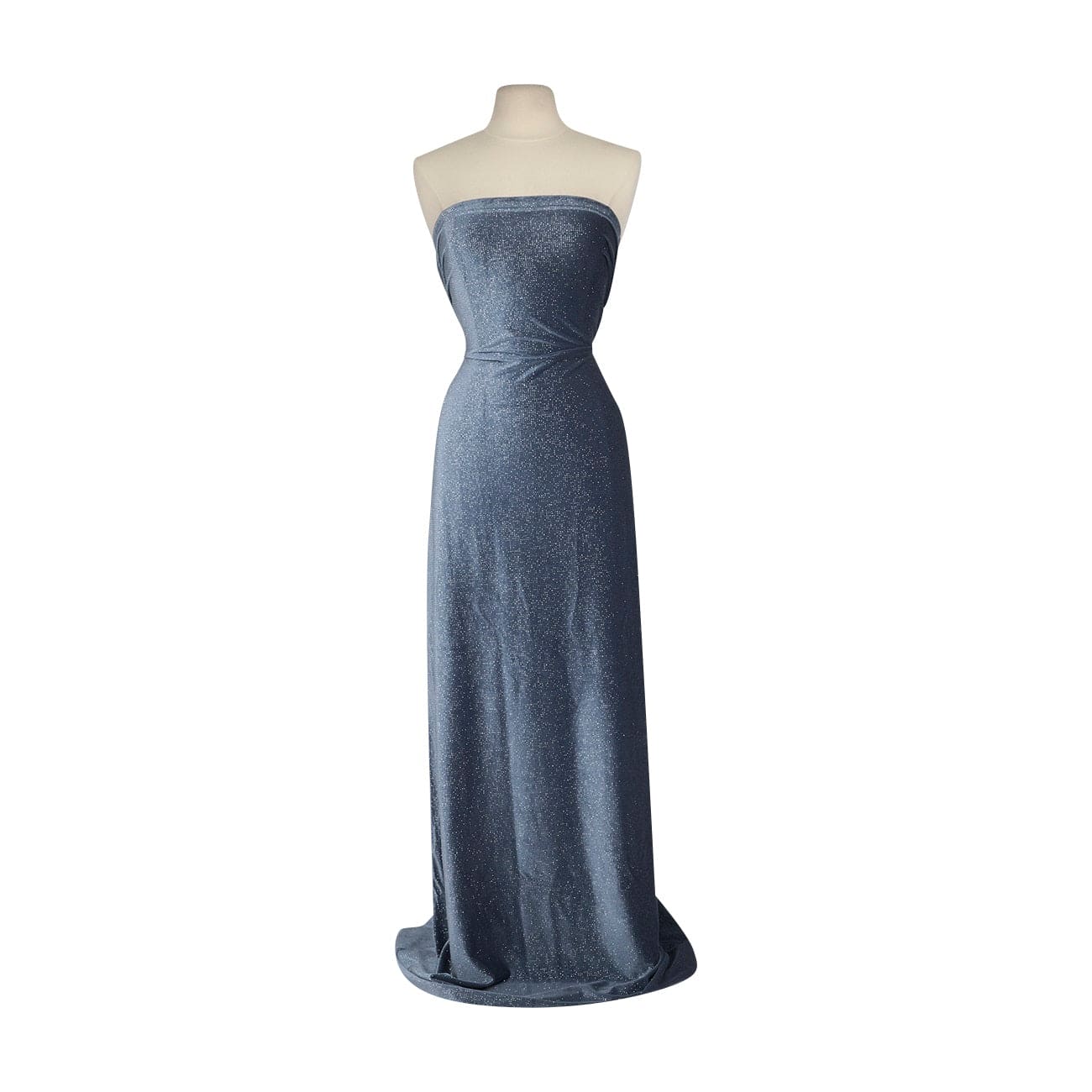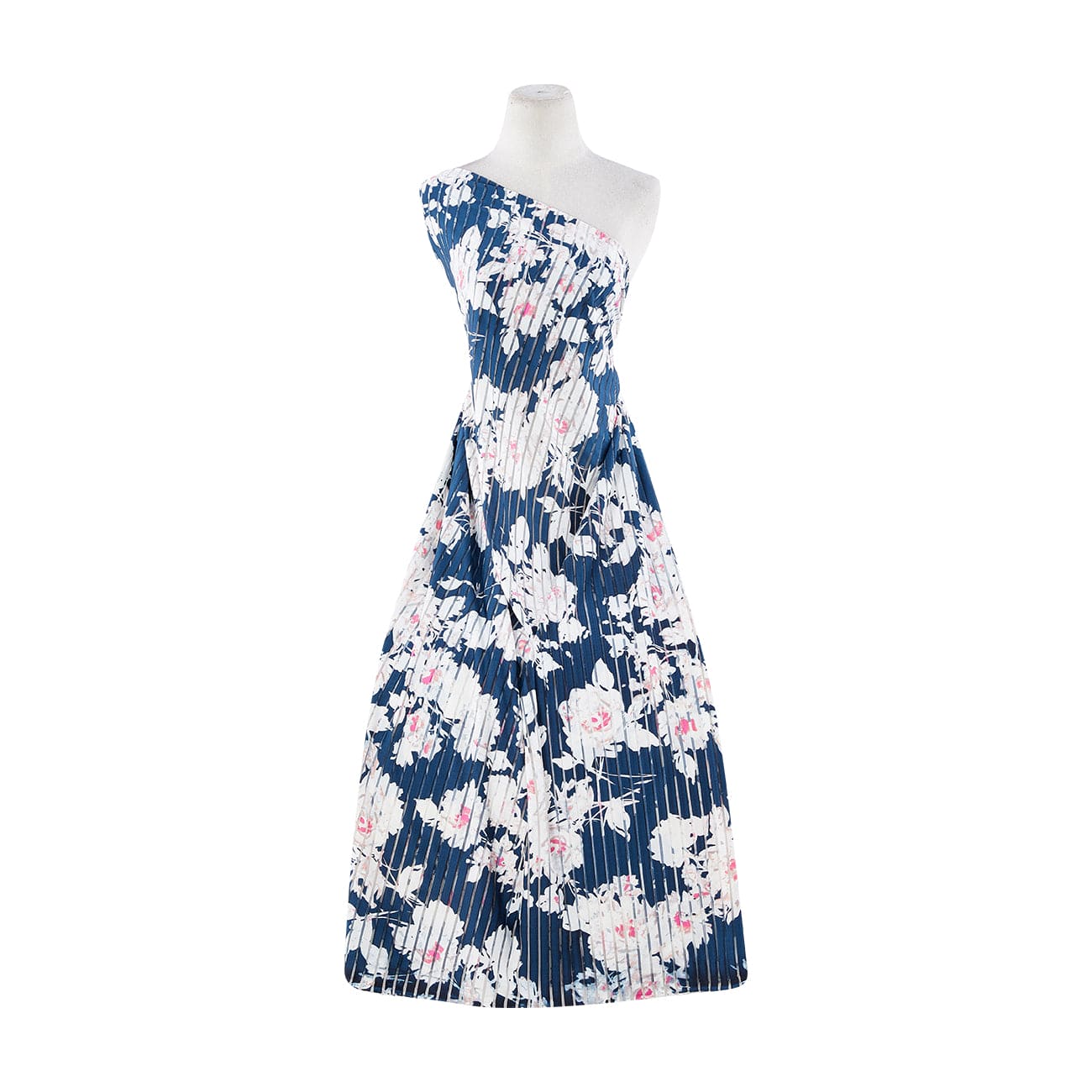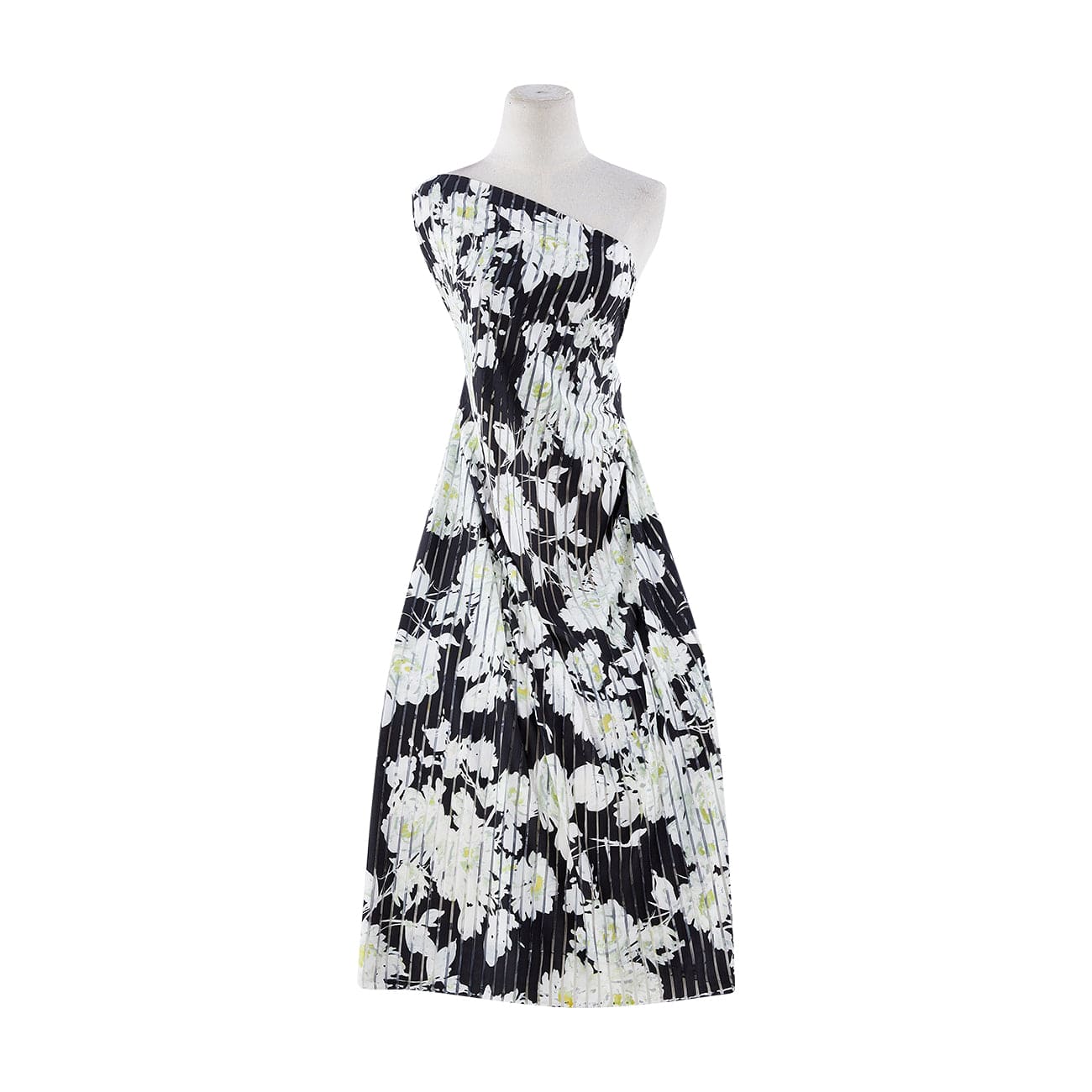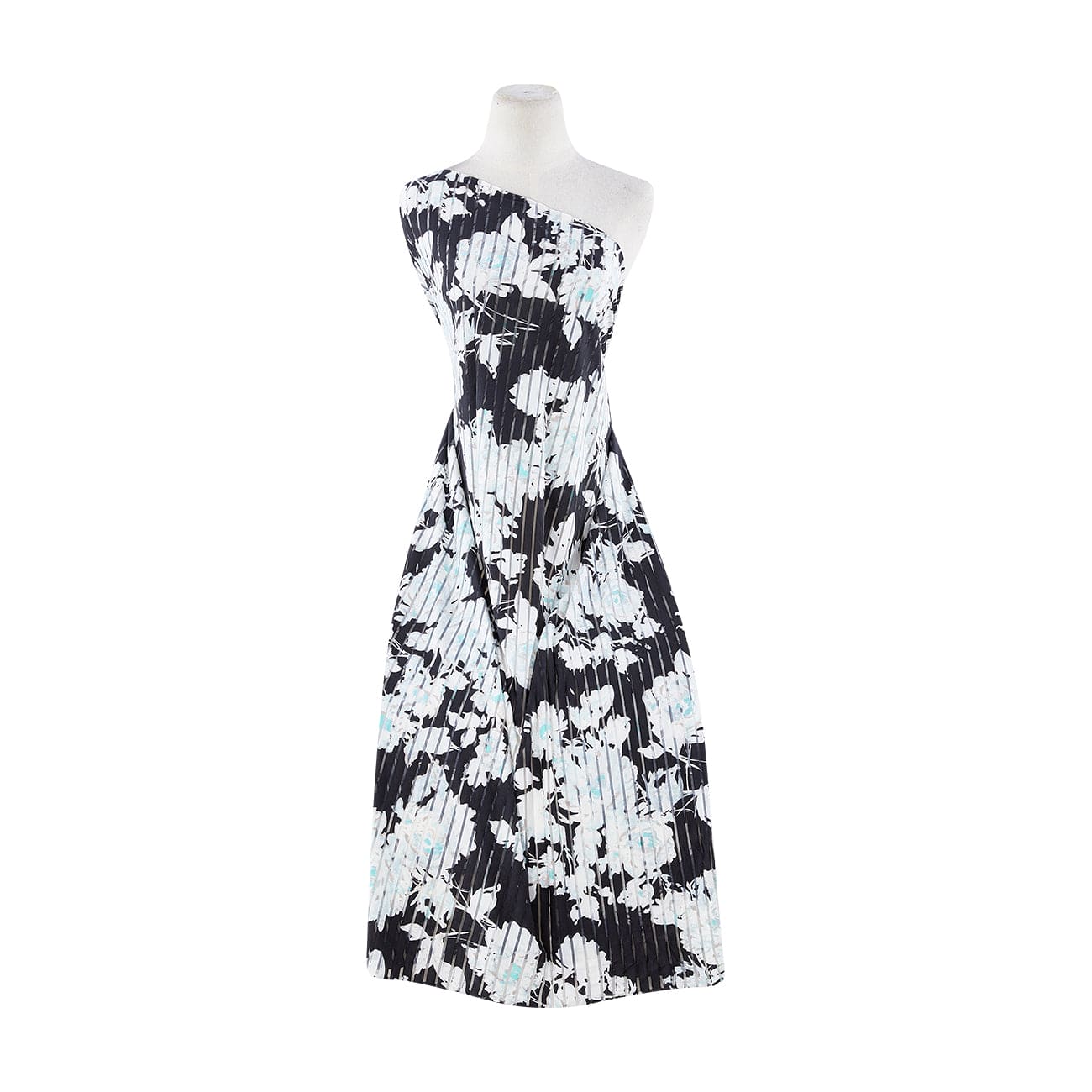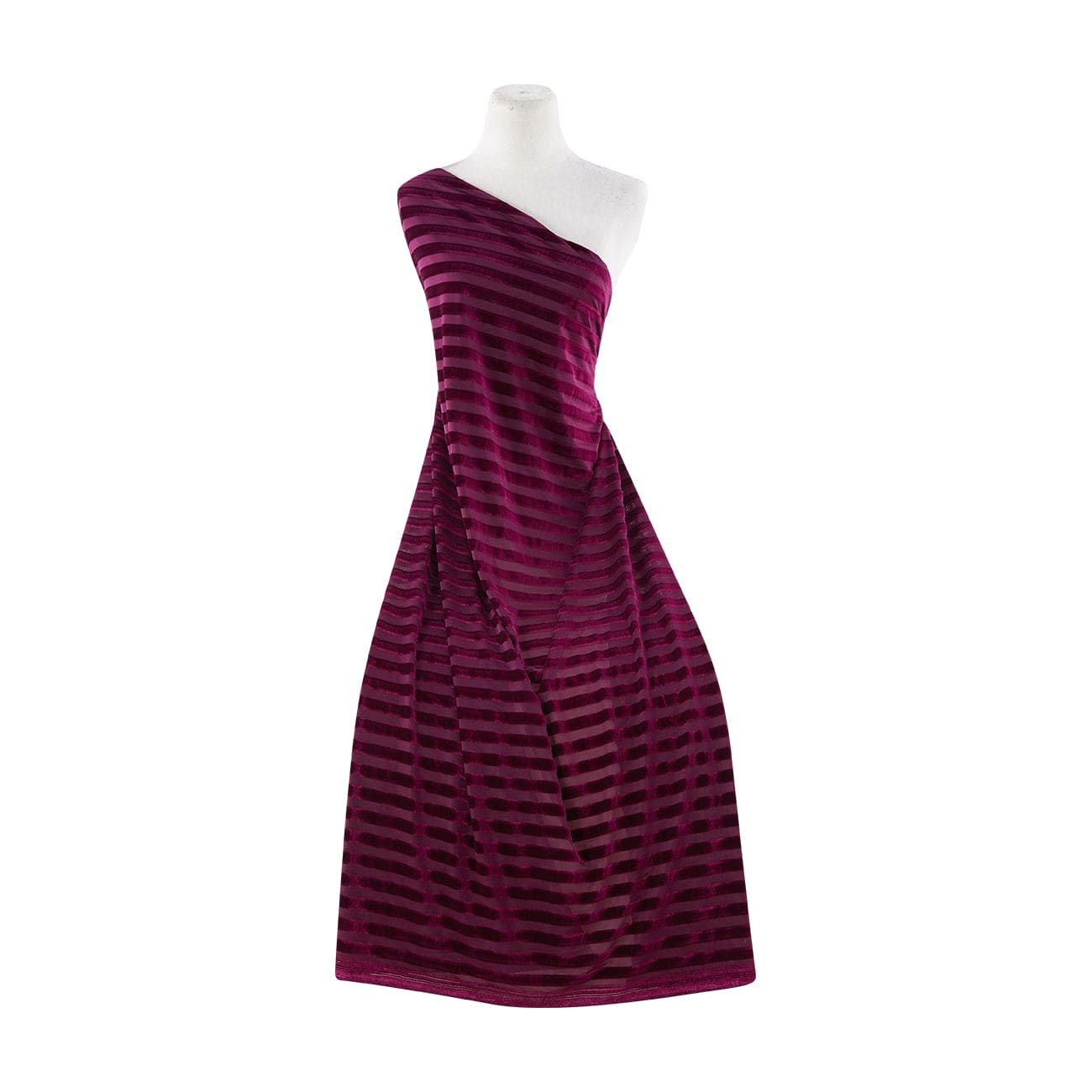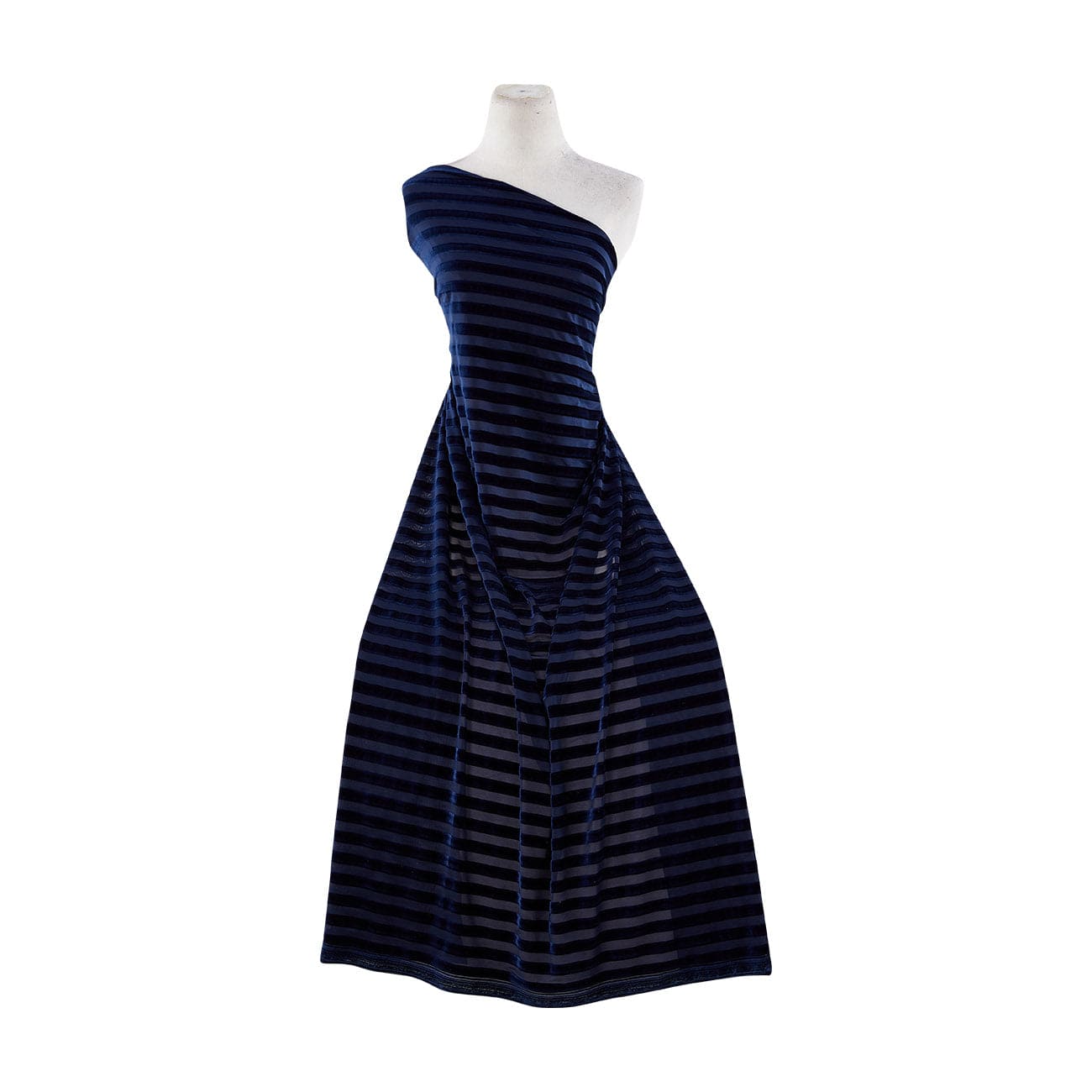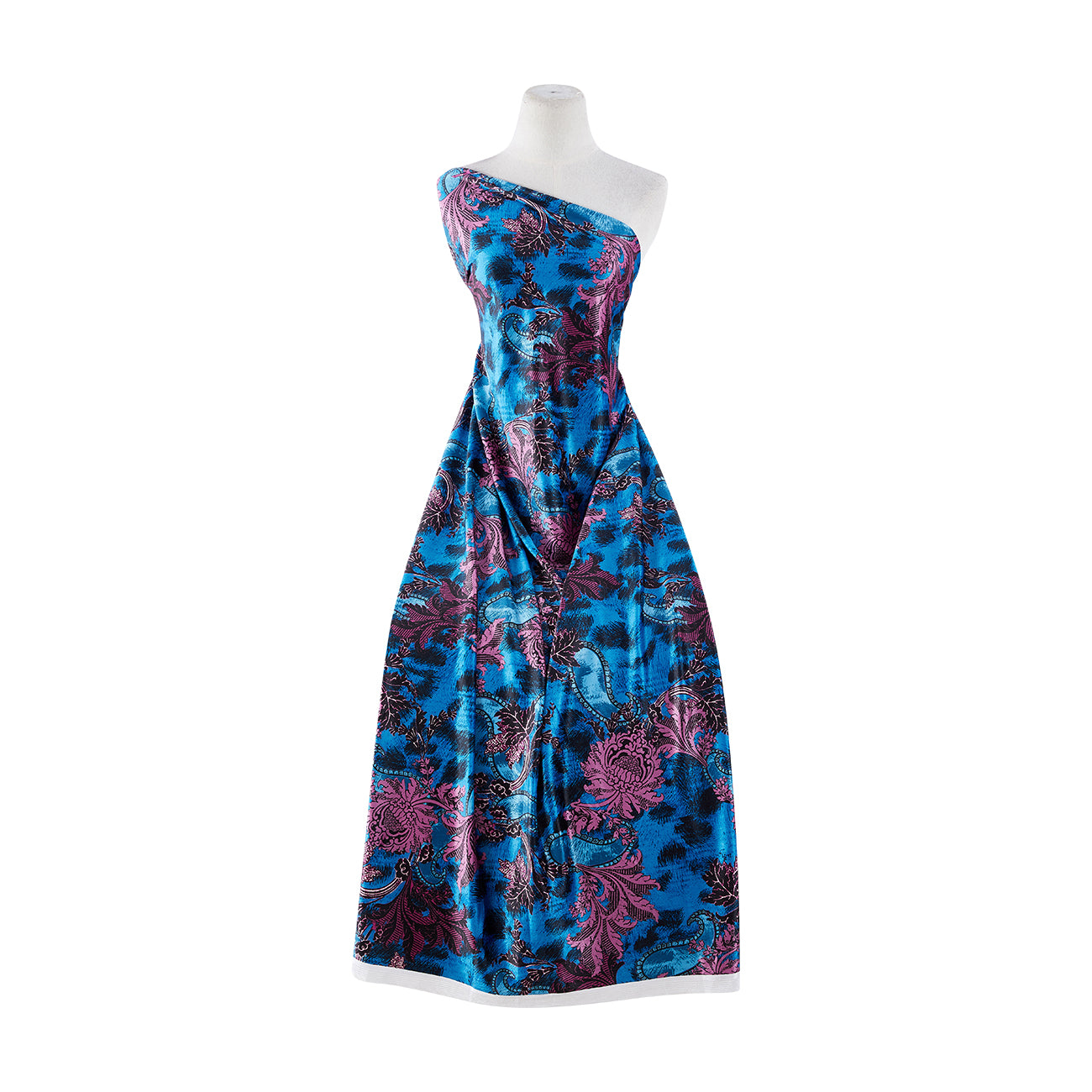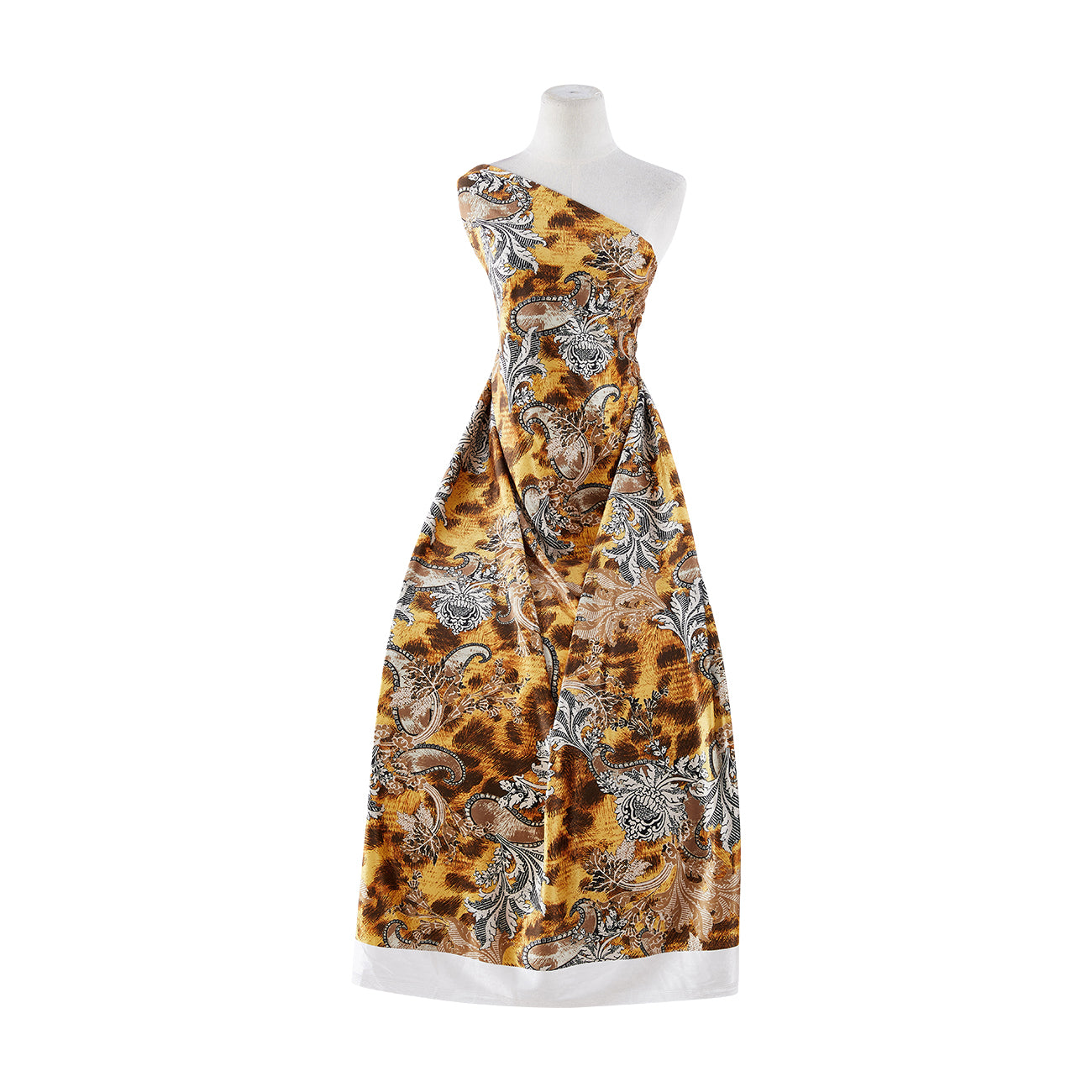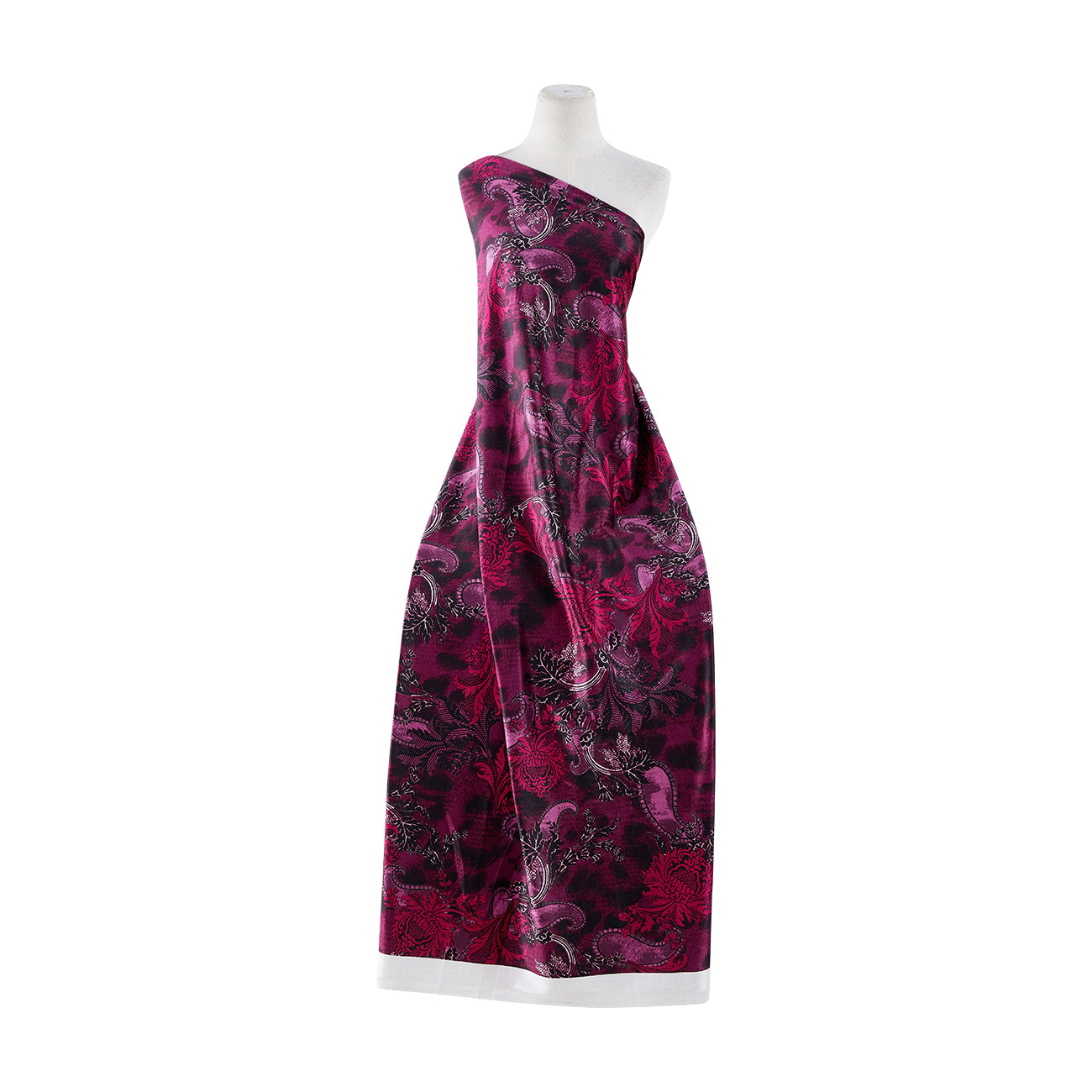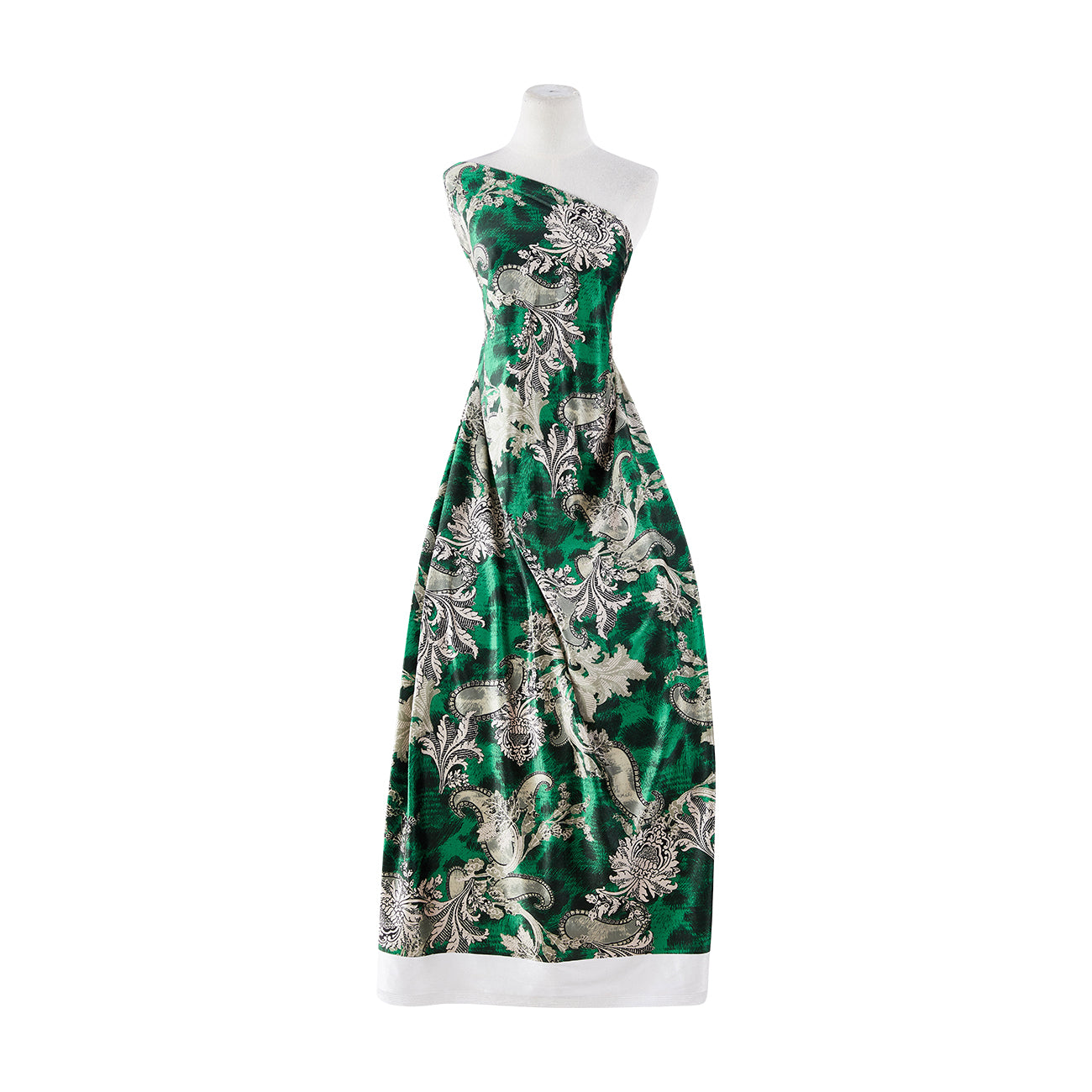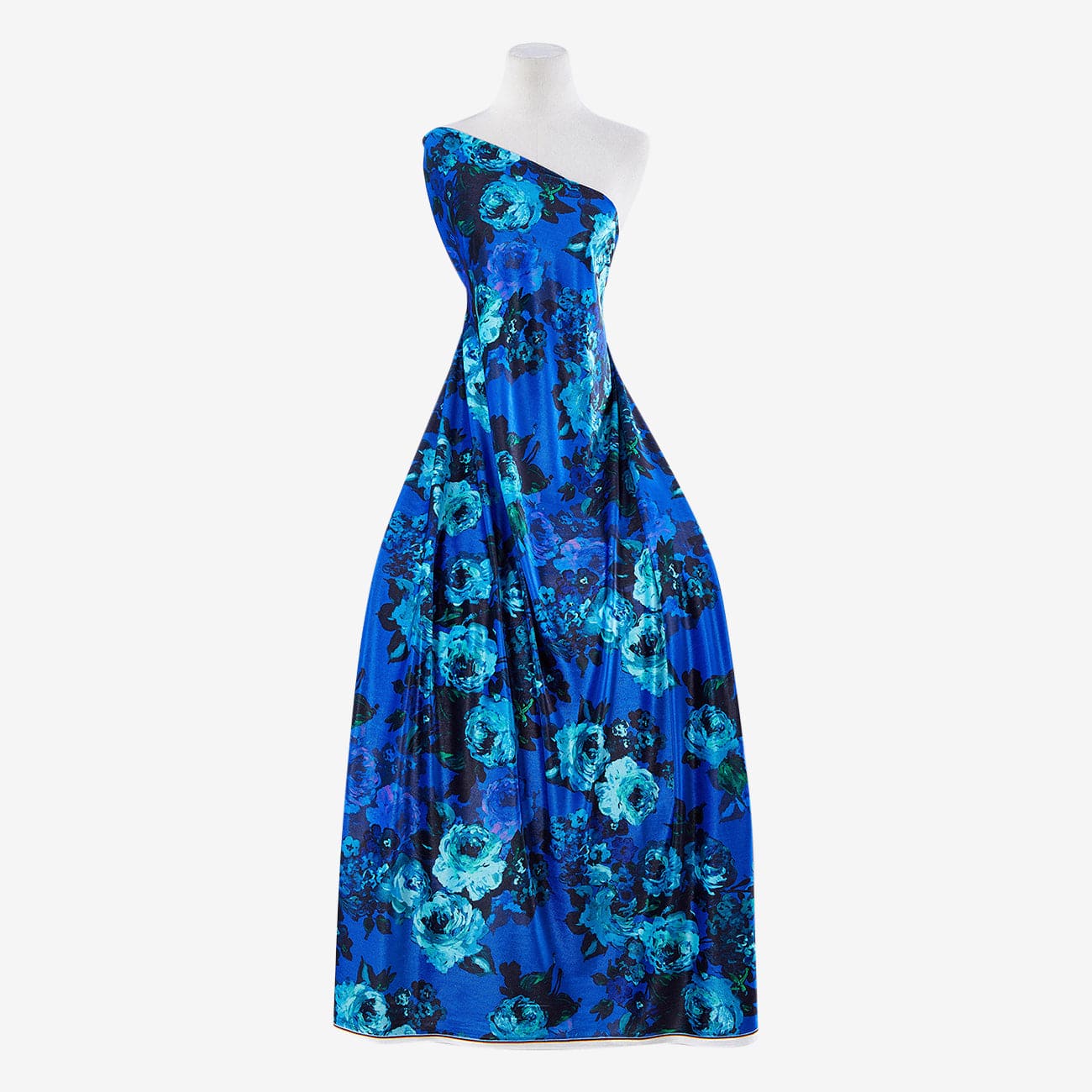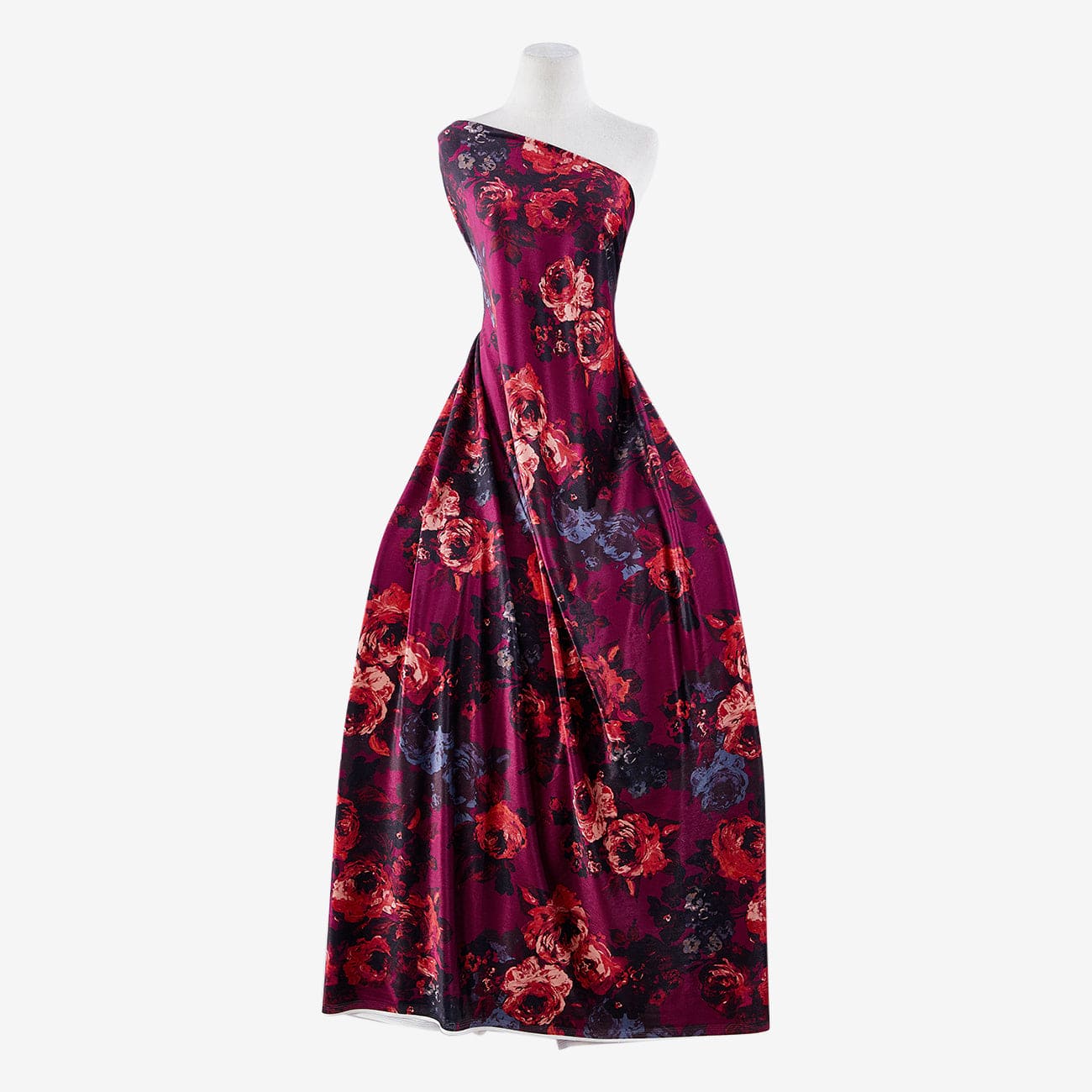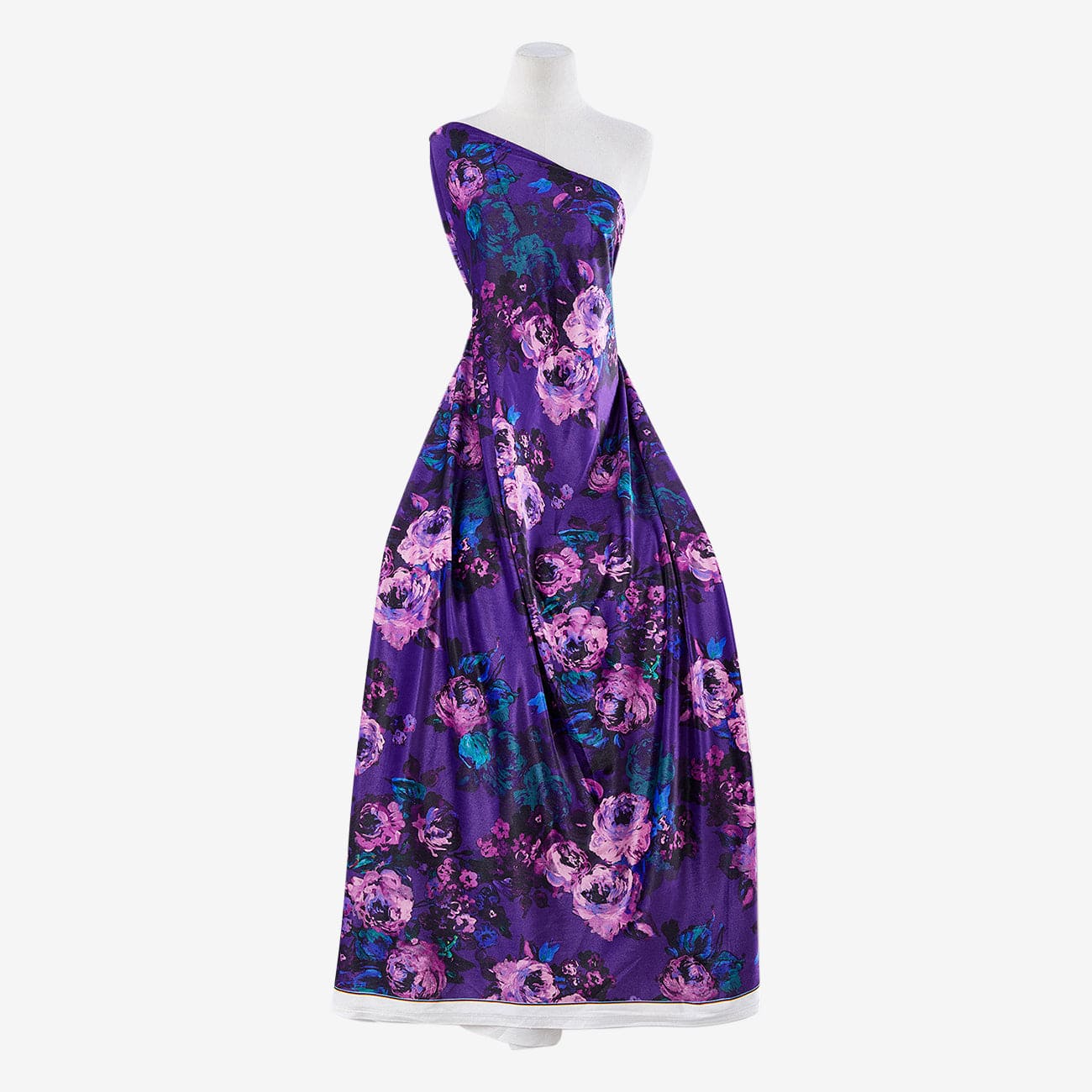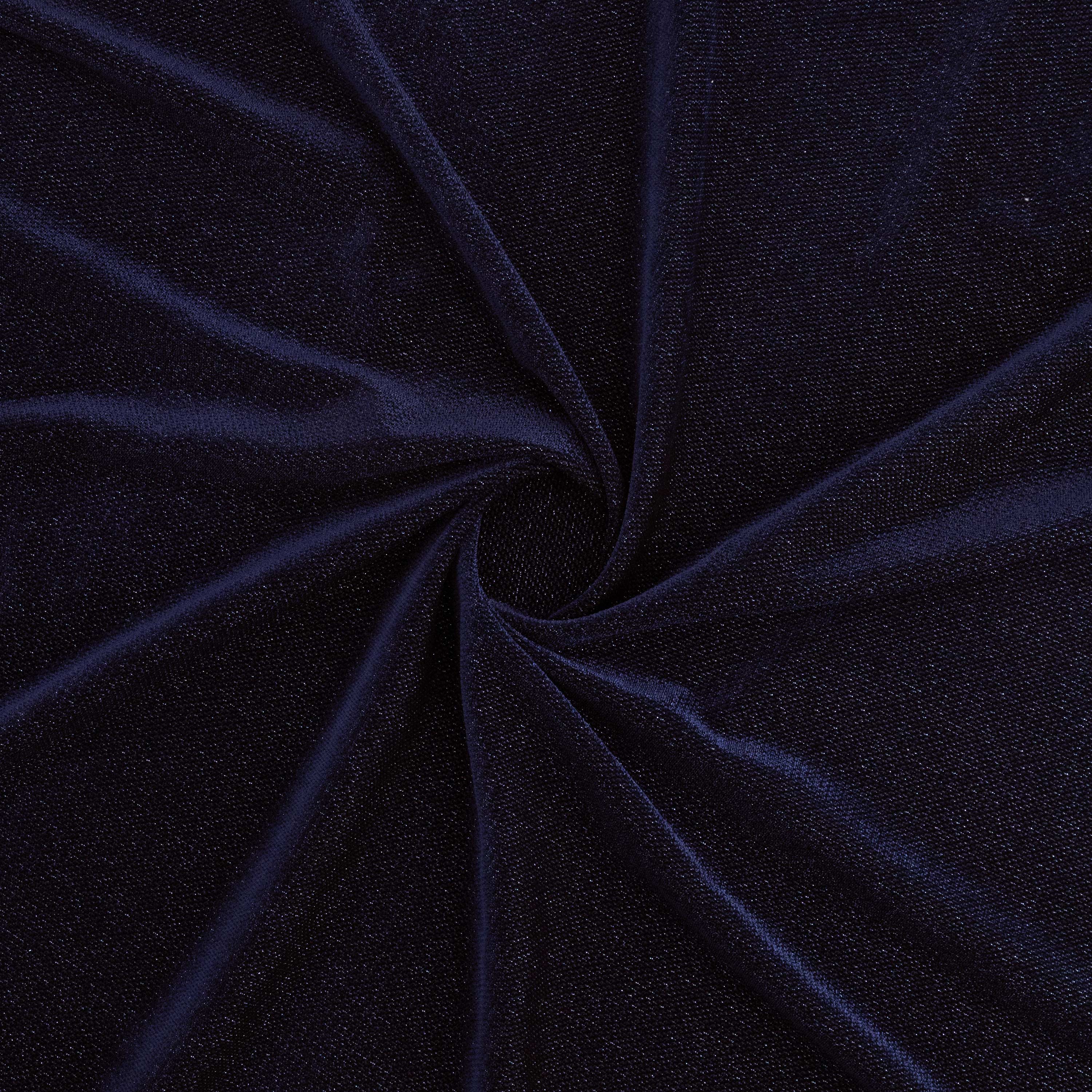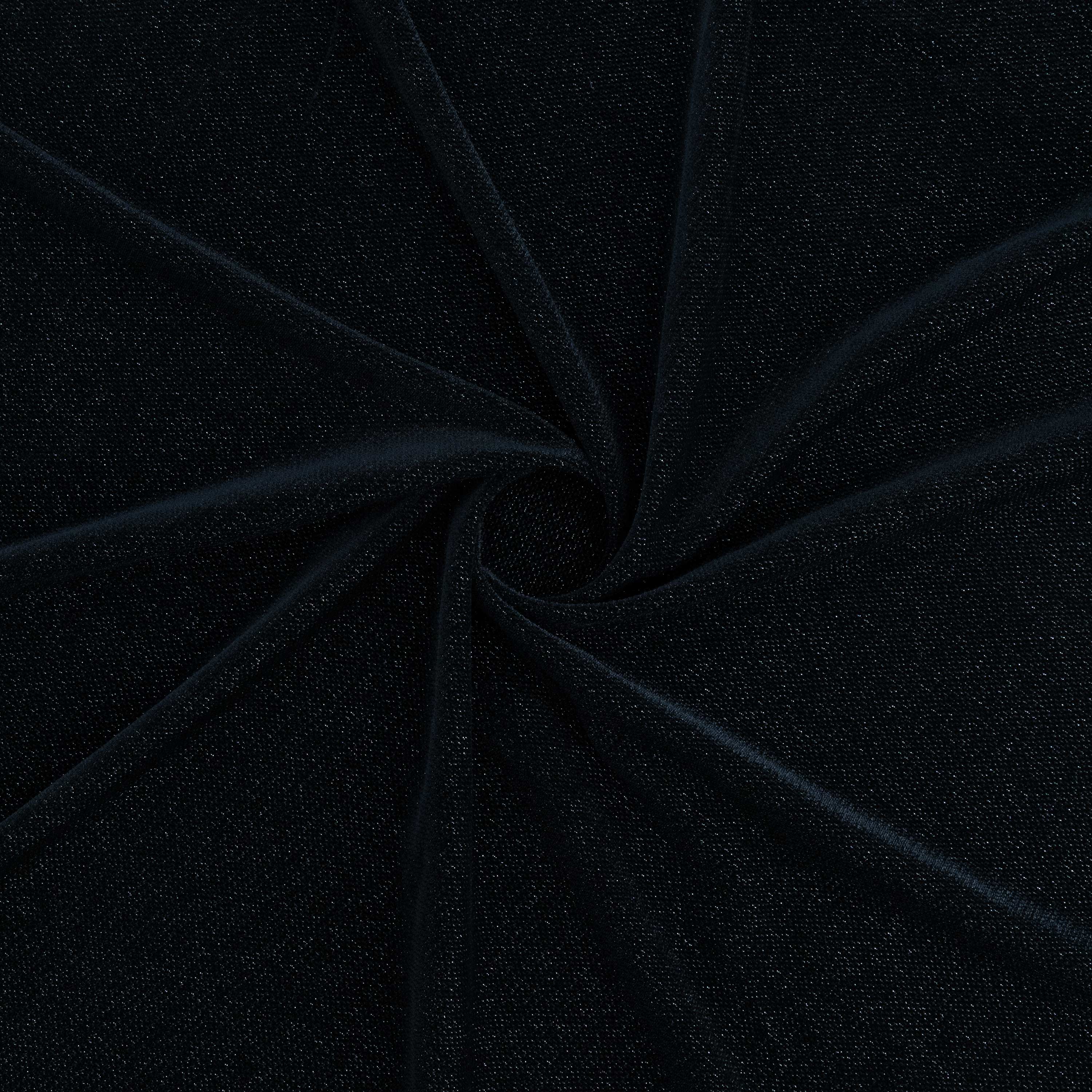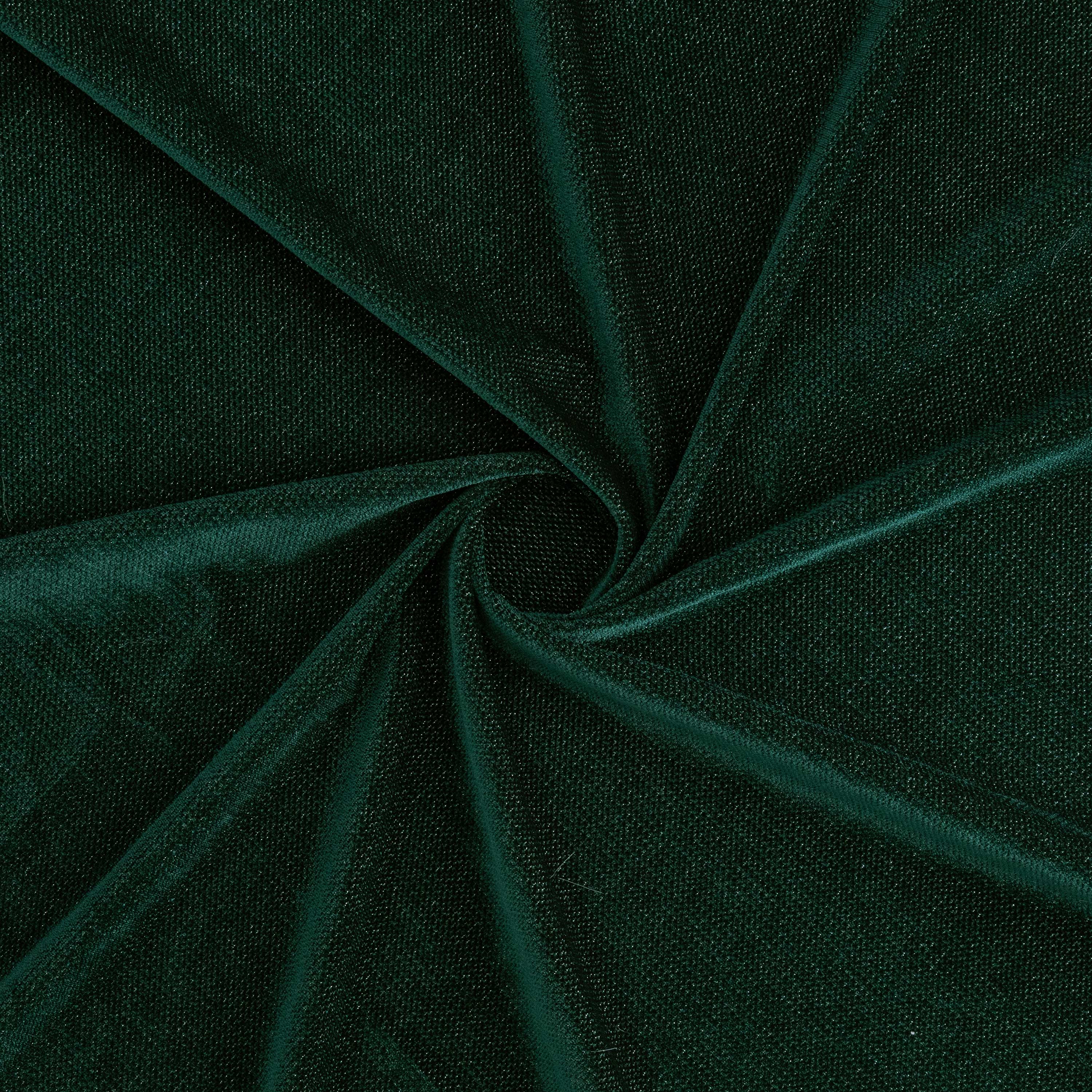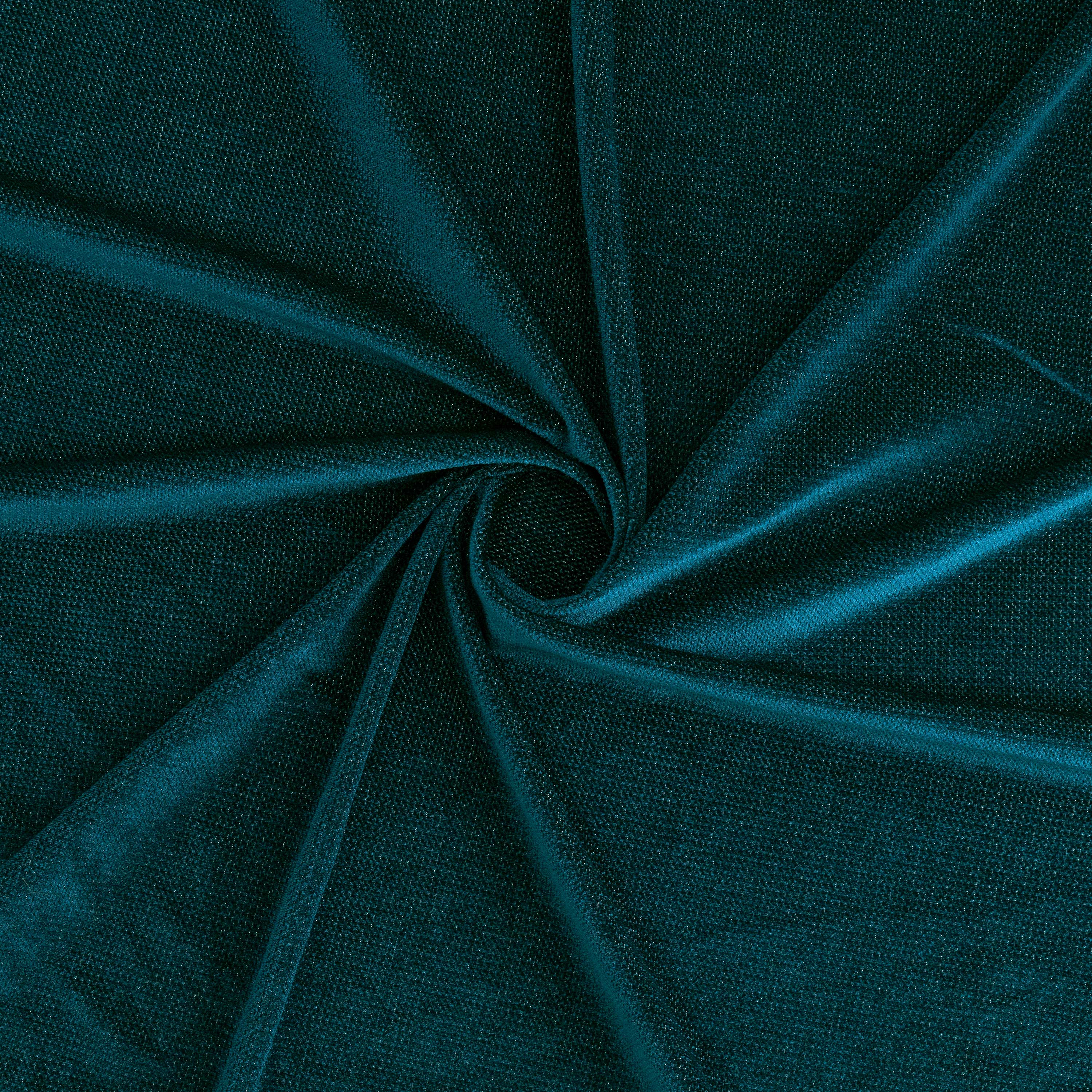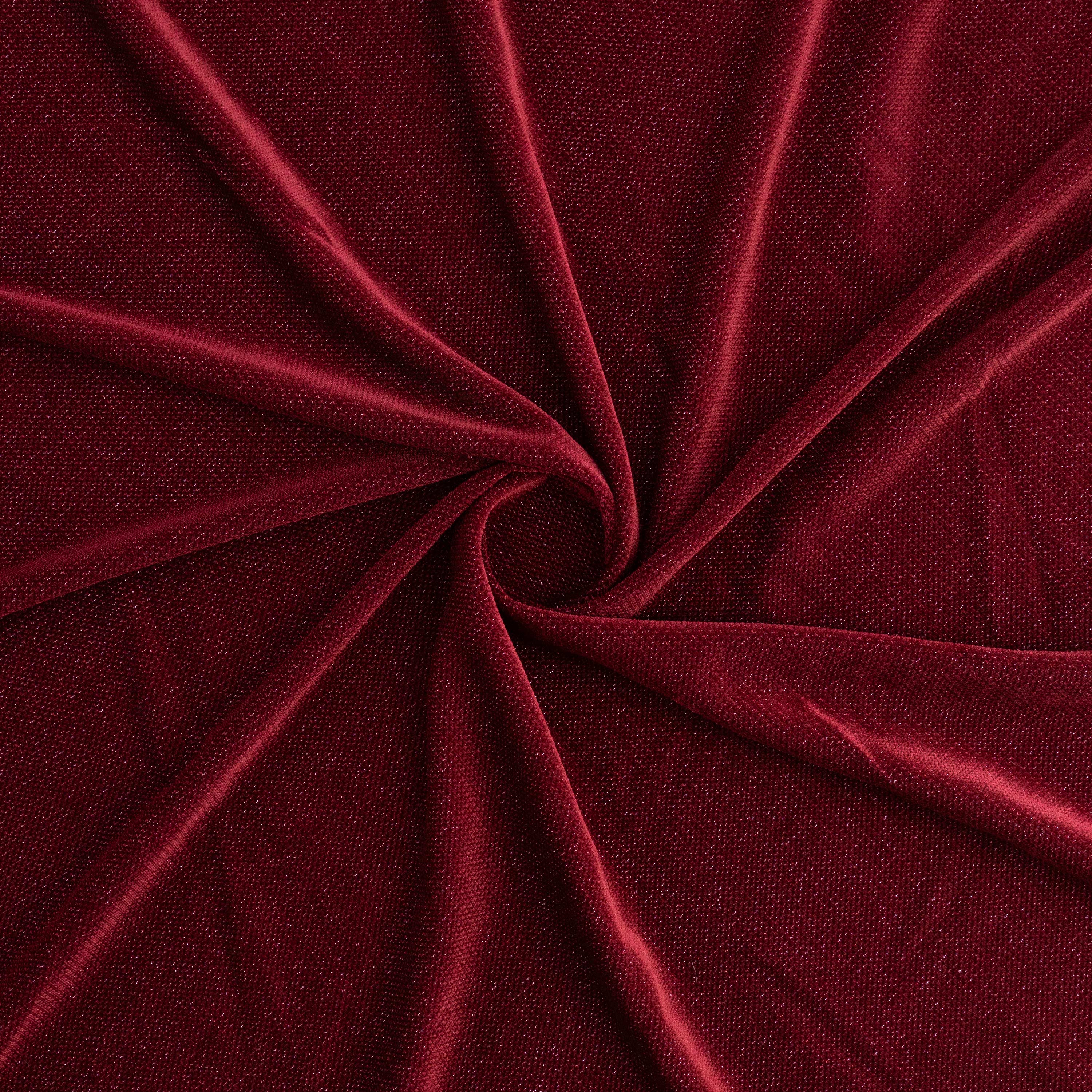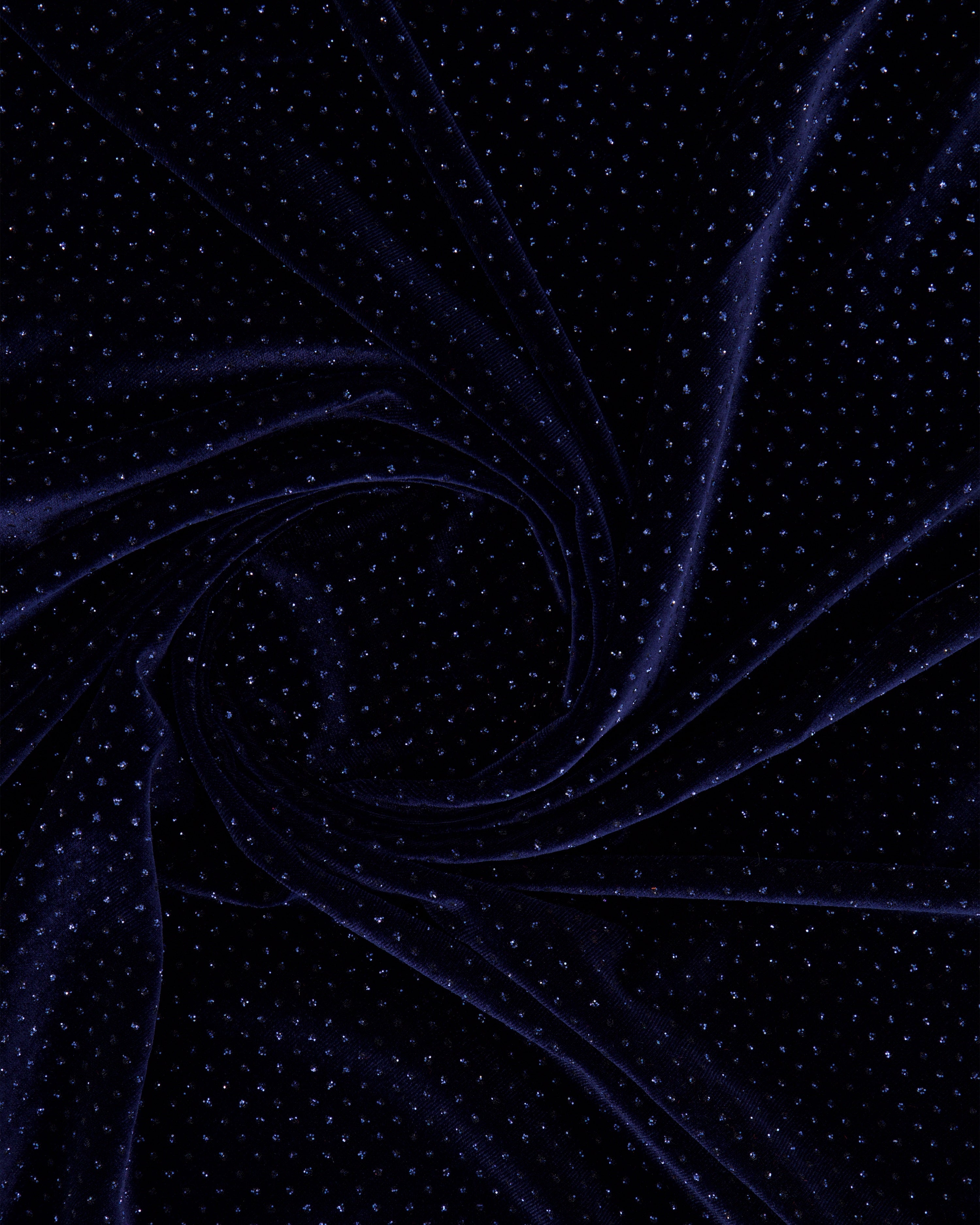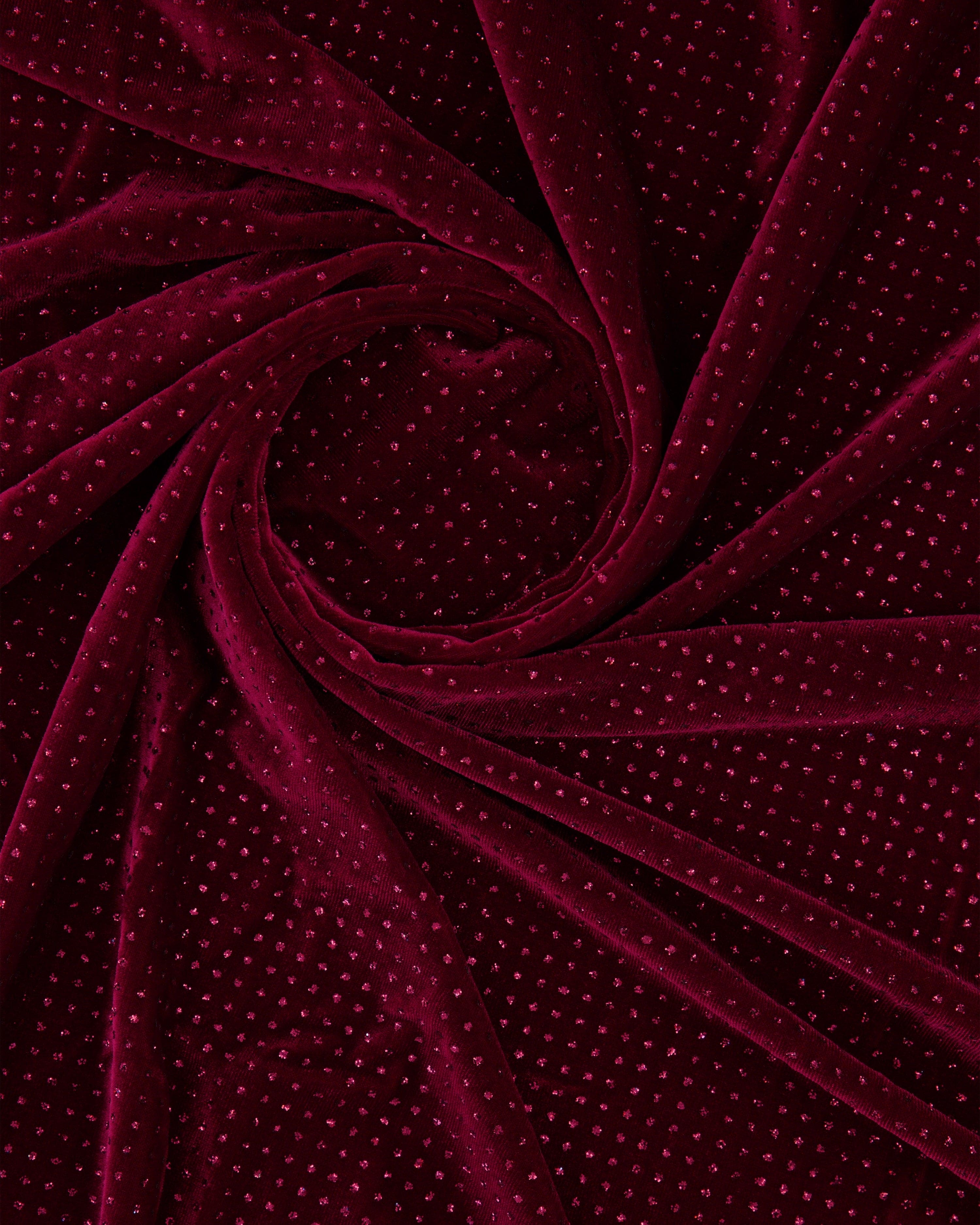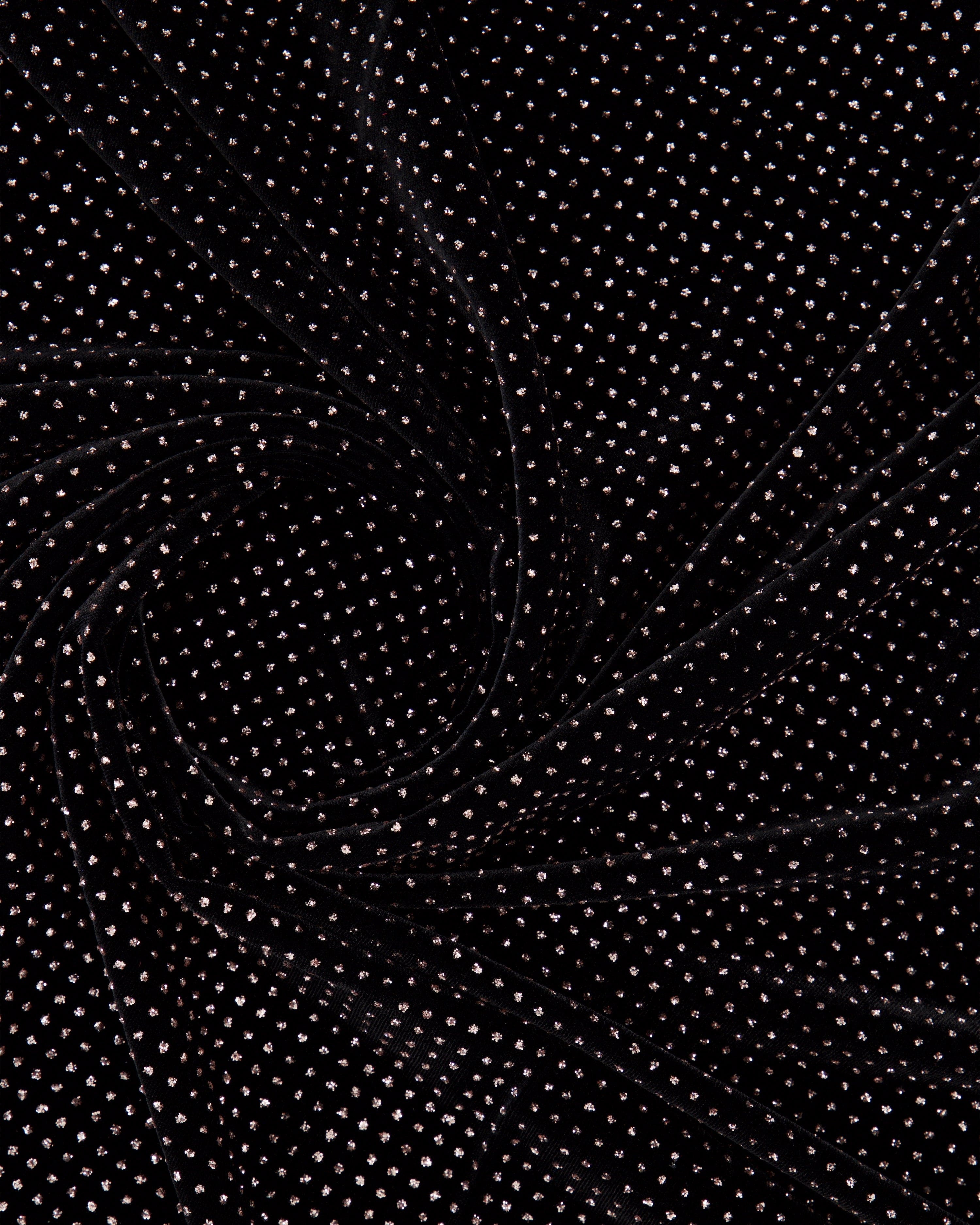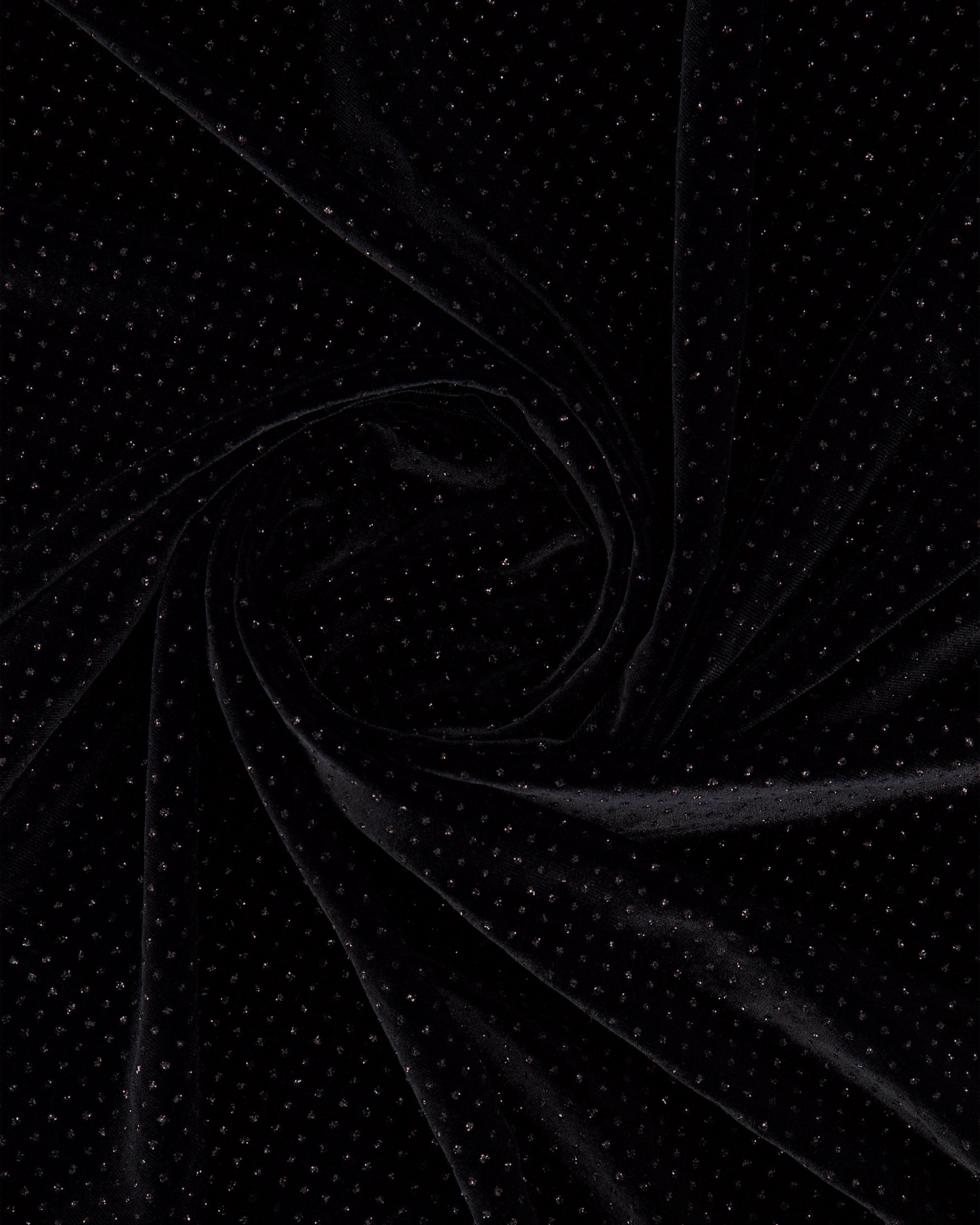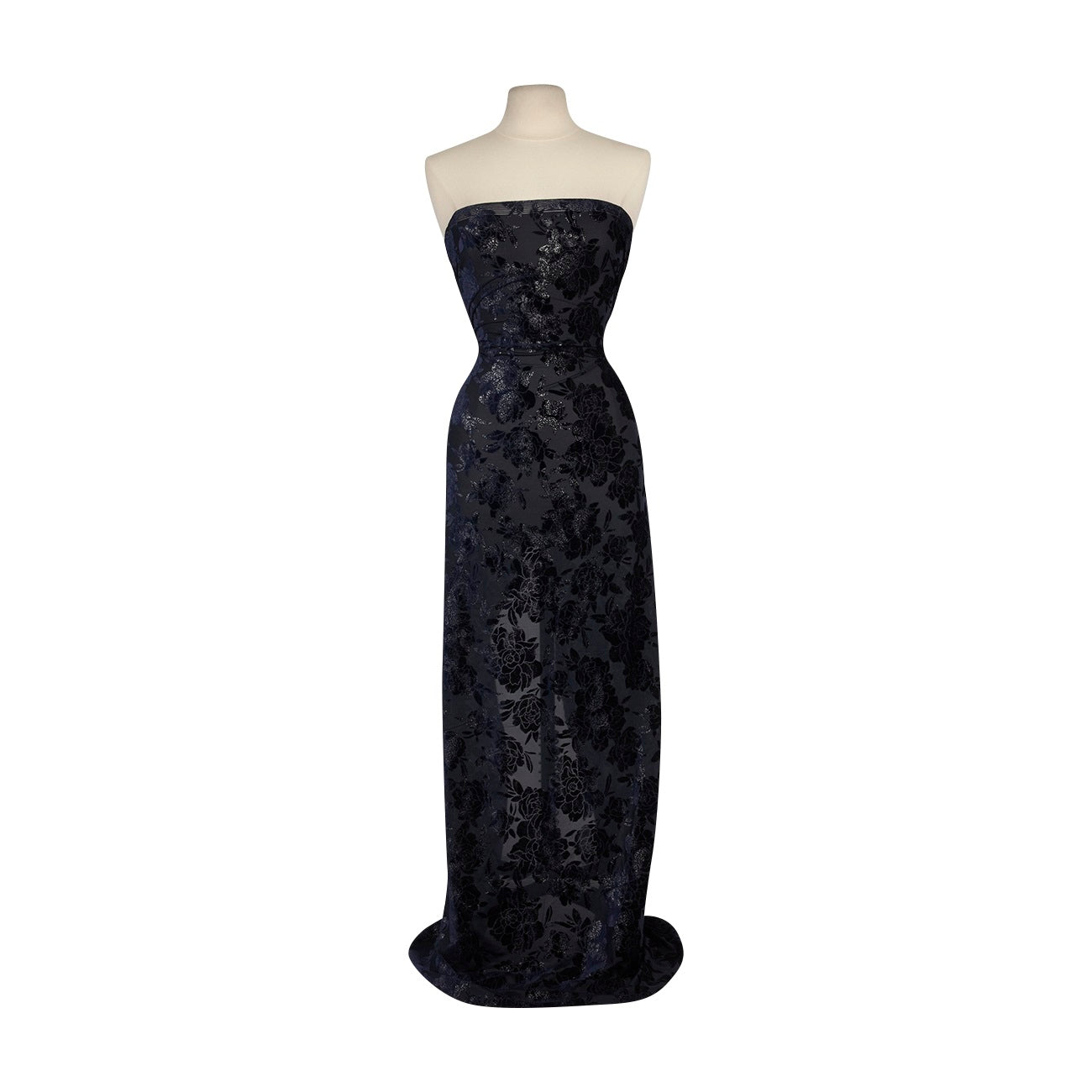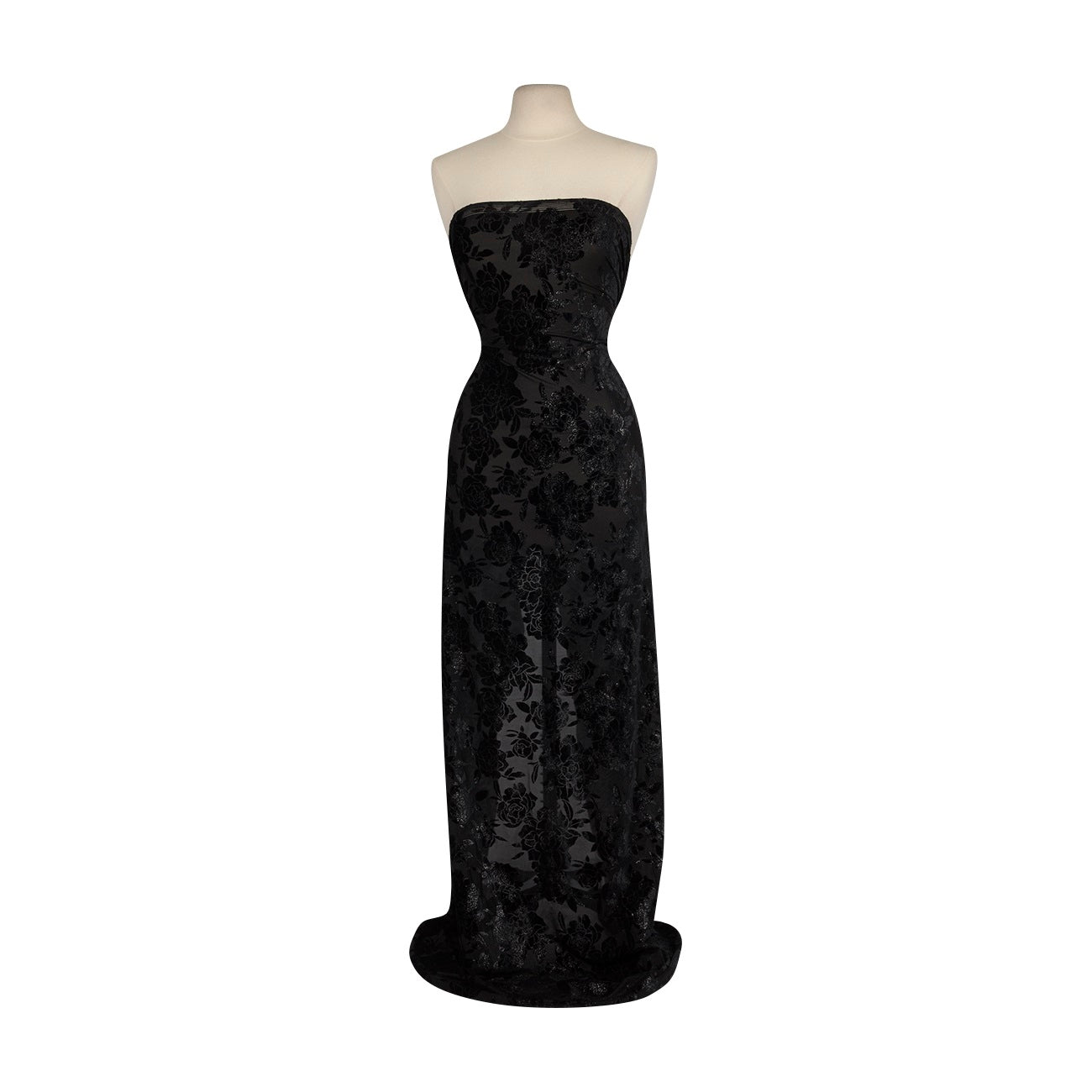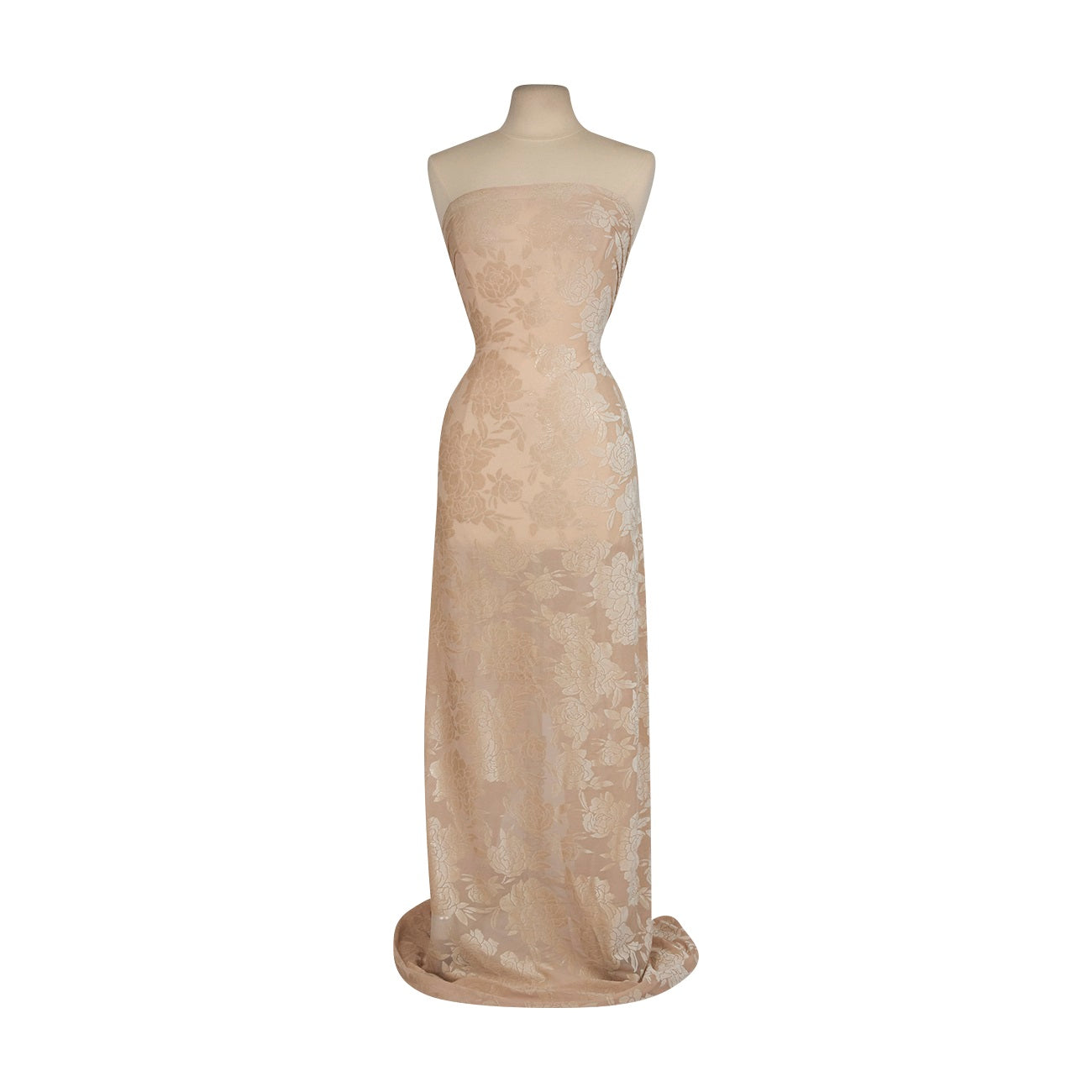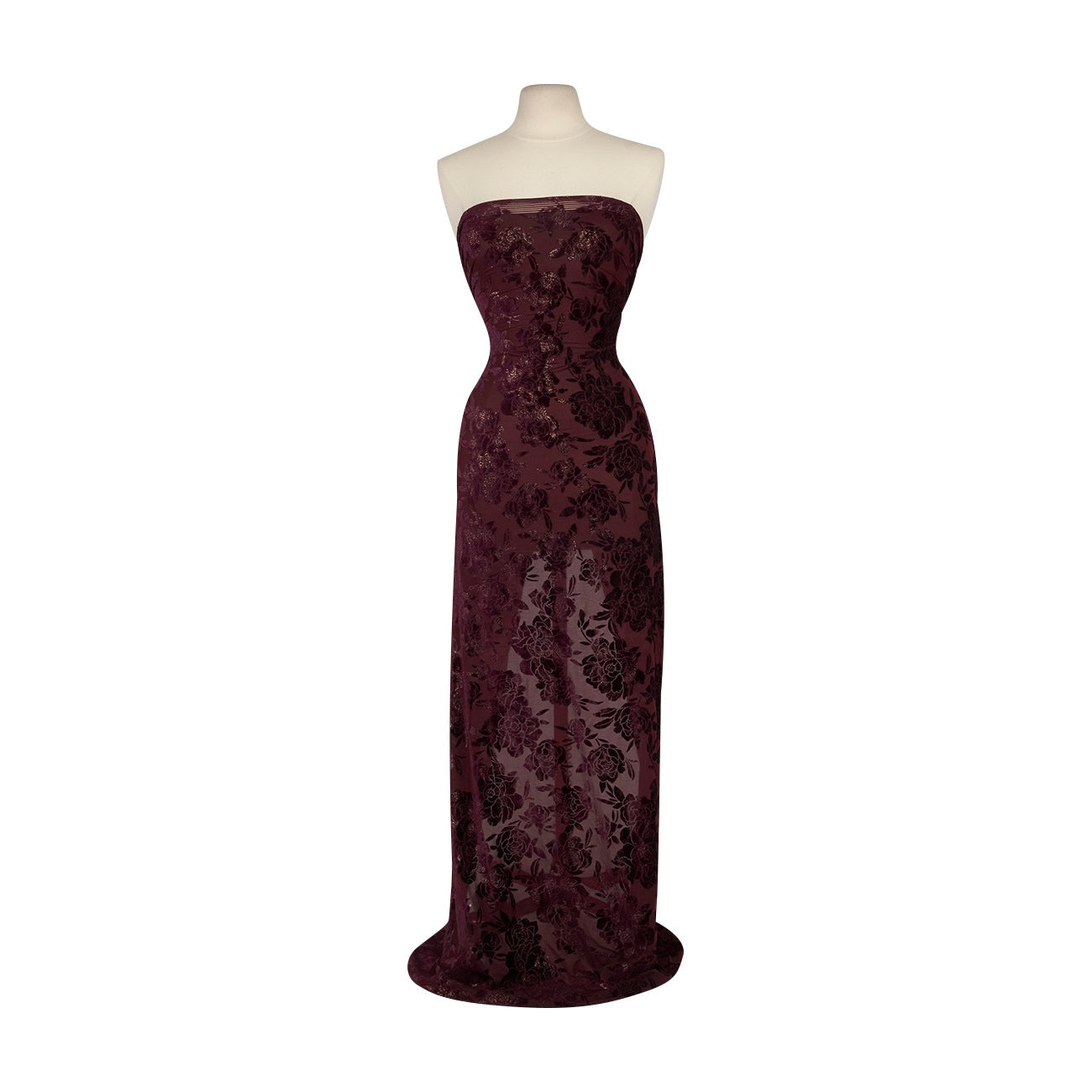How to Use Blue Velvet in Fashion Design
Blue velvet is timeless and adaptable. It’s equally at home in minimalist tailoring, formalwear, or avant-garde collections. The color’s versatility makes it a design favorite across seasons.
Navy Velvet: Classic and Commanding
Navy velvet embodies quiet luxury. It feels professional yet glamorous and reads beautifully in structured garments under any lighting.
Best used for: Formalwear, blazers, trousers, or stagewear
Recommended construction: Woven rayon or polyester velvet around 280–320 GSM
Midnight Velvet: Dramatic and Elegant
Midnight velvet sits deeper than navy, offering a near-black tone with elevated depth. The finish catches light in subtle waves, perfect for high-end gowns and eveningwear.
Best used for: Editorial and red-carpet gowns, suiting, couture pieces
Recommended construction: Dense woven or stretch velvet for fluid movement
Royal Blue Velvet: Rich and Regal
Royal blue makes a strong, photogenic statement. Its jewel tone shines under spotlights and studio lighting, giving garments depth without excess embellishment.
Best used for: Performance costumes, evening dresses, statement pieces
Recommended construction: Stretch velvet (polyester/spandex) with moderate elasticity
Sapphire Velvet: Modern and Magnetic
Sapphire velvet sits between royal and navy, giving a balanced, cool undertone. It works well in contemporary tailoring or transitional collections.
Best used for: Jackets, wrap dresses, or formal separates
Recommended construction: Midweight woven velvet with a low pile for precision cutting
Powder Blue Velvet: Soft and Ethereal
Powder blue brings gentle elegance to bridal, spring, or resort collections. Its pale tone pairs beautifully with ivory, silver, and pastel accents.
Best used for: Bridalwear, overlays, soft blouses, or children’s apparel
Recommended construction: Lightweight crushed or burnout velvet for delicate drape
Sky Blue Velvet: Fresh and Versatile
Sky blue feels modern and refreshing. It balances vibrancy with approachability, perfect for daywear or layering pieces that transition between seasons.
Best used for: Dresses, accessories, and transitional apparel
Recommended construction: Stretch or velour knit for comfort and ease
Teal Velvet: Bold and Dimensional
Teal velvet introduces depth with a hint of green undertone. The color adds intrigue to outerwear and contemporary separates, often used as a sophisticated alternative to traditional navy.
Best used for: Coats, structured dresses, and statement blazers
Recommended construction: Medium-weight woven or velour blend
Why Choose Blue Velvet
Blue velvet balances drama and subtlety in a single fabric family. Its nap reflects light differently depending on direction, creating a natural gradient that gives garments visual dimension. Available in both stretch and woven constructions, blue velvet adapts to formalwear, menswear, eveningwear, and stage design with ease.
Weights range from 180 to 320 GSM, with standard 58–60 inch widths for efficient pattern cutting. The polyester and rayon blends retain color vibrancy while providing durability and comfort. For designers, blue velvet offers both creative range and production consistency.
Designers often pair green velvet fabric with sapphire and teal for earthy balance, or layer purple velvet fabric to amplify blue’s luminous undertones. For dramatic contrast, integrate red velvet fabric, or anchor your design with the refined depth of black velvet fabric.
Fabric Types and Use Cases
Stretch Velvet (polyester/spandex) — Ideal for body-hugging dresses, stagewear, and evening gowns
Woven Velvet (rayon or polyester blends) — Perfect for tailoring, blazers, or outerwear
Crushed or Panne Velvet — Best for editorial looks, resort collections, and statement eventwear
Burnout Velvet (Devoré) — Adds lightness and texture to sleeves, overlays, or panels
Velour and Knit Velour — Excellent for casual luxe pieces, travelwear, or lounge sets
Mixing Blue Velvet with Other Fabrics
- Combine navy velvet with matte crepe or ponte for refined tailoring.
- Layer powder or sky blue velvet with chiffon or organza for romantic appeal.
- Pair royal or sapphire velvet with satin or metallic jacquard for eveningwear.
- Use teal velvet alongside brocade or suiting twill for modern contrast.
- Build monochromatic depth by layering several blue tones within one collection.
- Contrast with Black Velvet Fabric for sharp tailoring or eveningwear that plays with tone and texture.
How to Choose the Right Velvet
- Silhouette: Woven velvet offers structure for suiting or gowns; stretch velvet drapes and moves with the body.
- Weight: Choose lighter weights (180–220 GSM) for soft layering, and midweights (260–320 GSM) for sculptural silhouettes.
- Cutting: Always align the nap in one direction to maintain consistent tone and sheen.
- Needles: Use a microtex needle for woven styles or a stretch needle for knits.
- Care: Hand wash or dry clean. Press gently from the wrong side on a padded surface to protect pile and color integrity.
Order FREE swatches to preview texture, tone, and drape under studio or natural lighting. All blue velvet fabrics are available by the yard and in stock—ready to ship for sampling, design, or full-scale production.
FAQ
Navy and sapphire wovens create timeless structure with rich color payoff.
Royal blue stretch velvet offers flexibility and dramatic visual impact under stage lighting.
Yes. Powder and sky blue velvets are elegant for layering, bridesmaid pieces, or soft tailoring.
No. Polyester and rayon velvet blends are naturally resistant to wrinkling and maintain their plush finish with minimal care.

